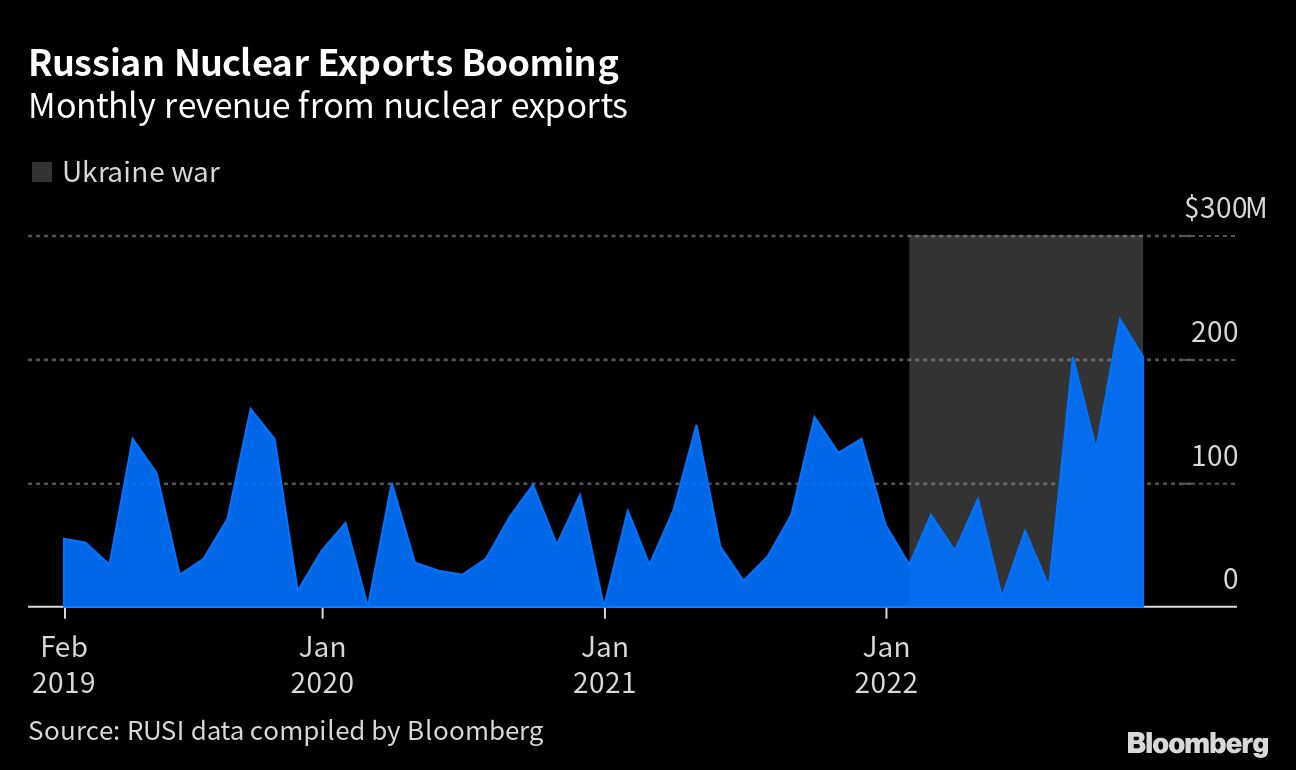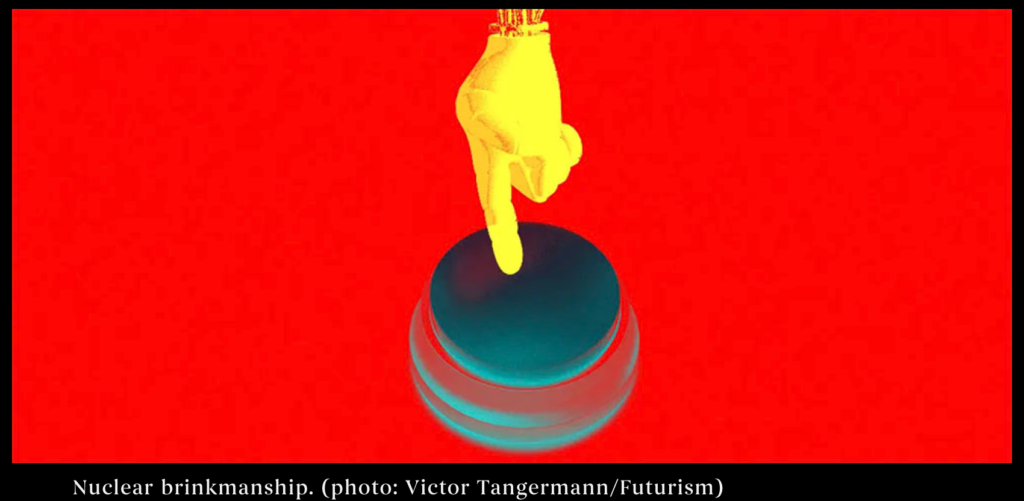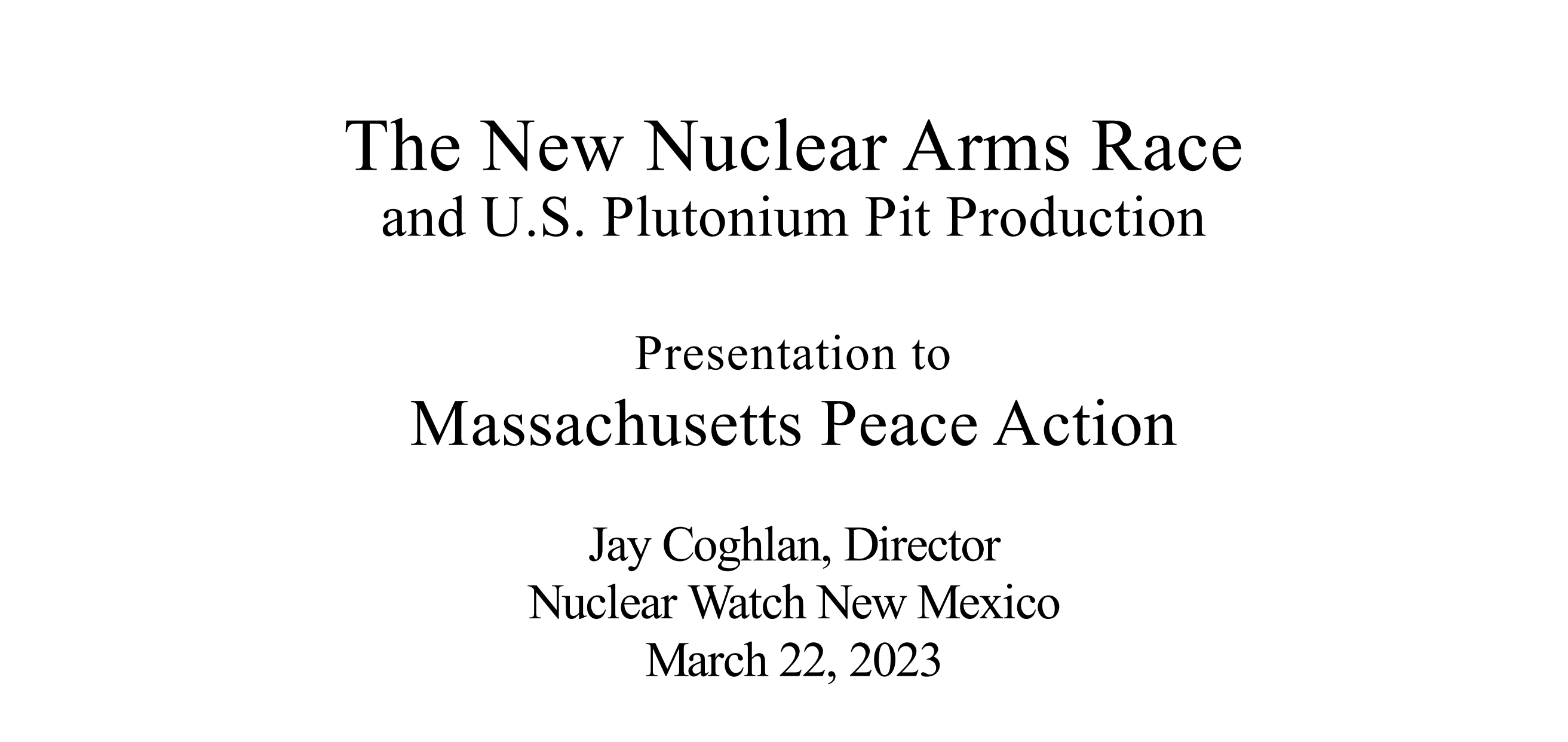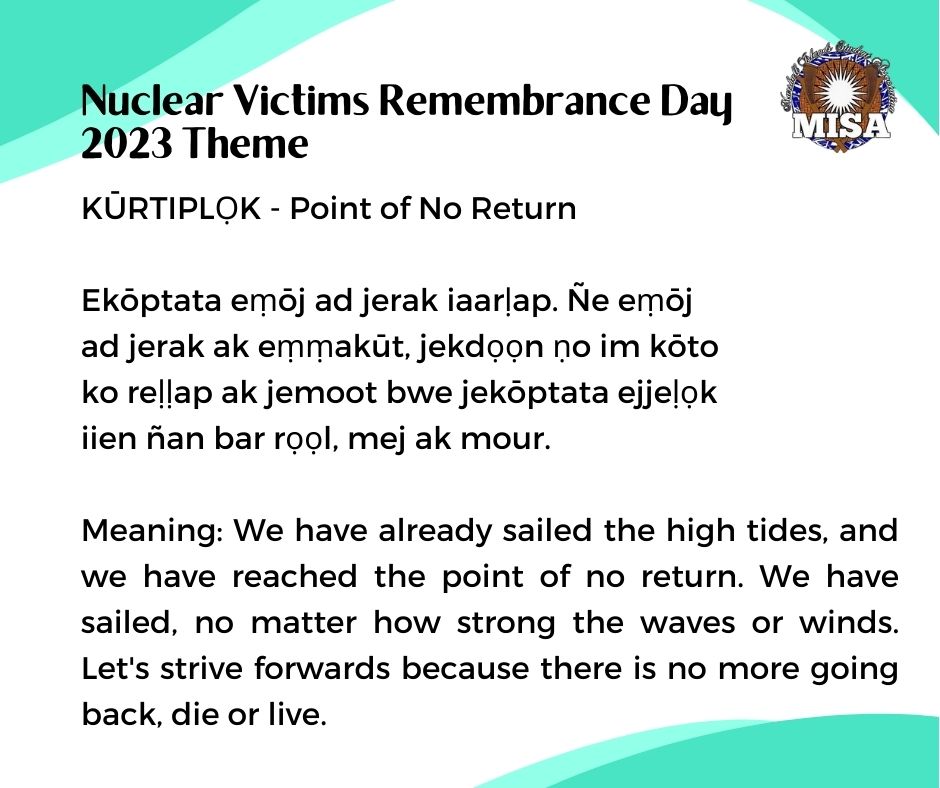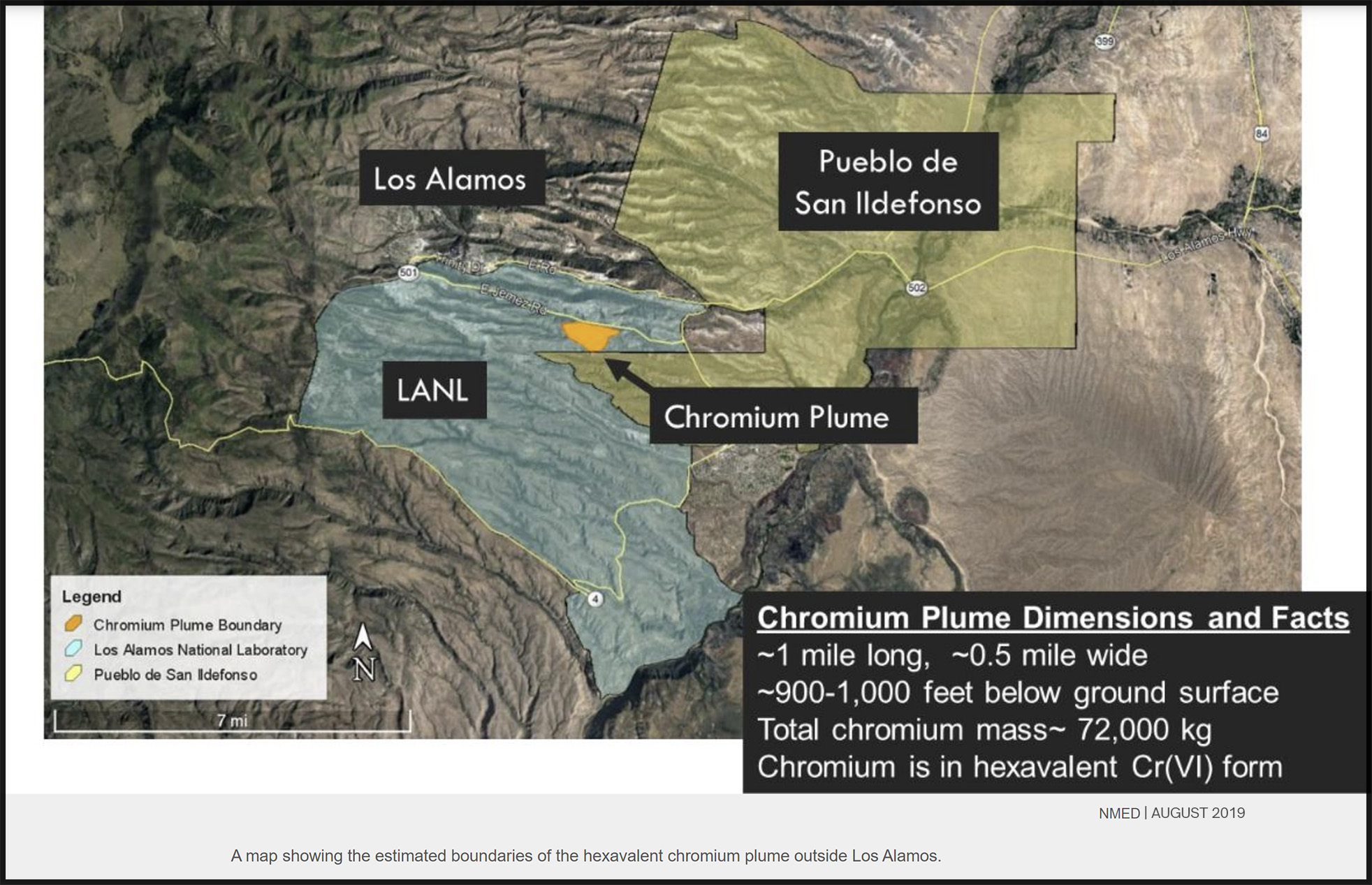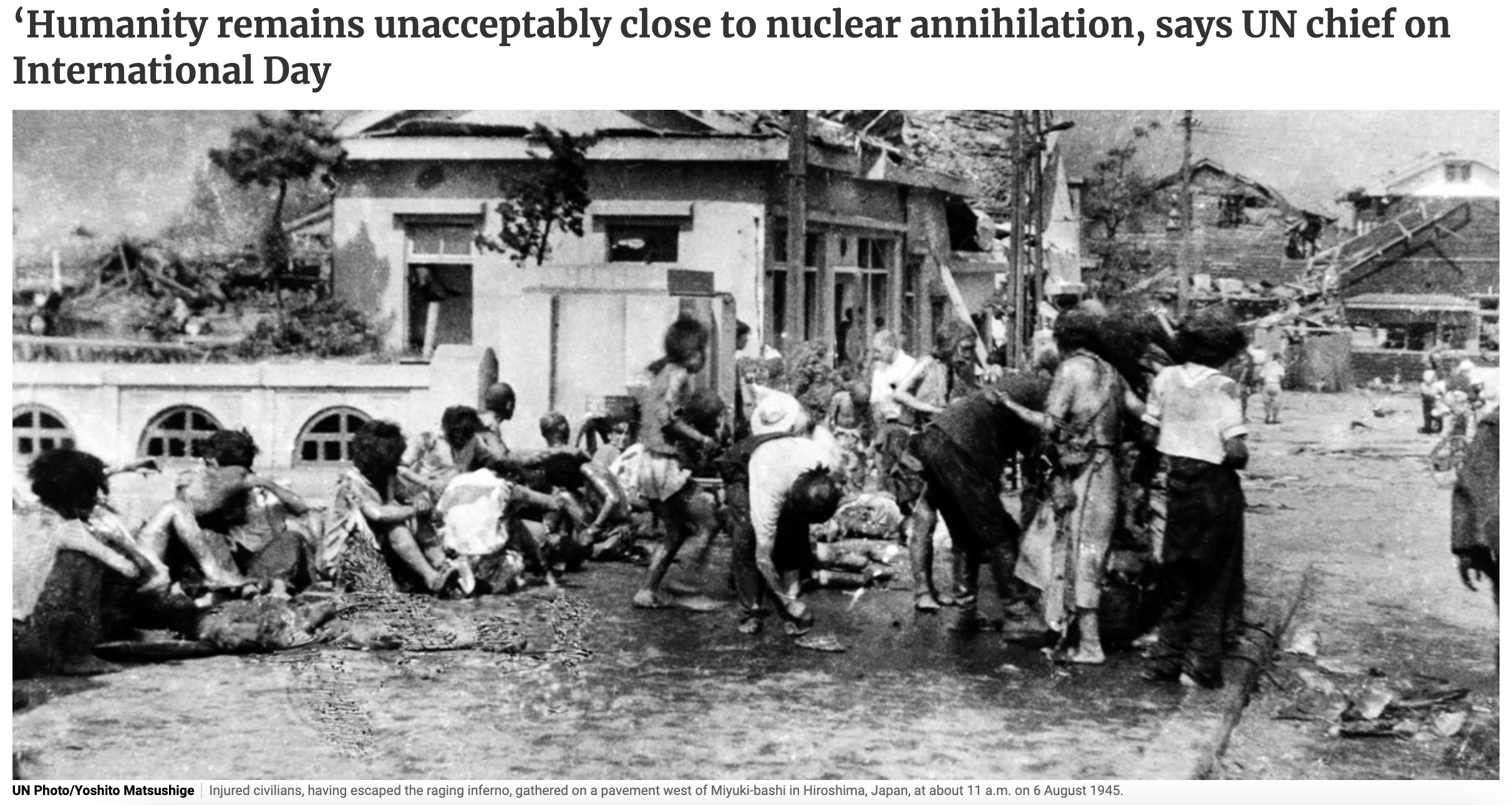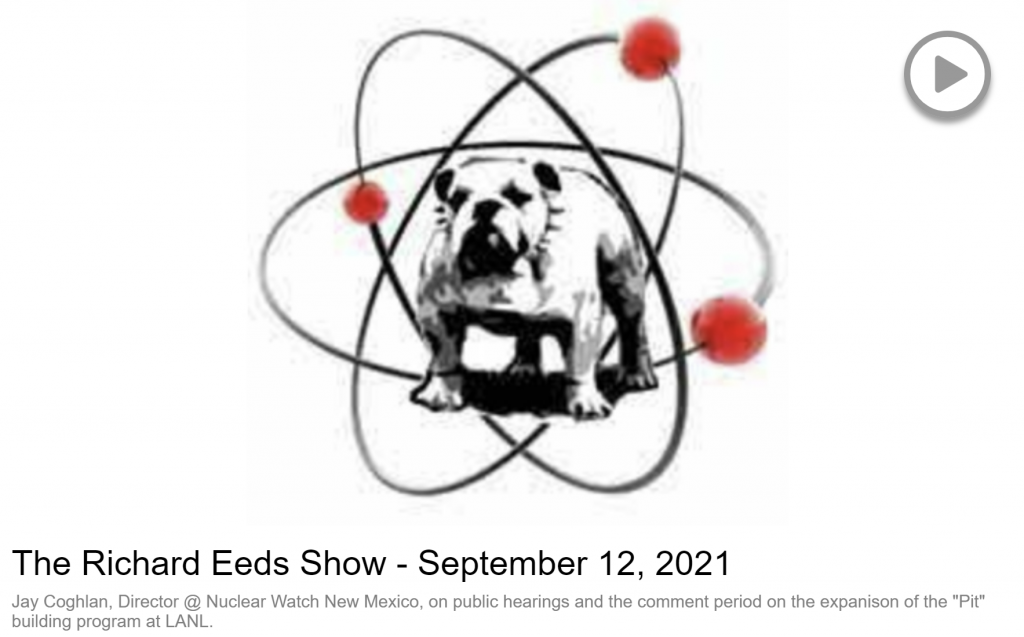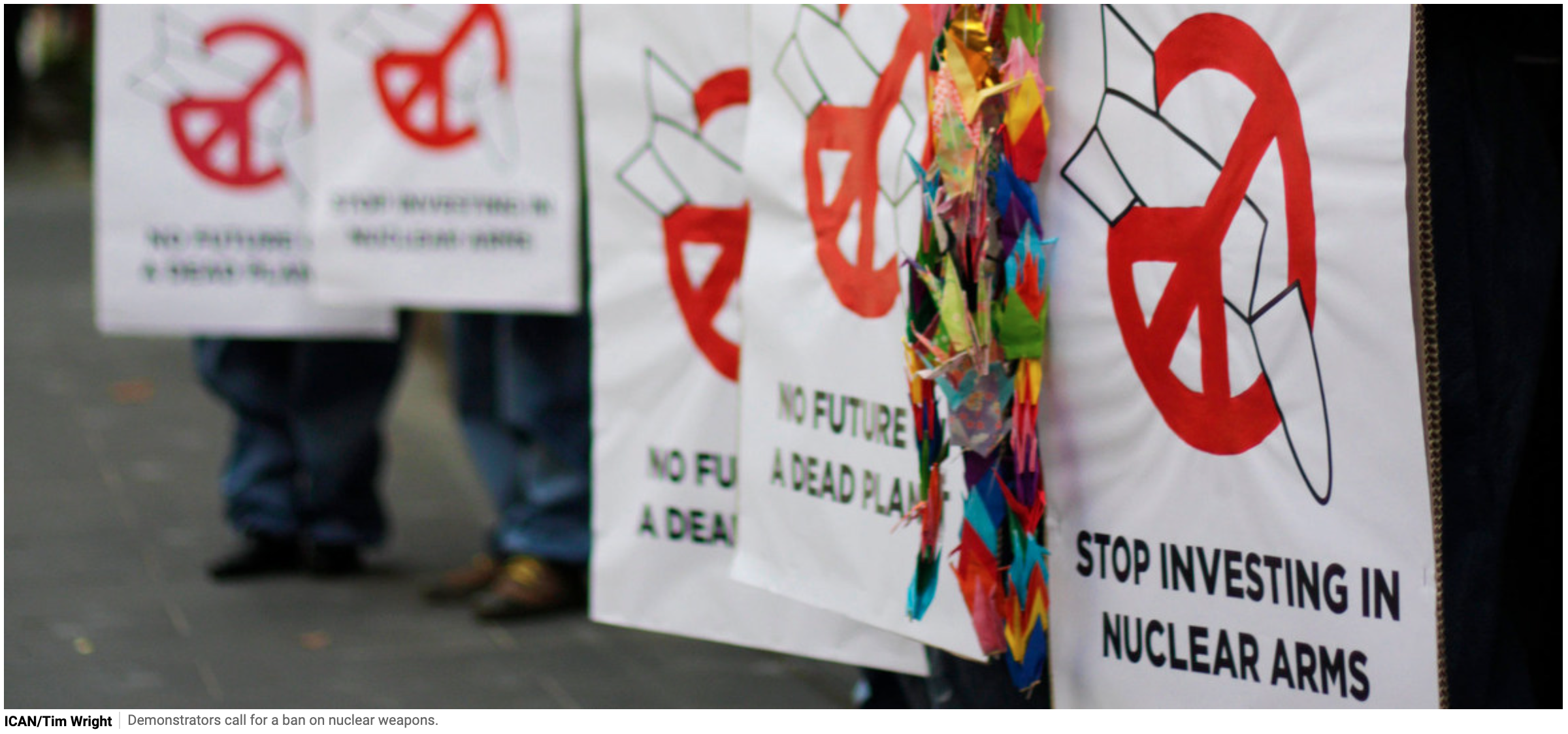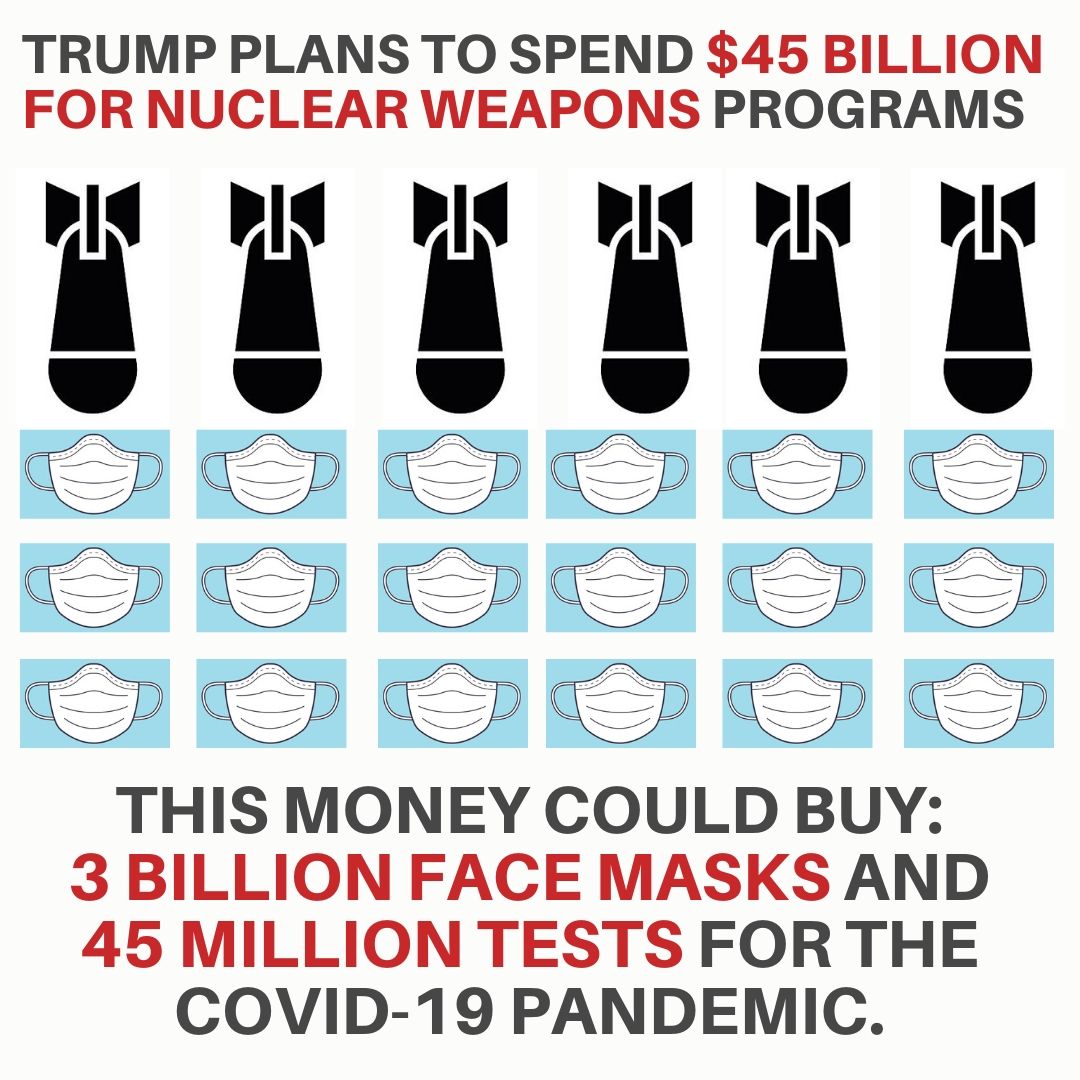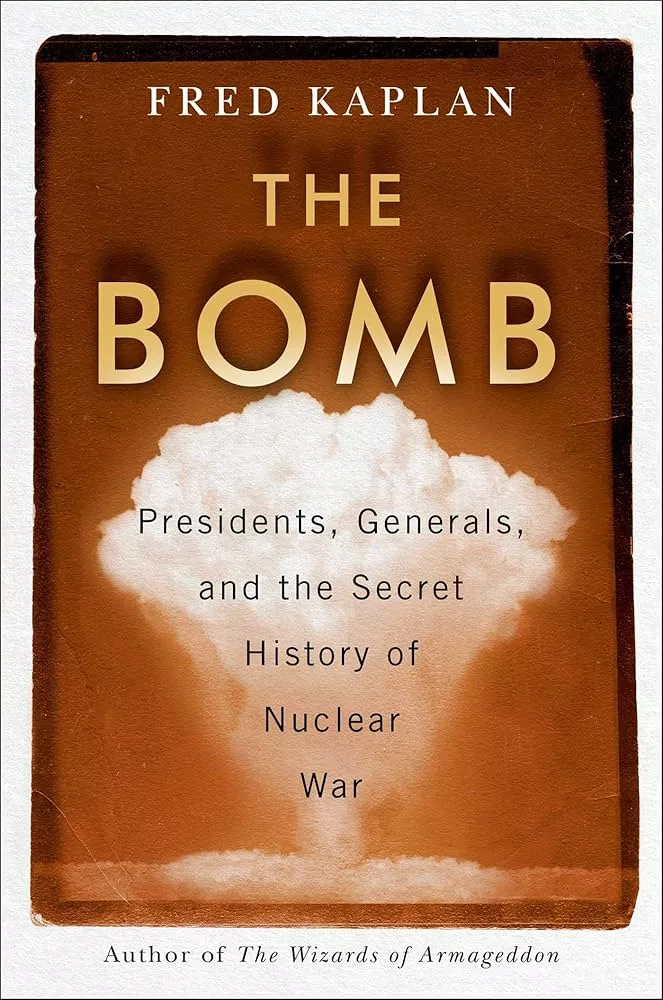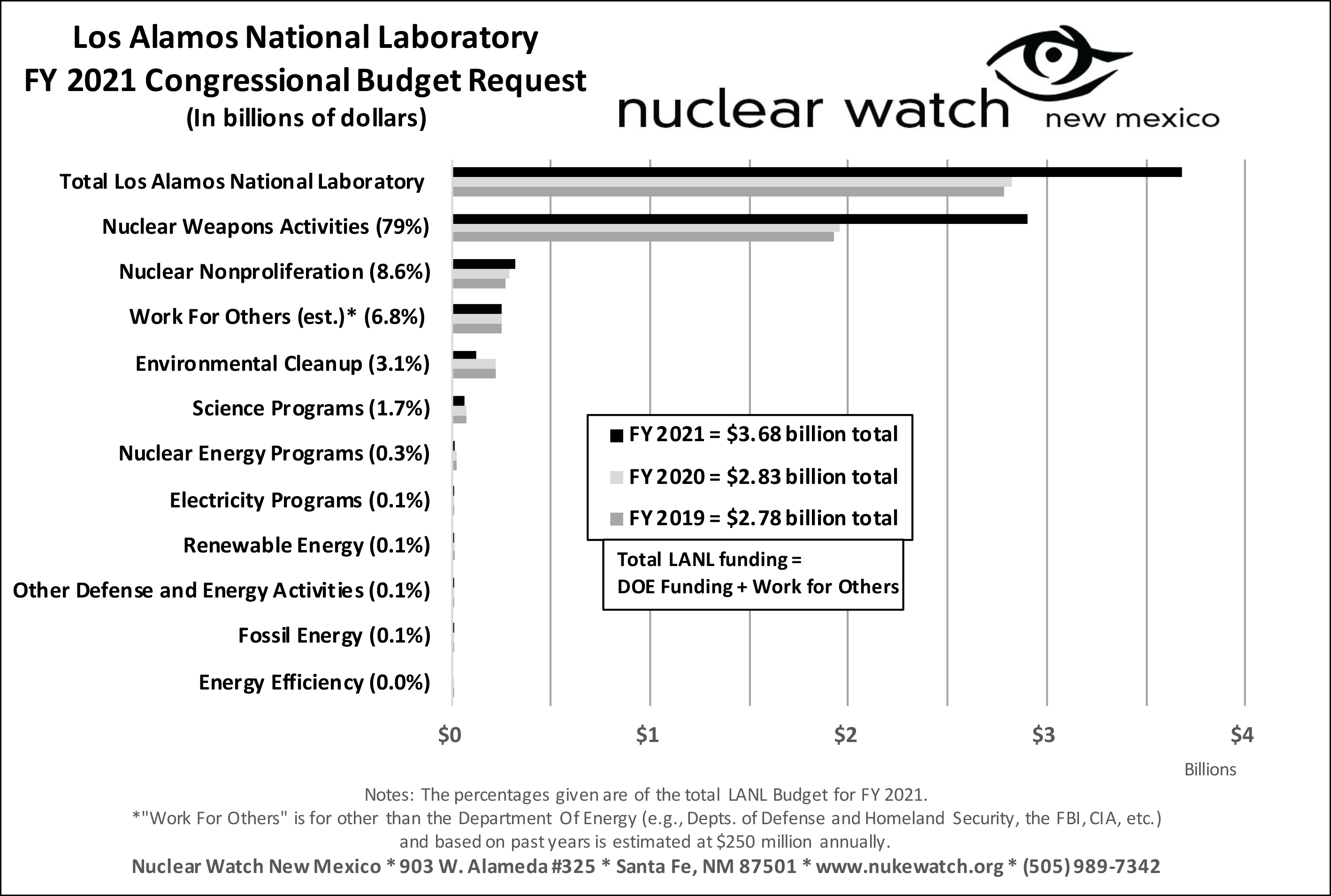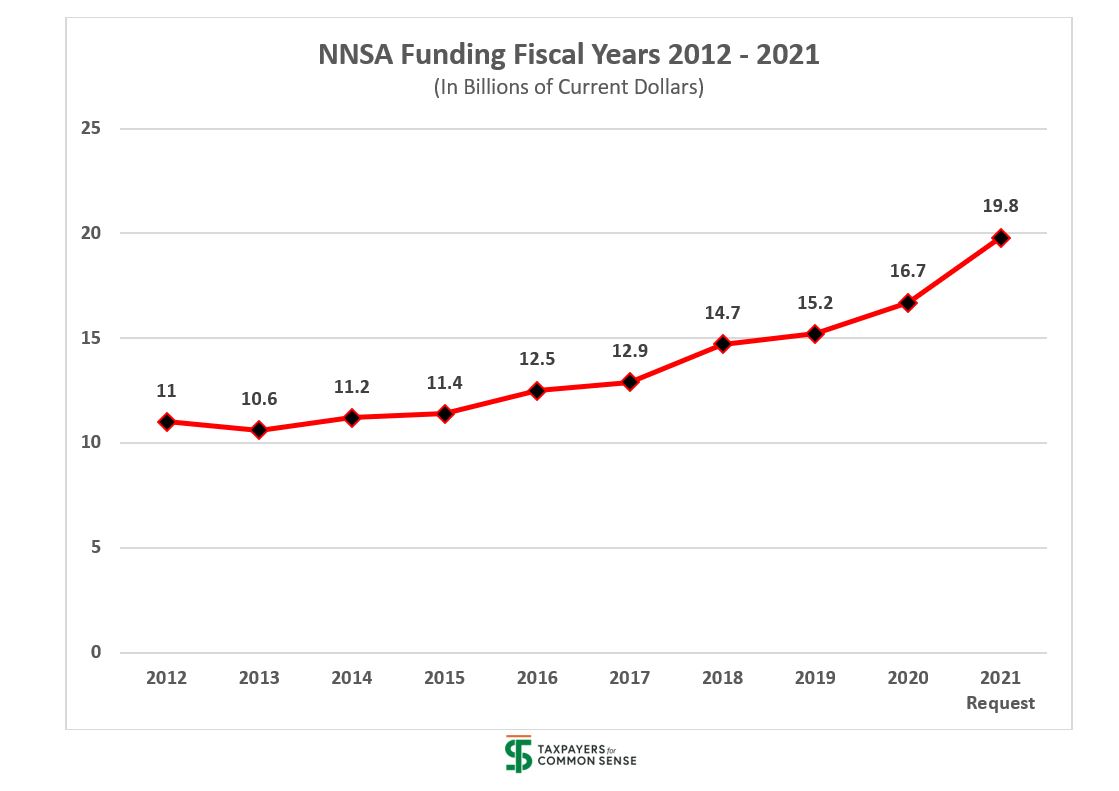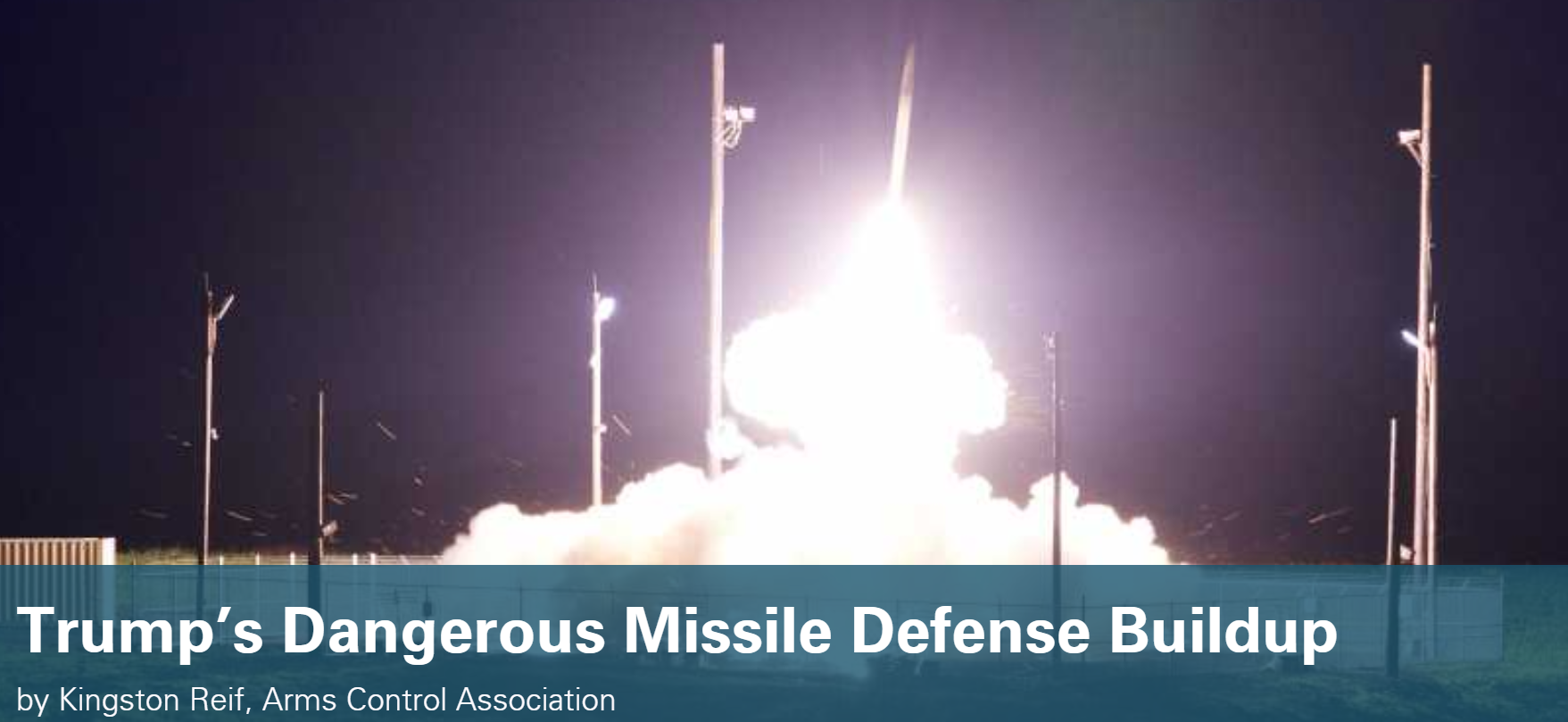2023 News Articles – All Posts
US bombs unlikely to reach underground Iran nuclear site: Report
New Iranian atomic facility near Natanz may be too deep underground to be destroyed by air raids, AP analysis says.
ALJAZEERA | May 22, 2023 aljazeera.com
Near a peak of the Zagros Mountains in central Iran, workers are building a nuclear facility so deep in the earth that it is likely beyond the range of a last-ditch United States weapon designed to destroy such sites, according to experts and satellite imagery analysed by The Associated Press news agency.
The photos and videos from Planet Labs PBC show Iran has been digging tunnels in the mountain near the Natanz nuclear site, which has come under repeated sabotage attacks amid Tehran’s standoff with the West over its atomic programme.
Quiet quarter for US uranium production as momentum builds
All the uranium produced in the USA during the first quarter of this year was from in-situ leach (ISL) operations, according to the latest US government update. But production from conventional mills as well as ISL looks set to ramp up over the coming months.
WORLD NUCLEAR NEWS | May 22, 2023 world-nuclear-news.org
.jpg)
Total US production of uranium concentrates, at 2511 pounds U3O8 (0.97 tU), was 75% lower year-on-year and 99% down from fourth-quarter 2022 as no material was produced at Energy Fuels’ White Mesa Mill, the US Energy Information Administration (EIA) said in its quarterly report. All of the quarter’s production came from just three ISL facilities in Wyoming: Nichols Ranch, Ross, and Smith Ranch-Highland.
White Mesa is the only conventional mill in the USA to be classed as “operating” by the EIA. EnergyFuels said in a US Securities and Exchange Commission filing earlier this month that during the first quarter of this year the mill in Utah has focused on rare-earth carbonate production. “During the three months ended March 31, 2023 the uranium recovered from processing monazite ore was retained in circuit and was not packaged as final U3O8 product,” the company said.
ICAN: G7 Hiroshima summit fails to deliver progress on nuclear disarmament
“This is more than a missed opportunity. With the world facing the acute risk that nuclear weapons could be used for the first time since Hiroshima and Nagasaki were bombed, this is a gross failure of global leadership. Simply pointing fingers at Russia and China is insufficient. We need the G7 countries, which all either possess, host or endorse the use of nuclear weapons, to step up and engage the other nuclear powers in disarmament talks if we are to reach their professed goal of a world without nuclear weapons” — ICAN Executive Director Daniel Hogsta
Update 20 May 2023: the G7 leaders have just issued the final communique from their summit in Hiroshima. It claims they have “taken concrete steps to strengthen disarmament and non-proliferation efforts, towards the ultimate goal of a world without nuclear weapons with undiminished security for all” but it doesn’t say what these steps are. That’s because it can’t.
What we got from the leaders’ discussion on nuclear weapons yesterday was a rehash of ideas and proposals that have failed to deliver progress over the past three decades. They did not announce anything new or concrete. They couldn’t even bring themselves to follow the G20 and TPNW member states by condemning all nuclear threats. Instead they reserved their condemnation for Russia’s and North Korea’s threats, which, while justified, fails to acknowledge how the G7’s own nuclear doctrines are based on the threat to use nuclear weapons and so contribute to the acute danger these weapons pose to everyone.
The G7’s detailed statement “G7 Leaders’ Hiroshima Vision on Nuclear Disarmament”, issued on May 19, falls far short of providing any meaningful outcomes for nuclear disarmament. After months of preparation and amid high expectations, the leaders are missing the moment to make the world safer from nuclear weapons, instead of confronting nuclear threats with a concrete, credible plan for nuclear disarmament – like the Treaty on the Prohibition of Nuclear Weapons- they are barely even paying lip service to the horrors of Hiroshima, the first city attacked by nuclear weapons.
LANL Records String of Radioactive Glove Box Breaches
“…A nuclear watchdog group decried this series of breaches, arguing they reflect a systemic problem that’s likely to grow worse as plutonium activity increases with pit production.
“‘It’s just indicative of more problems to come,’ said Jay Coghlan, executive director of Nuclear Watch New Mexico”
BY SCOTT WYLAND, SANTA FE NEW MEXICAN | May 17, 2023 santafenewmexican.com
Los Alamos National Laboratory had five breaches of the glove boxes used to handle radioactive materials in a four-week period, an unusually high number in such a short time.
The lab had three breaches in these sealed compartments at its plutonium facility between late March and mid-April and two more in the following week, according to the most recent reports by the Defense Nuclear Facilities Safety Board, the federal agency that provides recommendations and advice regarding public health and safety issues at Department of Energy defense nuclear facilities.
US releases nuclear warhead data in bid to pressure Russia
“Disclosure under New START Treaty follows Russia’s decision to suspend its participation in the nuclear agreement”
ALJAZEERA | May 16, 2023 aljazeera.com
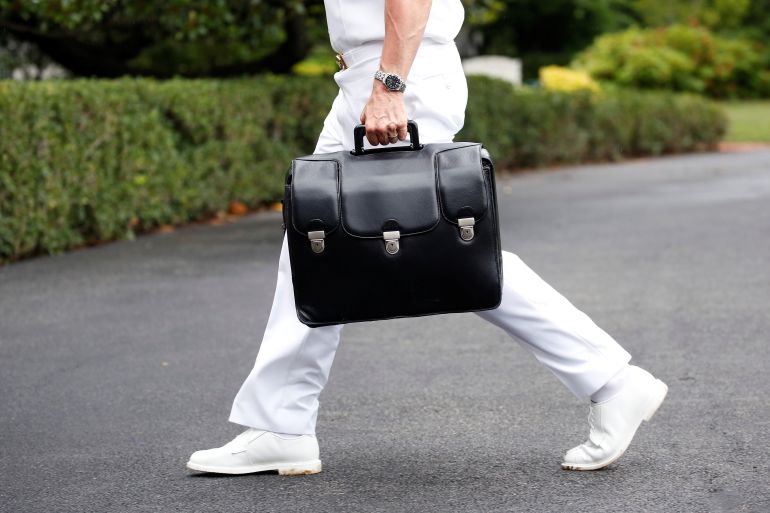
The US Department of State said it was releasing the information publicly as part of its commitments under the New START Treaty, appearing to reverse an earlier decision not to share the data.
New Mexico shouldn’t be the nation’s nuclear dump
“A storage facility cannot be “interim” without a final, designated location. Such a site does not exist. And when it comes to anything nuclear, there’s no such thing as interim or temporary.”
MY VIEW, THE SANTA FE NEW MEXICAN | May 13, 2023 santafenewmexican.com
The federal government’s longstanding failure to build a repository for nuclear waste should not be left for New Mexico to solve.
Yet a decision last week by the Nuclear Regulatory Commission to issue a license to “temporarily” store tons of spent nuclear fuel in New Mexico could mean waste from commercial power plants across the nation will end up buried in the state. It’s bad news for us, of course, but it’s catastrophic for a nation that has never fully come to grips with the reality of nuclear power.
To recap: The commission said it will allow Holtec International to build and operate a nuclear waste storage facility near the Lea and Eddy County line in far southeast New Mexico.
This, despite the clear message from New Mexico’s congressional delegation, governor and statewide elected officials that the state is not interested in being the one-size-fits-all nuclear storage solution for the country. New Mexico already hosts the Waste Isolation Pilot Plant. It stores transuranic waste, a byproduct of the country’s nuclear defense program.
Putin ‘Not Insane’ But May Resort to Nuclear Weapons: Estonian President
Russian President Vladimir Putin is not likely to use nuclear weapons in Moscow’s struggling war on Ukraine, according to Estonian President Alar Karis, though may again flirt with using weapons of mass destruction if the Kremlin finds itself in a “very desperate” situation.
BY DAVID BRENNAN IN TALLINN, ESTONIA, NEWSWEEK | May 13, 2023 newsweek.com
Speaking with Newsweek at the presidential palace, which once served as the seat for both the occupying Soviet Union and Nazi German authorities, ahead of the Lennart Meri Conference in Tallinn, Karis said that while he is “not that worried” that the Kremlin will deliver on its well-worn nuclear threats, he and other Western leaders must prepare for that possibility.
“There are very few people who are close to Putin who actually know. But he is definitely not insane, at least in medical terms. That means he knows exactly what he is doing,” Karis said about the Russian dictator’s mentality. “But there is not much information, you can speculate when Putin starts to change generals that something is not going the way he wants.”
Bloomberg – The Russian nuclear company the West can’t live without
“Cutting the heart out of a nuclear power plant is a surgical procedure that only a few specialists are equipped to handle…”
Bloomberg News | May 13, 2023 mining.com
Among the oldest and most experienced is Germany’s Nukem Technologies Engineering Services GmbH, which for decades has offered its unique services in Asia and Africa and across Europe. Nukem engineers helped contain radiation from the destroyed reactors in Chernobyl and Fukushima. They helped lead the clean-up of an atomic-fuel factory in Belgium. In France, the company devised ways to treat waste from the International Thermonuclear Experimental Reactor.
With researchers predicting that cleaning up after aging nuclear power plants will evolve into a $125 billion global business in the near future, Nukem should be ideally positioned to capitalize on the moment.
Except for one thing: the company is wholly owned by Rosatom Corp., the Kremlin-controlled nuclear giant, putting it in the center of an uncomfortable standoff.
Holtec licensed to store nuke waste in New Mexico despite outcry from elected officials
“This is a bad idea, full stop. Placing a nuclear storage facility in the heart of oil and gas operations is a recipe for ecological disaster and unnecessarily puts New Mexicans at risk,
Bottom line, the world’s most active oil and gas producing field is not the right place for a long-term nuclear waste storage site. Holtec needs to understand that New Mexico is not the nation’s dumping ground and should stop misleading the public about the dangers their proposal presents.” — Land Commissioner-elect Stephanie Garcia Richard
Adrian Hedden, Carlsbad Current-Argus | May 9, 2023 currentargus.com
Federal nuclear officials gave the green light to a project which would store high-level nuclear waste at a facility in southeast New Mexico, despite concerns from state and federal leaders it would expose residents to radiation.
Holtec International, headquartered in Jupiter, Florida, applied in 2017 for a 40-year license to store 8,680 metric tons of spent nuclear fuel rods in 500 cannisters from power plants across the country, using a surface-level facility in a remote desert area near the border of Eddy and Lea counties.
That would be the first of 20 phases of the project that could ultimately include more than 100,000 metric tons in a total of 10,000 canisters holding the waste.
Threats by artificial intelligence to human health and human existence
“AI could harm human health via its impacts on the social and upstream determinants of health through: the control and manipulation of people, use of lethal autonomous weapons and the effects on work and employment”
By Frederik Federspiel, Ruth Mitchell, Asha Asokan, Carlos Umana, David McCoy – BMJ GLOBAL HEALTH | May 9, 2023 gh.bmj.com
Dr. Ruth Mitchell (IPPNW Board Chair) and Dr. Carlos Umaña (IPPNW Co-President) co-author BMJ Global Health publication, “Threats by artificial intelligence to human health and human existence”. The 5 expert authors state, “AI could harm human health via its impacts on the social and upstream determinants of health through: the control and manipulation of people, use of lethal autonomous weapons and the effects on work and employment”.
NRC starts special inspection of New Mexico uranium facility
Associated Press | May 9, 2023 krqe.com
EUNICE, N.M. (AP) — The Nuclear Regulatory Commission (NRC) on Monday began a special inspection at the Urenco USA uranium enrichment facility in southeastern New Mexico following an incident last month.
NRC officials said the April 21 incident involved the operation of a crane near a building that handles uranium hexafluoride without the required safety controls present.
They said there are concerns about safety protocols at the site and that warrants additional NRC inspection as it involves a breakdown of controls designed to prevent chemical, radiological and criticality hazards, which are the primary concern at U.S. fuel cycle facilities.
U.S. sees a new era of nuclear risk dawning in China-Russia cooperation – Japan Times
“To avert miscalculations, nuclear-weapons states must engage on existing and potential threats, from Iran’s atomic ambitions to the use of artificial intelligence for decision-making during crises,” — Pranay Vaddi, the National Security Council’s senior director for arms control.
JAPAN TIMES | May 6, 2023 japantimes.co.jp
 An undated image released in July 2021 shows what researchers say are missile silos under construction in the Chinese desert. | 2021 PLANET LABS INC. / VIA AFP-JIJI
An undated image released in July 2021 shows what researchers say are missile silos under construction in the Chinese desert. | 2021 PLANET LABS INC. / VIA AFP-JIJI
The deepening cooperation between China and Russia threatens to overturn decades of international stability in nuclear arms control, according to a top adviser to U.S. President Joe Biden.
“We’re entering a different period,” Vaddi said after talks at the International Atomic Energy Agency. “It requires a little bit of experimentation.”
Assessments that China is expanding its nuclear arsenal, along with Russia’s invasion of Ukraine and its disavowal of arms-control agreements, are adding to concern about an era fraught with new dangers. Unlike the Cold War, when the U.S. and Soviet Union maintained atomic parity and agreed to limit certain types of arms, more nations are developing the technologies and materials needed for weapons of mass destruction.
Never Give Artificial Intelligence the Nuclear Codes – The Atlantic
“AI offers an illusion of cool exactitude, especially in comparison to error-prone, potentially unstable humans. But today’s most advanced AIs are black boxes; we don’t entirely understand how they work. In complex, high-stakes adversarial situations, AI’s notions about what constitutes winning may be impenetrable, if not altogether alien. At the deepest, most important level, an AI may not understand what Ronald Reagan and Mikhail Gorbachev meant when they said, ‘A nuclear war cannot be won.’”
By Ross Andersen – THE ATLANTIC | May 4, 2023 rsn.org
The temptation to automate command and control will be great. The danger is greater.
No technology since the atomic bomb has inspired the apocalyptic imagination like artificial intelligence. Ever since ChatGPT began exhibiting glints of logical reasoning in November, the internet has been awash in doomsday scenarios. Many are self-consciously fanciful—they’re meant to jar us into envisioning how badly things could go wrong if an emerging intelligence comes to understand the world, and its own goals, even a little differently from how its human creators do. One scenario, however, requires less imagination, because the first steps toward it are arguably already being taken—the gradual integration of AI into the most destructive technologies we possess today.
Nuclear Waste Storage in New Mexico Angers State, Cheers Locals – Bloomberg News
America’s Nuclear Waste Capital Wants More of It, Against State Wishes
Burying the country’s nuclear weapons waste brought an economic lifeline to Carlsbad, New Mexico. State leaders worry it’s become a dumping ground.
By Daniel Moore – BLOOMBERG NEWS | May 2, 2023 bloomberg.com
Photographer: Daniel Moore/Bloomberg
A half-mile underground beneath a windswept field in the southeast corner of New Mexico, hundreds of workers haul drums of radioactive waste into a salt mine that will entomb them for at least 10,000 years.
Up on the surface, federal officials overseeing the Energy Department’s Waste Isolation Pilot Plant (WIPP) are working harder than ever to smooth over tensions with state officials and skeptics in the state capital so the facility can meet its mission: cleaning up the country’s nuclear weapons production sites.
Dealing with a debacle: A better plan for US plutonium pit production
“There is…another concern about the NNSA’s plans: The designs of new warheads in which new plutonium pits would be used may depart from designs that have been previously tested. This could result in demands to resume explosive testing, which would undermine the moratorium on nuclear testing that has been observed by all nuclear-weapon states (other than North Korea) since 1998.”
By Curtis T. Asplund, Frank von Hippel, Bulletin of the Atomic Scientists | April 27, 2023 thebulletin.org

For two decades, the Pentagon and Congress have been increasingly concerned that the United States does not have a reliable capability to produce plutonium “pits,” the cores of US thermonuclear warheads. In 2018, the agency responsible for the production and maintenance of US nuclear warheads, the National Nuclear Security Administration (NNSA), responded with a plan to build, on a crash basis, pit production lines in New Mexico and South Carolina at the same time, with a combined production capacity of 80 pits per year.
Video Indicates that Lida Air Base Might Get Russian “Nuclear Sharing” Mission in Belarus
On 14 April 2023, the Belarusian Ministry of Defence released a short video of a Su-25 pilot explaining his new role in delivering “special [nuclear] munitions” following his training in Russia. The features seen in the video, as well as several other open-source clues, suggest that Lida Air Base––located only 40 kilometers from the Lithuanian border and the only Belarusian Air Force wing equipped with Su-25 aircraft––is the most likely candidate for Belarus’ new “nuclear sharing” mission announced by Russian President Vladimir Putin.
By Matt Korda, Eliana Reynolds and Hans Kristensen – FEDERATION OF AMERICAN SCIENTISTS | April 19, 2023 fas.org
 The Belarusian MoD’s military channel features a Belarusian pilot standing in front of a Su-25 aircraft at an unidentified air base.
The Belarusian MoD’s military channel features a Belarusian pilot standing in front of a Su-25 aircraft at an unidentified air base.
The video shows the pilot standing in a revetment with a Su-25 in the background. The interview takes place at a grassy location with trees in the distance along with several distinct features, including two drop tanks flanking the Su-25 on either side, and objects behind the aircraft. The revetment itself is also somewhat distinct, as the berm wraps around three sides of the hardstand and the size and orientation of the six rectangular tiles across the opening are clearly visible in the video.

Although the pilot is announcing the completion of their training that occured in Russia, the footage was filmed and released by the Belarusian Ministry of Defense. This factor seemed to indicate that the filming location took place in Belarus instead of at the training center in Russia. Additionally, while Su-25s have operated out of other air bases in Belarus throughout the war, including Luninets Air Base, the only Su-25 wing in the Belarusian Air Force is based at Lida.
NNSA Administrator Jill Hruby Offers Frank Answers On LANL Plutonium Pit Production And More During Hybrid Town Hall Meeting In Santa Fe
“We are working around the U.S and we are working with our international partners to develop verification technologies some of which are associated with imagining a world without nuclear and some that are associated with a test treaty with Russia and/or China,” Hruby said, saying to Santa Fe Archbishop John Wester that while she knows his vision is clear, she wanted to make these comments about “where NNSA is today so that it’s understood and not misunderstood”.
Nuke Watch New Mexico Executive Director Jay Coghlan told Hruby it strikes him that NNSA has been avoiding an update pit life study. He mentioned a 2005 Jason Study that concluded that plutonium pits last at least 100 years.
BY MAIRE O’NEILL, LOS ALAMOS REPORTER | April 11, 2023 losalamosreporter.com

DOE-EM Senior Advisor William ‘Ike’ White, DOE NNSA Administrator Jill Hruby, center, and Santa Fe County Commission Chair Anna Hansen following Tuesday’s town hall meeting in Santa Fe. Photo by Maire O’Neill/losalamosreporter.com
It was described by some as a somewhat momentous occasion last Tuesday evening (April 4) when Jill Hruby and William “Ike” White joined Santa Fe County Commission Chair Anna Hansen on the dais for a hybrid town hall meeting at the Santa Fe Convention Center, which was attended by some 250 people in person and another 200 online.
Crowd turns out for town hall on plutonium pits, nuclear waste storage
“…Residents of Santa Fe, Albuquerque, Los Alamos and beyond asked questions and made comments about nuclear production and disposal in New Mexico. The crowd addressed a pair of officials from the National Nuclear Security Administration and the U.S. Department of Energy’s Office of Environmental Management. There was hardly an empty seat in the auditorium; 150 others attended the town hall virtually. Speakers at the town hall generally focused on three main issues: increased production of plutonium pits, ramped up disposal of transuranic waste at the Waste Isolation Pilot Plant, and nuclear proliferation.”
By Alaina Mencinger / Journal Staff Writer, ALBUQUERQUE JOURNAL | April 5, 2023 abqjournal.com

Archbishop John Wester, left, and Jay Coghlan, director of Nuclear Watch New Mexico, listen as different people speak against plans to start pit production at LANL. (Eddie Moore/Albuquerque Journal)
‘Stop making nuclear weapons’: Activists press federal chief on LANL pit push
“We live in the third-most impoverished state in the nation, and yet we’re throwing away money to build weapons of war rather than take care of our own people…The U.S. must be the one to end the nuclear arms race because only then will other nations follow,” – Rikki Farrell of the ANSWER coalition
Jay Coghlan, executive director of Nuclear Watch New Mexico, said new pits will be used to equip two new warheads being developed. He asked whether these new designs could lead to a return to explosive nuclear testing underground.
By Scott Wyland – SANTA FE NEW MEXICAN | April 5, 2023 santafenewmexican.com

Anti-nuclear advocates showed up in force Tuesday to grill the head of the federal nuclear security agency at a town hall about plans to have Los Alamos National Laboratory make 30 plutonium pits for warheads a year, a pursuit that has generated heated controversy in Northern New Mexico since its inception.
Continue reading
Recording of April 4 Santa Fe Town Hall – Overview of NNSA and EM’s National Security and Environmental Cleanup Priorities
Town Hall – Overview of NNSA and EM’s National Security and Environmental Cleanup Priorities
Anna Hansen, Santa Fe County Commission Chair, is moderating a town hall in collaboration with Jill Hruby, Under Secretary for Nuclear Security and Administrator of the National Nuclear Security Administration (NNSA), and Ike White, Senior Advisor for the Department of Energy (DOE) Office of Environmental Management (EM). The town hall style event will feature a brief overview of NNSA and EM’s national security and environmental cleanup priorities and then will move into an expanded public question and answer period.
Posted by Nuclear Watch New Mexico on Monday, April 10, 2023
LANL plume cleanup halted due to water concerns
Milestones to meet in the coming year are to work on three monitoring wells and complete two reports, said Scott Kovac, Nuclear Watch New Mexico’s operations director. He called the effort inadequate for a large contaminated area discovered two decades ago.
“We’re going to have to do better than that,” Kovac said after the meeting. “We should be a lot farther along by now.”
Kovac also questioned why the report on the lab’s site-wide groundwater monitoring should be deemed a milestone. It’s something that must be done every year, so the lab’s parent agency shouldn’t get points for it, he said.
By Scott Wyland – SANTA FE NEW MEXICAN | March 31, 2023 santafenewmexican.com
State regulators’ order to halt injections of treated water into the sprawling chromium plume under Los Alamos National Laboratory will go into effect Saturday as scheduled, federal and state officials confirmed this week at an annual meeting to review cleanup of legacy waste.
Regulators say the technique of extracting contaminated water, treating it and pumping it back into the decades-old plume is not fixing or containing the problem but instead is stirring up the hexavalent chromium and pushing it both toward San Ildefonso Pueblo and deeper into the aquifer.
The U.S. Energy Department’s environmental managers at Los Alamos insist the pump-and-treat method is working to dilute the toxic chromium and prevent its spread but said at a Wednesday meeting they would cease injections on Friday.
“Right now, we don’t have another avenue for any of that extracted water, so it will effectively be turning off the system for the interim measure for the chromium plume treatment,” said Troy Thomson, environmental remediation program manager for N3B, the lab’s legacy waste cleanup contractor.
A state Environment Department manager reiterated the agency’s position that the injection wells were placed inside the plume rather than on the borders, causing the injected water to spread the contaminants outward.
START treaty: Russia stops sending nuclear arms info to US
Russia’s Deputy Foreign Minister Sergei Ryabkov said: ‘There will be no notifications at all’ with Washington as the US also stops sharing data on its nuclear weapons with Moscow.
By Aljazeera – Aljazeera | March 30, 2023 aljazeera.com
Russia will no longer share detailed information on its nuclear weapons with the United States as outlined in the New START treaty, a senior official in Moscow has said, as Russia’s military began drills with its Yars intercontinental ballistic missile (ICBM) launchers in Siberia while fighting in Ukraine rages and tension with the US mounts.
Deputy Foreign Minister Sergei Ryabkov told Russian news agencies on Wednesday that Moscow had halted all information exchanges with Washington after suspending its participation in the New START nuclear arms treaty last month.
Putin says Russia will station tactical nuclear weapons in Belarus
The U.S. said it would “monitor the implications” of Putin’s announcement.
“We have not seen any reason to adjust our own strategic nuclear posture nor any indications Russia is preparing to use a nuclear weapon,” National Security Council spokesperson Adrienne Watson said. “We remain committed to the collective defense of the NATO alliance.”
By The Associated Press – NPR | March 25, 2023 npr.org

MOSCOW — Russian President Vladimir Putin announced plans on Saturday to station tactical nuclear weapons in neighboring Belarus, a warning to the West as it steps up military support for Ukraine.
Putin said the move was triggered by Britain’s decision this past week to provide Ukraine with armor-piercing rounds containing depleted uranium.
Tactical nuclear weapons are intended for use on the battlefield and have a short range and a low yield compared with much more powerful nuclear warheads fitted to long-range missiles. Russia plans to maintain control over those it sends to Belarus, and construction of storage facilities for them will be completed by July 1, Putin said.
He didn’t say how many nuclear weapons Russia would keep in Belarus. The U.S. government believes Russia has about 2,000 tactical nuclear weapons, which include bombs that can be carried by tactical aircraft, warheads for short-range missiles and artillery rounds.
A nuclear power plant leaked contaminated water in Minnesota. Here’s what we know
Xcel is based in Minneapolis, Minn., and operates in eight states around the U.S. Its two nuclear power plants are both based in Minnesota. Monticello is about 40 miles northwest of Minneapolis and has a population of about 15,000 people.
By Kaitlyn Radde, NPR | March 19, 2023 npr.org

Minnesota officials are monitoring the cleanup of a 400,000 gallon leak of contaminated water from a nuclear power plant in the city of Monticello run by the energy giant Xcel Energy. Officials said there is no danger from the leak.
The leak was detected nearly four months ago and reported to state and federal regulators. The federal Nuclear Regulatory Commission posted a notice publicly at the time, but the company and state agencies did not notify the general public until last week.
“Xcel Energy took swift action to contain the leak to the plant site, which poses no health and safety risk to the local community or the environment,” the company announced in a statement on Thursday. Ongoing monitoring has confirmed that the leak “is fully contained on-site and has not been detected beyond the facility or in any local drinking water,” the company said.
Santa Fe Reporter Letter to the Editor: March 15
Cover, March 15: “The Foilies”
Notorious LANL delays
Concerning the article “presenting the nationwide look at the last year’s most terrible transparency,” the Santa Fe Reporter could have stayed home and reported on its own backyard. The Department of Energy and the Los Alamos National Laboratory are notorious for their lengthy delays in honoring Freedom of Information Act requests. As a federal judge ruled in one of our FOIA lawsuits, “administrative officials invoke every conceivable delaying technique and force citizens requesting information under the FOIA to resort to expensive litigation for vindication of their rights. Information is often useful only if it is timely. Thus, excessive delay by the agency in its response is often tantamount to denial.”
Nuclear Weapons Today – Peril and Promise, with Jay Coghlan and Ralph Hutchison

Nuclear Weapons Today – Peril and Promise, with Jay Coghlan and Ralph Hutchison: https://www.youtube.com/watch?v=P_0aqUG9hmw&t=15s
Sample Surplus Plutonium Disposition Comments – Copy, Paste, Edit & Submit yours!!
*NNSA will accept comments submitted through this weekend (3/19)* Please use our sample comments below and submit your own! The more you can edit and personalize, the better; however, simply copying our comments is fine if you are short on time!
Submit Via email to SPDP-EIS@nnsa.doe.gov:
Ms. Maxcine Maxted, NEPA Document Manager
National Nuclear Security Administration
Office of Material Management and Minimization
P.O. Box A, Aiken, SC 29802
National Nuclear Security Administration
Office of Material Management and Minimization
P.O. Box A, Aiken, SC 29802
Savannah River Nuclear Solutions receives ‘very good’ rating from National Nuclear Security Administration
“The performance evaluation report was released after Nuclear Watch New Mexico filed a lawsuit asking the court to require the NNSA to release its performance evaluation reports for all eight nuclear weapons research and production sites.”
By Matthew Christian mchristian@aikenstandard.com, Post and Courier | March 13, 2023 postandcourier.com
Savannah River Nuclear Solutions earned a rating of “very good” from the National Nuclear Security Administration and will receive over $39 million of the nearly $44 million available to it during the fiscal year ending Sept. 30, 2022 according to a recently released performance evaluation report.
LANL operator gets good review, but safety, production concerns remain
“One watchdog group, which requested the complete reports, said the lab appears to have consistent struggles in its quest to produce pits.
“’It’s more indication that production is prioritized over safety,’” said Jay Coghlan, executive director of Nuclear Watch New Mexico. “’And even then, there’s apparent problems with production.’”
By Scott Wyland swyland@sfnewmexican.com, Santa Fe New Mexican| March 13, 2023 santafenewmexican.com
Los Alamos National Laboratory’s primary contractor earned an overall good rating on a federal performance review but continued to wrestle with worker safety problems, production inefficiencies and staying on schedule on projects required to make nuclear warhead triggers by the target date.
FOX 13 Investigates: Tons of radioactive waste from Europe arrived in Utah last year
“Certainly, becoming a world destination site for radioactive waste disposal is not something that appeals to the tribe,” – Scott Clow, the environmental programs director for the Ute Mountain Ute Tribe.
By Nate Carlisle, FOX 13 NEWS | March 12, 2023 fox13now.com
SAN JUAN COUNTY, Utah — About 660 metric tons of radioactive material from Estonia traveled to a mill in southeast Utah last year, according to state inspection reports.
The state of Utah had approved the shipments to the mill, sitting on U.S. Highway 191 between Blanding and White Mesa. The latter is a community belonging to the Ute Mountain Ute Tribe.
The tribe worries about the chance for pollution.
NUCLEAR ARMAGEDDON GAMES IN UKRAINE
“’As Russia’s war on Ukraine continues, the last remaining nuclear weapons treaty between Russia and the United States… stands in jeopardy,’ read a January 2023 press release from the Bulletin before Putin backed out of the agreement. ‘Unless the two parties resume negotiations and find a basis for further reductions, the treaty will expire in February 2026. This would eliminate mutual inspections, deepen mistrust, spur a nuclear arms race, and heighten the possibility of a nuclear exchange.’ Of course, they were correct…”
By Joshua Frank, Inkstick Media | March 6, 2023 inkstickmedia.com
In 1946, Albert Einstein shot off a telegram to several hundred American leaders and politicians warning that the “unleashed power of the atom has changed everything save our modes of thinking and we thus drift toward unparalleled catastrophe.” Einstein’s forecast remains prescient. Nuclear calamity still knocks.
Even prior to President Vladimir Putin’s bloody invasion of Ukraine, the threat of a nuclear confrontation between NATO and Russia was intensifying. After all, in August 2019, President Donald Trump formally withdrew the US from the Intermediate-Range Nuclear Forces Treaty, long heralded as a pillar of arms control between the two superpowers.
San Ildefonso governor says halt of plume cleanup will lead to spread onto pueblo
“Moquino said communication between the various parties will become vital if the plume continues to spread.”
“If it’s detected on our land, that changes the whole scope and dynamic of this entire issue,” Moquino said.
By Scott Wyland, Santa Fe New Mexican | March 6, 2023 santafenewmexican.com
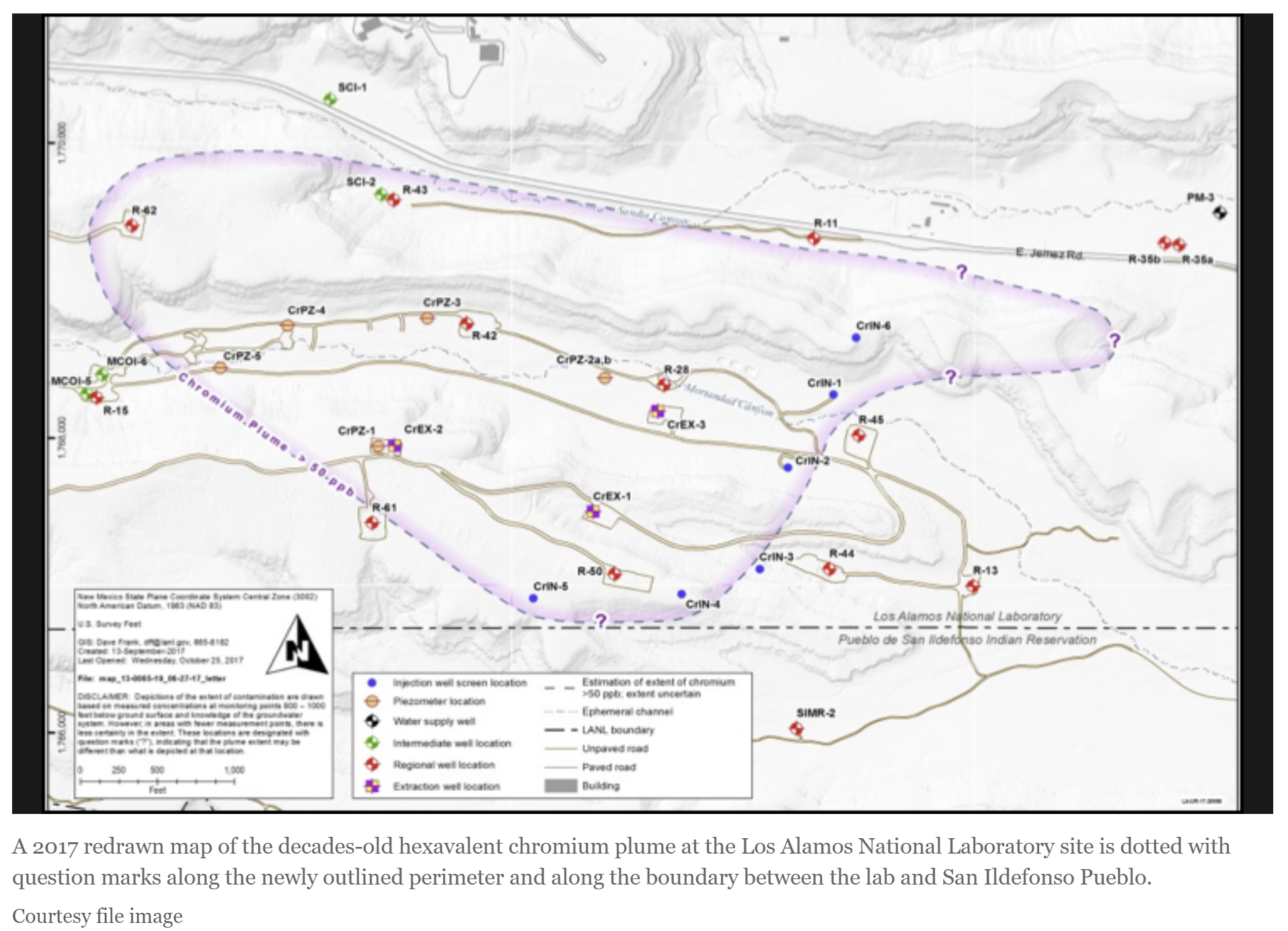 San Ildefonso Pueblo’s governor expressed concerns about the state Environment Department’s order to halt cleanup of a mile-long toxic plume by April 1, saying suspending the measures would cause the contamination to spread to the pueblo.
San Ildefonso Pueblo’s governor expressed concerns about the state Environment Department’s order to halt cleanup of a mile-long toxic plume by April 1, saying suspending the measures would cause the contamination to spread to the pueblo.
Gov. Christopher Moquino said tests and sampling show injecting treated water into the decades-old hexavalent chromium plume at the Los Alamos National Laboratory site has reduced the contaminants and kept them away from the pueblo.
“Halting is a concern,” Moquino said. “We don’t see any positive effect to stop the work. That could have some type of negative effect as far as the plume moving or expanding, but that’s to be determined.”
Moquino’s view contrasts with the state Environment Department, which contends the U.S. Energy Department’s method of extracting contaminated water, treating it and pumping it back into the aquifer is not diluting or containing contaminants but is pushing them toward the pueblo and deeper into the aquifer.
ALLIANCE FOR NUCLEAR ACCOUNTABILITY MEDIA ADVISORY: WHAT TO LOOK FOR IN THE U.S. DEPARTMENT OF ENERGY’S FY 2024 NUCLEAR WEAPONS AND CLEANUP BUDGET REQUEST
Alliance for Nuclear Accountability | March 8, 2023 ananuclear.org
The Biden Administration is releasing its Fiscal Year 2024 federal budget on Thursday, March 9. It is expected to be a “skinny budget” with just topline financial numbers. If the pattern of the last few years for the Department of Energy’s (DOE’s) budget is continued, there can be three more releases over the next six weeks that grow progressively more detailed (there is initially little if any site-specific budget information). Historically around 60% of DOE’s funding has been earmarked for nuclear weapons production and cleanup of Cold War wastes and contamination.
The release of the presidential budget begins the annual legislative process for funding DOE programs and sites. The two bicameral congressional subcommittees that have jurisdiction over the DOE budget are the Armed Services Committee Strategic Forces Subcommittee which “authorizes” funding, and the Energy and Water Development Appropriations Subcommittee which actually provides funding. Congress has managed to pass the Defense Authorization Act for more than 50 consecutive years, but is increasingly unable to pass appropriations bills, leading to short-term Continuing Resolutions (CRs). Given bipartisan friction and the beginning of election campaigning, Continuing Resolutions are likely for this coming federal fiscal year 2024, which begins October 1, 2023.
The Alliance for Nuclear Accountability strongly opposed the massive 25% FY 2021 increase that the Trump Administration gave to the nuclear weapons programs of DOE’s semi-autonomous National Nuclear Security Administration (NNSA). The Biden Administration not only kept Trump’s increases in subsequent budgets but substantially added to them, particularly for expanded production of plutonium “pit” bomb cores for nuclear weapons. Meanwhile, dismantlements of nuclear warheads have slowed to a crawl and funding for cleanup of Cold War radioactive and hazardous wastes has remained flat.
DOE’s nuclear weapons and environmental management programs have been on the Government Accountability Office’s “High Risk List” for project mismanagement and waste of taxpayers’ dollars for more than 30 consecutive years. Defense Department and DOE costs for so-called “modernization” of U.S. nuclear forces begun under Obama is expected to be around $2 trillion over the next 30 years.
March 1: Nuclear Remembrance Day – Anniversary of the Castle Bravo test in the Marshall Islands
Upcoming Events and More Resources:
- Wed, March 1, Annual Commemoration hosted in the RMI
- Wed March 1: Nuclear Victims Remembrance Day Solidarity March, hosted by Marshall Islands Student Association (MISA) – Fiji
- Saturday, April 4 : Bikini Day 2023, Salem Oregon, hosted by the Oregon Marshallese Community Assocation. More info coming soon.
Marshallese Advocates/Groups
- RMI National Nuclear Commission (Facebook, Twitter)
- Marshall Islands Student Association – FIJI (Facebook, Twitter)
- Marshallese Educational Initiative (Facebook, Twitter)
- COFA Alliance National Network (Facebook)
- Oregon Marshallese Community Assocation (Facebook)
- Selina Leem
- Kathy Jetnil Kijiner
- David Anitok
Resources:
- Interview with Tony de Brum: https://vimeo.com/256801160
- Darlene Keju at the World Council of Churches: https://www.youtube.com/watch?v=1hxCGlA5oJQ
-
SUMMARY OF HEALTH AND ENVIRONMENTAL IMPACTS OF U.S. NUCLEAR TESTING IN THE MARSHALL ISLANDS, by Arjun Makhijani
- The Marshall Islands and the NPT, by Robert Alvarez
House panel OKs bill opposing nuclear waste storage plan
Holtec has said the facility would be temporary until a permanent repository could be built, but Rep. Janelle Anyanonu, D-Albuquerque, fears that wouldn’t be the case.
“Once it opens, it’s going to be permanent,” Anyanou said.
Several lawmakers brought up the recent toxic train wreck near East Palestine, Ohio, as evidence hazardous waste could contaminate communities if a similar incident happened in New Mexico. Holtec has said it will transport all the waste by train.
By Robert Nott, THE SANTA FE NEW MEXICAN | February 25, 2023 santafenewmexican.com
A bill that would stymie, if not stop, efforts to build a radioactive waste disposal storage site in the southeastern part of the state is getting closer to the legislative finish line.
The House Government, Elections and Indian Affairs Committee voted 6-3 on Saturday to approve Senate Bill 53, which would prohibit the storage and disposal of radioactive materials or waste in New Mexico unless the state has agreed to the creation of the disposal facility and unless the federal government has already created a permanent nuclear waste repository.
The Senate has passed the bill, which now goes to the House Judiciary Committee. If it clears that committee, it will go the floor of the House of Representatives for a final vote.
The effort, sponsored by four Democratic lawmakers, is aimed at slowing the efforts of Holtec International from building a proposed storage site between Hobbs and Carlsbad that would hold highly radioactive uranium from reactor sites around the country.
“I don’t want to see New Mexico become the nation’s dumping ground [for radioactive waste],” Rep. Matthew McQueen, D-Galisteo, one of the bill’s co-sponsors, told committee members.
Regulators order halt to plume cleanup, say contaminants moving toward pueblo
“It’s been nearly 20 years since the chromium plume was discovered, yet DOE is still struggling with cleanup,”
The current pump-and-treat method is marginally effective at best and a process that actually could take centuries to complete at this pace, said Scott Kovac, Nuclear Watch New Mexico’s operations director.
The contaminated water should be removed, treated and taken to another site instead of injected back into the plume, he said.
By Scott Wyland, The Santa Fe New Mexican | February 22, 2023 santafenewmexican.com
State regulators have ordered the U.S. Energy Department to stop injecting treated water into an underground chromium plume by April 1, saying the method is pushing the contamination at the Los Alamos National Laboratory site toward a nearby pueblo and deeper into the aquifer.
The state Environment Department has called into question a pump-and-treat method the federal agency’s environmental management branch has used for years in an effort to remedy the mile-long toxic plume and keep it from spreading to the adjacent San Ildefonso Pueblo.
Regulators say the technique of extracting contaminated water, treating it and pumping it back into the aquifer is not remediating the decades-old plume or containing it but instead is stirring up the hexavalent chromium and pushing it toward the pueblo.
Hexavalent chromium is a known carcinogen. If ingested in drinking water, it can harm the liver, kidneys and reproductive systems, and some research indicates consuming large amounts over a long period can cause stomach cancer.
“DOE has not demonstrated … that injection of treated water has resulted in hydraulic control of the plume,” Environment Department spokesman Matt Maez wrote in an email. “NMED is concerned about threats to public health and the environment from the plume being pushed towards and onto San Ildefonso, instead of being mitigated by DOE’s current injection strategy.”
2022 Select Highlighted Press Items
Nuclear Modernization is the ’Absolute Minimum,’ STRATCOM Commander Says | March 8, 2022
US tested hypersonic missile in mid-March but kept it quiet to avoid escalating tensions with Russia | April 4, 2022
Putin’s Nuclear Threats Are a Wake-Up Call for the World | March 15, 2022
Intelligence report determines that Russia's WMD threats will grow as losses mount in Ukraine | March 19, 2022
China and the United States: It’s a Cold War, but don’t panic | March 10, 2022
Russian military doctrine calls a limited nuclear strike “de-escalation.” Here’s why. | March 8, 2022
North Korea says it will strike with nuclear weapons if South attacks | April 4, 2022
Flying Under The Radar: A Missile Accident in South Asia | April 4, 2022
2022 News Articles
Biden administration reveals number of nuclear weapons in US stockpile
“The Biden administration’s decision to declassify updated information on the number of nuclear warheads in the U.S. nuclear weapons arsenal is a welcome step that reverses an unwise decision by the Trump administration to classify this information,” the Arms Control Association said in a statement Wednesday.
“It also puts pressure on other nuclear armed states that maintain excessive secrecy about their arsenals.”
By Chandelis Duster and Nicole Gaouette, CNN, benningtonbanner.com October 7, 2021
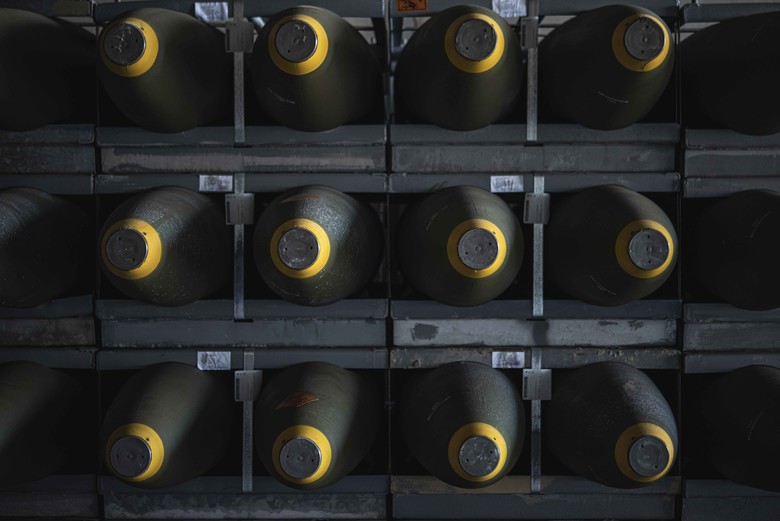
(CNN) In a reversal from the Trump administration, the State Department revealed the number of nuclear weapons in the US stockpile for the first time in four years on Tuesday.
“Increasing the transparency of states’ nuclear stockpiles is important to nonproliferation and disarmament efforts, including commitments under the Nuclear Non-Proliferation Treaty, and efforts to address all types of nuclear weapons, including deployed and non-deployed, and strategic and non-strategic,” the State Department said.
Nuclear submarines will not deter China from conflict with Taiwan, but Australia has an alternative arsenal
As a committed supporter of international institutions and the world’s 13th largest economy, Australia has real clout
“As the gap between China’s military and Australia’s widens, it is unlikely that Australia’s capability – even with a fleet of nuclear submarines, supplied by its Aukus partners – will determine the balance of military power in the Indo-Pacific.”
By Jonathan Pearlman October 6, 2021 The Guardian theguardian.com
For an emerging superpower prone to petulant outbursts and coercive retaliation, China’s initial response to the recent announcement of the new three-way security pact between Australia, the United States and Britain seemed surprisingly tepid.
Hours after the trio unveiled their “forever partnership”, known as Aukus, China formally requested that it be allowed to join an 11-member Asia-Pacific trade grouping, the Comprehensive and Progressive Agreement for Trans-Pacific Partnership (CPTPP).
This was an odd move by China, whose application requires the consent of the grouping’s members, which include Australia. In recent years, China has responded to previous perceived slights from Canberra by imposing economic sanctions worth $20bn and freezing ministerial contacts.
Nuclear-Weapon-Free States Demand Immediate End to Deterrence Policies, Start of Dismantling Atomic Arsenals, as First Committee Continues General Debate
Calling for swift remedies to mend a fractured non-proliferation landscape, nuclear-weapon-free States demanded an immediate end to deterrence policies and the start of dismantling atomic arsenals, as the First Committee (Disarmament and International Security) moved into the third day of its general debate.
UNITED NATIONS MEETINGS COVERAGE GENERAL ASSEMBLY FIRST COMMITTEE SEVENTY-SIXTH SESSION, 4TH MEETING (PM)
As thousands of atomic bombs located around the world pose grave risks to humanity, delegates implored nuclear-weapon States to steer the planet onto a path of peace. Some suggested such ways to do so, with delegates agreeing that dismantling nuclear arsenals must start now, in line with the Treaty on the Non-Proliferation of Nuclear Weapons and under safeguards established by the International Atomic Energy Agency (IAEA). Many urged all nations with atomic arsenals to sign, ratify and fully implement existing conventions, including the Treaty on the Prohibition of Nuclear Weapons, which entered into force in January, and some decried the quarter of a century delay in entering into force the Comprehensive Nuclear-Test-Ban Treaty. To rectify this, many called for nuclear-weapon States to sign and ratify it so that atomic bomb testing can become part of the past.
One Man Shouldn’t Control the Nuclear Button
Congress should require consultation, so generals wouldn’t have to break the rules to save the world.
The critics are missing the point. The overriding issue is not whether Gen. Milley was correct in his assessment, or whether he was authorized to take the reported actions, but what the consequences could have been if his concern had been warranted. It is not hyperbole to say that the consequences could have been a profound tragedy and, in the worst case, the end of civilization.
The Stealthy F-35 Fighter Jet Is One Step Closer to Carrying Nuclear Weapons
“A pair of F-35s from Nellis Air Force Base in Nevada released dummy nuclear bombs at a nearby test range this month, moving the advanced stealth fighter closer to carrying the world’s most powerful weapons into combat, the Air Force said.”
By Stephen Losey • military.com

The flights on Sept. 21 marked the “graduation” test exercise necessary for the Air Force variant of the F-35 to move ahead with what’s called the nuclear design certification process, according to the service’s press release.
It’s still not clear when the F-35A will receive its full nuclear certification allowing it to move from training ranges and dummy bombs to real-world battlefields. But when that happens, the Air Force will have a second stealth aircraft in its fleet that can carry nukes.
“The B-2 [Spirit] bomber was the prominent nuclear-capable stealth aircraft,” Lt. Col. Daniel Jackson, division chief for strategic deterrence and nuclear integration at Air Combat Command, said in the press release.
F-15E Strike Eagle and F-16C and D Fighting Falcon fighters do not have stealth capability but can carry nuclear weapons. The B-21 Raider heavy bomber will also have the capability and is expected to join the Air Force’s fleet in the mid-2020s, according to the latest estimates.
Opinion: Too many ‘downwinders’ are still suffering
“We are sponsoring a bill that would make sure the government’s responsibility to those who were harmed by nuclear testing does not get swept under the rug.”
By Burgess Owens and Chris Stewart deseret.com
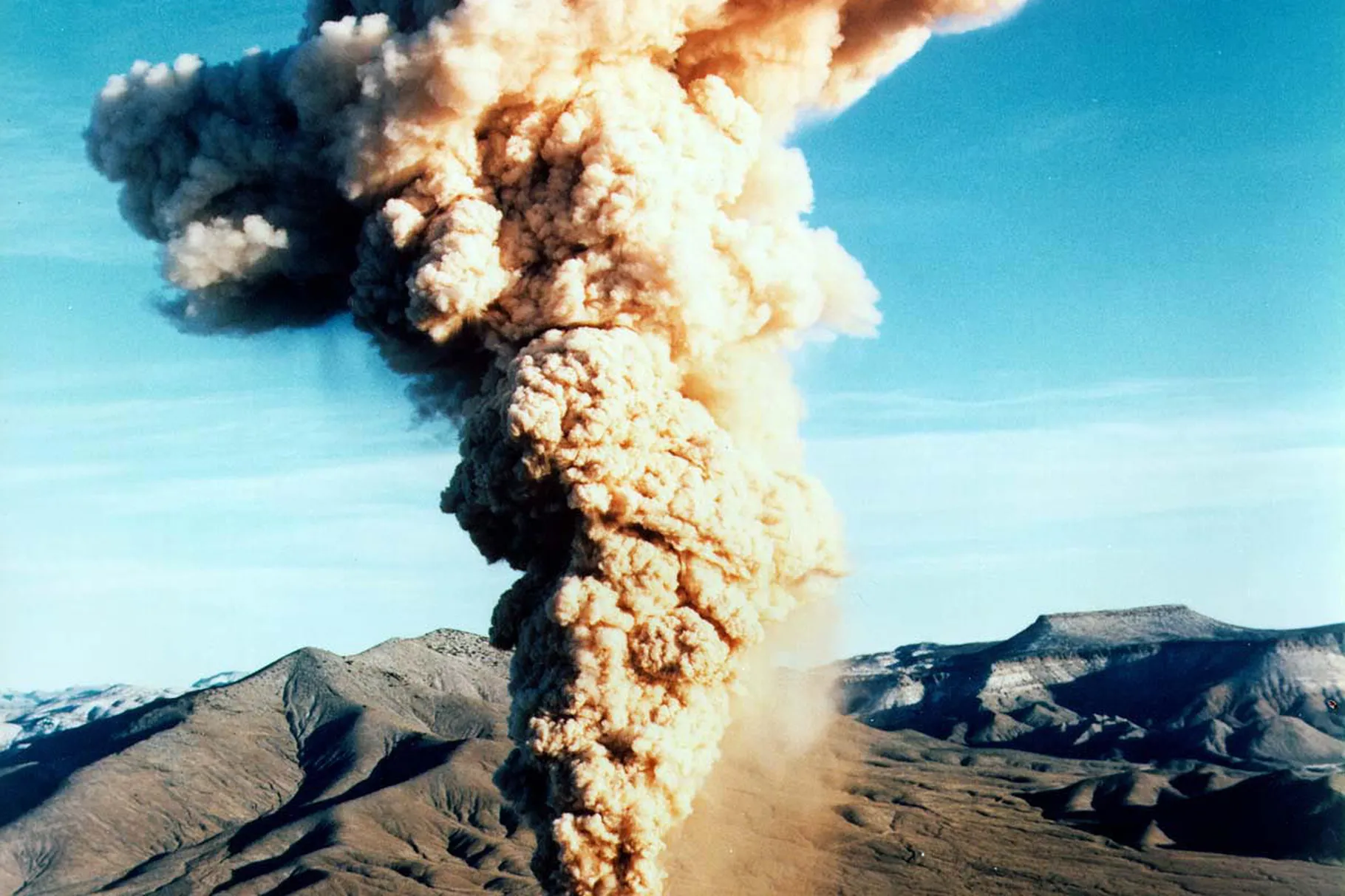
Any objective study of American history brings us to the realization that there are many Americans who quietly made, and continue to make, great sacrifices for our national security. Many of these women and men willingly give of themselves to ensure that our country remains free.
Tragically, under the banner of national security the United States government exposed Americans to radioactive uranium ore and radioactive dust — subjecting them to lung cancer and other respiratory illnesses.
On July 16, we marked the 76th anniversary of the detonation of the first nuclear weapon — code-named Trinity — in the desert of New Mexico’s Tularosa Basin. Three weeks after the Trinity detonation, the United States exploded the Little Boy bomb over Hiroshima and, three days later, the Fat Man bomb over Nagasaki. Six days later, Japan surrendered. In the aftermath of World War II, a nuclear arms race began that reached its zenith with over 60,000 nuclear weapons worldwide in 1986.
Many lives were lost or severely altered by the nuclear weapons program. Thankfully, the world stockpile of nuclear weapons has steadily declined since 1986 and will, hopefully, continue to do so in the future. Yet, the effects of detonating over 1,100 nuclear weapons since the Trinity test in 1945 continue to mar the lives of Americans to this day.
Through atmospheric weapons tests, as well as mining, transporting and milling of uranium ore, many Americans have been slowly killed by radiation exposure. Thousands of Utahns were infected by radiation exposure simply by living “downwind” of the federal government’s nuclear weapons testing sites. Additional Utahn miners were affected as they worked the uranium necessary for these weapons. These “downwinders” and miners and their families friends, and communities often suffered excruciating illness, loss and devastation.
In response to this malfeasance, Congress rightly enacted (and later amended in 2000) the Radiation Exposure Compensation Act (RECA) in 1990. This legislation was a good first step in making recompense to those who mined and hauled uranium ore and those who processed the ore at a mill. The RECA legislation also addresses those exposed to radiation downwind from nuclear test sites.
It has been more than 20 years since any meaningful reform to RECA has been made for those whose lives have been taken or irreversibly altered by our foray into the arms race. Several classifications of workers such as core drillers and ground workers have been denied justice by being excluded completely from the process.
Some diseases that should have been compensable have been excluded. Numerous geographical locations exposed to downwind radiation have been left out. Uranium miners continued to mine after the United States stopped buying uranium for its nuclear weapons programs in 1971. These so-called post-1971 workers were excluded from accessing benefits since the original RECA legislation had an arbitrary cutoff date of Dec. 31, 1971 — even though the federal government continued to regulate uranium mines long after 1971. To make matters worse, RECA is scheduled to sunset in July 2022 — potentially leaving all classifications of exposure victims without redress.
We are honored to represent some of these “downwinders” and their family members and want them to know their suffering — and the sacrifices they made for our nation — are not forgotten.
That is why we are pleased to be the lead Republican members of the House of Representatives on the “RECA Amendments Act of 2021,” legislation that will reauthorize RECA for those still suffering the consequences of nuclear testing.
The tragic consequences of the nuclear arms race cannot be swept under the rug of history. We urge our colleagues in Congress to support the “RECA Amendments Act of 2021.” Our country must act now to address the injustices of those who have been forgotten by their own government.
Rep. Burgess Owens represents Utah’s 4th Congressional District. Rep. Chris Stewart represents Utah’s 2nd Congressional District.
Four Takeaways from the 2021 World Nuclear Industry Status Report
“Although net nuclear capacity rose last year, the 0.4-gigawatt increase was minuscule in comparison with the gains made by renewable energy. ‘Nuclear is irrelevant in today’s electricity capacity newbuild market,’ the industry report concludes.”
By Dawn Stover | October 1, 2021 The Bulletin thebulletin.org
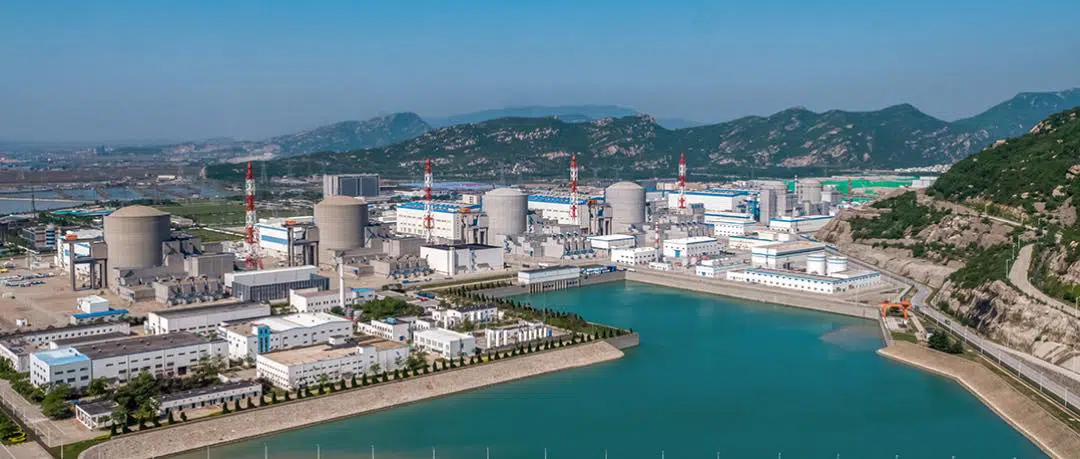
Although there are 23 fewer nuclear reactors in the world today than at the 2002 peak of 438, the past year saw a small uptick in the number of reactors operating worldwide and a corresponding increase in the global fleet’s net operating capacity.
That’s one data point in the World Nuclear Industry Status Report 2021, the latest in a series of annual industry reports compiled by an international team of independent experts led by Mycle Schneider, a consultant based in Paris. The 409-page report, released this week, is packed with information about global and country-specific trends, but several findings stand out, and they don’t bode well for the nuclear energy industry.
First, although nuclear capacity is up, nuclear electricity production is down.
As of mid-2021, there were 415 nuclear reactors operating in 33 countries, seven reactors more than a year earlier. Their total capacity was 1.9 percent higher than a year earlier. But in 2020, the worldwide nuclear fleet generated 3.9 percent less electricity than in the previous year. That was the first decrease in output since 2012, when many reactors remained shut down in the wake of the Fukushima nuclear disaster.
Without China, where most of the new construction is happening, the decrease in production would look even bigger. In 2020, China for the first time produced more nuclear electricity than France, which relies heavily on nuclear energy. Only the United States produced more.
NRDC: Legislation Offers Path Forward on Nuclear Waste
“This legislation could end years of debate and acrimony and help determine a path forward for disposing of nuclear waste. Placing nuclear waste under bedrock environmental laws could ensure strong repository standards, while giving states the power to approve what is sequestered within their borders.”
– Kit Kennedy, managing director for the Climate and Clean Energy program at NRDC (Natural Resources Defense Council)
WASHINGTON – Sen. Ed Markey (D-Mass.) and Rep. Mike Levin (D-Calif.) introduced legislation today that could end a 60-year impasse over our nation’s nuclear waste.
The bill would establish a task force to consider removing exemptions for radioactive waste and spent nuclear fuel from our bedrock environmental laws. Doing so would allow for geologic repositories for nuclear waste that have strong environmental protections and the consent of state leaders and local residents.
Senator Markey and Rep Levin Introduce Legislation to Determine a Viable Consent Based Path Forward for Nuclear Waste
Currently, the United States has no permanent geologic repository for disposal of high-level nuclear waste
“The current system of spent nuclear fuel storage is not sustainable, particularly for sites that no longer have operating reactors and could be redeveloped for other beneficial uses, such as the San Onofre Nuclear Generating Station,” said Representative Levin.
PRESS RELEASE September 28, 2021 markey.senate.gov
Washington (September 28, 2021) – Senator Edward J. Markey (D-Mass.), Chair of the Clean Air, Climate, and Nuclear Safety Subcommittee of the Senate Environment and Public Works Committee, and Congressman Mike Levin (CA-49) today introduced the Nuclear Waste Task Force Act, legislation to establish a new task force to consider the implications of amending the Atomic Energy Act of 1954 to remove exemptions from environmental laws for nuclear waste. Eliminating this loophole could help enable consent-based siting of long-term storage solutions for nuclear waste. The task force would also be responsible for providing a clear explanation of what constitutes “consent-based siting.”
“Enabling consent-based storage is the key to developing real, practical solutions for the long-term storage of nuclear waste. This nuclear waste task force will play a critical role in determining how to make that happen.”
Survivors Of The Trinity Nuclear Test Weren’t Warned — Then Were Lied To After
NPR’s Leila Fadel talks with Lesley Blume about the struggle of the survivors of the Trinity nuclear test in 1945 — one locals didn’t know was coming and caused serious health issues.
“The compensation act – RECA as it’s called – is about to expire next July…What’s happening right now is that several members of Congress from New Mexico and from other Western states are trying to extend RECA, and they’re making a bid to have the Trinity downwinders included under this legislation at last, among other exposed communities.”
NPR News Heard on All Things Considered
An aerial view of the aftermath of the first atomic explosion at the Trinity test site in New Mexico in 1945. The device exploded with a power equivalent to 21,000 tons of TNT. Credit Associated PressLEILA FADEL, HOST:
This was most of America’s introduction to nuclear power.
(SOUNDBITE OF ARCHIVED RECORDING)
HARRY TRUMAN: A short time ago, an American airplane dropped one bomb on Hiroshima and destroyed its usefulness to the enemy.
FADEL: President Harry Truman’s announcement in August of 1945 heralded a terrifying new weapon.
(SOUNDBITE OF ARCHIVED RECORDING)
TRUMAN: It is an atomic bomb. It is a harnessing of the basic power of the universe. The force from which the sun draws its power has been loosed against those who brought war to the Far East.
FADEL: But the Atomic Age actually began the month before At the Alamogordo Bombing and Gunnery Range in New Mexico. The first nuclear test, codenamed Trinity, was a closely guarded secret. Locals, some as close as 12 miles away, had no idea it was coming. Lesley Blume wrote about them for National Geographic.
Welcome back.
LESLEY BLUME: Thank you so much.
FADEL: So, first, tell us what happened during that first test, codenamed Trinity.
BLUME: It was a huge success, but it also – the bomb was a lot more powerful than they had expected, three to five times as powerful. And, you know, initially they thought that the cloud was only going to go up about 12,000 or 13,000 feet. Well, guess what. It went up between 50,000 and 70,000 feet. It created sort of an estimated fallout zone about 100 miles long and 30 miles wide…
“Now is the time to eliminate nuclear weapons from our world, and usher in a new era of dialogue, trust and peace”, declared UN Secretary-General António Guterres on Sunday, marking the International Day for the Total Elimination of Nuclear Weapons.
Addressing the threat of nuclear weapons, said Mr, Guterres, has been central to the work of the United Nations since its inception; the first General Assembly resolution in 1946 sought “the elimination from national armaments of atomic weapons and of all other major weapons adaptable to mass destruction.”
The UN chief pointed out that, although the total number of nuclear weapons has been decreasing for decades, some 14,000 are stockpiled around the world, which is facing the highest level of nuclear risk in almost four decades: “States are qualitatively improving their arsenals, and we are seeing worrying signs of a new arms race.” Humanity, continued the UN chief, remains unacceptably close to nuclear annihilation.
Veterans Group Urges President Biden to Adopt No First Use Policy
To mark the International Day for the Total Elimination of Nuclear Weapons, September 26, Veterans For Peace is publishing an Open Letter to President Biden: Just Say NO to Nuclear War!

ST. LOUIS, MO –
Veterans For Peace, with over 140 chapters in the United States and affiliates abroad, is calling on President Biden to step back from the brink of nuclear war by declaring and implementing a policy of No First Use and by taking nuclear weapons off hair-trigger alert. The full letter will be published on the VFP website and offered to mainstream newspapers and alternative news sites: Click here to view.
While timed to coincide with the UN-declared International Day for the Total Elimination of Nuclear Weapons, a major motivation for the letter is the Nuclear Posture Review, currently underway.
The letter therefore states, “As veterans who have fought in multiple U.S. wars, we are concerned about the very real danger of a nuclear war that would kill millions of people and could possibly even destroy human civilization. Therefore we are asking to have input into the Nuclear Posture Review that your administration has recently initiated.”
A Little Radiation Is Not Good For You
“…between 1977 and 1990, scientists tripled their estimate of the damage inflicted by a given dose of radiation. A 1992 study published in the American Journal of Industrial Medicine found that nuclear weapons production workers exposed to small doses were four to eight times more likely to contract cancer than previously estimated…even the very lowest background levels of radiation exposure are harmful to health and have statistically significant negative effects on DNA.”
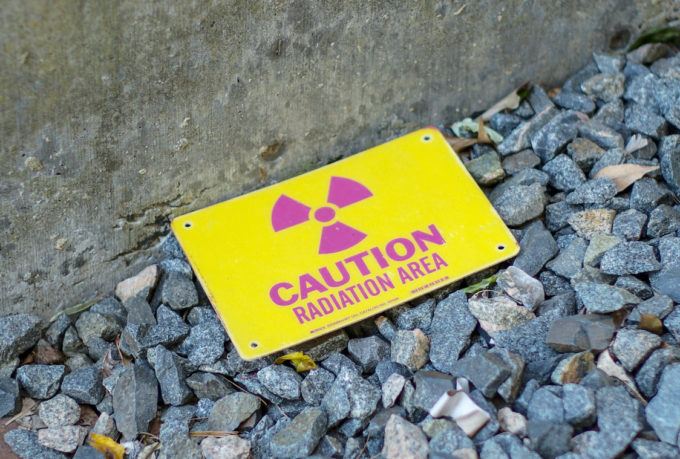
In a rare pushback against the radioactive pollution industry, the Nuclear Regulatory Commission — well known as a rubber stamp for the nuclear lobby — has flatly rejected an attempt to further weaken the agency’s radiation exposure regulations.
After six years of deliberation, the NRC’s three commissioners, two Democrats and one Republican, voted unanimously to reject formal petitions submitted in February 2015 urging the agency to adopt a cost-cutting scheme known as “hormesis” which claims that “a little radiation is good for you.” The September 16 decision by the NRC says this “threshold theory posits that “there is some threshold dose below which there is either no radiation-related health detriment or a radiation-related health benefit that outweighs any detriment.”
The order then rebukes this concept, finding the petitioners “fail to present an adequate basis supporting the request,” and “Convincing evidence has not yet demonstrated the existence of a threshold below which there would be no … effects from exposure to low radiation doses.”
The basis for hormesis had been explicitly rejected ten years earlier, the NRC pointed out, by the National Academy of Sciences in its 2005 report “Biologic Effects of Ionizing Radiation, 7th Ed” or BEIR-VII. The National Research Council summed up its book-length BEIR-7 report saying, “the smallest dose has the potential to cause a small increase in risk to humans.”
Biden’s nuclear agenda in trouble as Pentagon hawks attack
“The decision to fire Leonor suggests to me that the first draft of NPR is going to be a continuation of the line of thinking we saw in the Trump administration’s NPR…They have put themselves on the course that is a first draft that is 180 degrees to what Biden said on the campaign trail.” – Jeffrey Lewis, a professor and nuclear weapons expert at the Middlebury Institute for International Studies and host of the podcast Arms Control Wonk.
By BRYAN BENDER and LARA SELIGMAN | September 23, 2021 politico.com
One of President Joe Biden’s leading allies in his decadeslong attempt to reduce nuclear weapons has lost a battle with the Pentagon’s hawks.
The ouster of Leonor Tomero, who questioned the status quo on nuclear weapons, signals the Biden administration’s ambitious agenda to overhaul America’s nuclear policy might be in trouble.
Early in his administration, Biden installed national security officials intent on negotiating new arms control treaties and curtailing nuclear weapons spending. One of them was Tomero, a leading voice for nuclear restraint on Capitol Hill and in the think tank community, who was appointed to oversee the Nuclear Posture Review that will set the administration’s atomic weapons policy and strategy.
But officials with more traditional views on nuclear weapons, who promote a status quo agenda to include modernizing the land, sea and airborne legs of America’s nuclear arsenal, did not take kindly to Tomero’s progressive ideology, according to 11 current and former defense officials, as well as others with insight into the debate.
New push on to expand nuclear radiation compensation in US
“There is always money when there’s political will. This is a social, environmental and restorative justice issue that we, as a nation, can no longer look away from.” — Tina Cordova, a cancer survivor and co-founder of the Tularosa Basin Downwinders Consortium
By SUSAN MONTOYA BRYAN | AP apnews.com September 22, 2021
Corbin Harney, an elder with the Western Shoshone Tribe, beats a drum during a May 2002 tribal protest near the planned Yucca Mountain national nuclear waste dump.ALBUQUERQUE, N.M. (AP) — A bipartisan group of lawmakers is renewing a push to expand a U.S. compensation program for people who were exposed to radiation following uranium mining and nuclear testing carried out during the Cold War.
Advocates have been trying for years to bring awareness to the lingering effects of nuclear fallout surrounding the Trinity Site in southern New Mexico, where the U.S. military detonated the first atomic bomb, and on the Navajo Nation, where more than 30 million tons of uranium ore were extracted over decades to support U.S. nuclear activities.
Under legislation introduced Wednesday by U.S. Sens. Ben Ray Luján, a Democrat from New Mexico, and Mike Crapo, a Republican from Idaho, other sites across the American West would be added to the list of places affected by fallout and radiation exposure. Eligibility also would be expanded to include certain workers in the industry after 1971, such as miners.
The legislation also would increase the amount of compensation someone can receive to $150,000 and provide coverage for additional forms of cancer.
Op-Ed: Gen. Milley did the wrong thing for honorable reasons. We need new rules for starting nuclear war
“But let’s be clear about where the problem lies: It’s with the existing U.S. system for controlling the use of nuclear weapons… If the United States is intent on maintaining at the ready a large nuclear strike force, as is apparently the case, the nation needs comprehensive safeguards to prevent reckless and ill-considered decisions regarding their use.”
By Andrew Bacevich | LA Times latimes.com September 16, 2021
A new book by journalists Bob Woodward and Robert Costa contains a singularly startling allegation. In the waning weeks of the Trump administration, Gen. Mark Milley, chairman of the Joint Chiefs of Staff, twice called his counterpart, Gen. Li Zuocheng, of the People’s Liberation Army, offering assurances that the United States was not about to launch an attack against China.
“If we’re going to attack,” Milley told Li, according to Woodward and Costa, “I’m going to call you ahead of time. It’s not going to be a surprise.”
The surprise turns out to be the revelation of Milley’s actions. Some in the Defense Department may have known about the calls, but one thing seems clear: President Trump, the U.S. commander in chief, did not. Milley acted of his own volition, without prior presidential approval. On that point, Christopher Miller, then serving as acting Defense secretary, is emphatic, describing Milley’s actions to Fox News as a “disgraceful and unprecedented act of insubordination.”
Providing adversaries with advance notice of U.S. military actions does not number among the prescribed duties of the chairman of the joint chiefs. Arguably, the Woodward-Costa allegations, if accurately reported, qualify as treasonous. At the very least, they raise serious doubts about Milley’s respect for the bedrock principle of civilian control of the military. To state the matter bluntly, when adherence to that principle raised the possibility of an outcome not to Milley’s liking, he seemingly granted himself an exemption.
Of course, all of this happened in a specific context: Woodward and Costa’s chilling account is only the latest to depict the unraveling Trump presidency following the November election. Unwilling to accept defeat, the incumbent all but ceased to govern and instead devoted himself to overturning the election’s results by any means necessary, violating the rule of law and waiving the Constitution.
Kildee Introduces Bipartisan Resolution Opposing Proposed Canadian Permanent Nuclear Storage Site Near Great Lakes
By Devlin Barrett and Martin Weil | September 16, 2021 Press Release dankildee.house.gov
Woodward/Costa book: Worried Trump could ‘go rogue,’ Milley took secret action to protect nuclear weapons
“Woodward and Costa write that after January 6, Milley ‘felt no absolute certainty that the military could control or trust Trump and believed it was his job as the senior military officer to think the unthinkable and take any and all necessary precautions.’
Milley called it the ‘absolute darkest moment of theoretical possibility,‘ the authors write.”
By Jamie Gangel, Jeremy Herb and Elizabeth Stuart, CNN September 14, 2021
Washington (CNN) Two days after the January 6 attack on the US Capitol, President Donald Trump’s top military adviser, Joint Chiefs Chairman Gen. Mark Milley, single-handedly took secret action to limit Trump from potentially ordering a dangerous military strike or launching nuclear weapons, according to “Peril,” a new book by legendary journalist Bob Woodward and veteran Washington Post reporter Robert Costa.
Woodward and Costa write that Milley, deeply shaken by the assault, ‘was certain that Trump had gone into a serious mental decline in the aftermath of the election, with Trump now all but manic, screaming at officials and constructing his own alternate reality about endless election conspiracies.’
“You never know what a president’s trigger point is,” Milley told his senior staff, according to the book.

A private company got federal approval to store nuclear waste in Texas. The state is fighting back.
“The Nuclear Regulatory Commission’s approval of the planned facility opens a new front in a decades-long battle to find a home for the country’s nuclear waste.”
By: Douglas MacMillan and Aaron Gregg | THE WASHINGTON POST September 12, 2021 washingtonpost.com
A private company has won federal approval to build an expansive nuclear waste site in Texas, even as residents, state lawmakers, environmentalists and Texas Gov. Greg Abbott (R) rail against it.
The Nuclear Regulatory Commission (NRC) on Monday issued a license for Andrews, Tex.-based Interim Storage Partners to store as much as 5,000 metric tons of radioactive waste. It’s one of two proposed storage sites — the other is in southeastern New Mexico — that has been under agency review for several years.
Nuclear waste facility near Carlsbad sees COVID-19 surge as infections rise in New Mexico
COVID-19 infections resurged at the Waste Isolation Pilot Plant in recent weeks as cases of the virus climbed in the communities surrounding the nuclear waste repository in southeast New Mexico.
There were 14 positive cases among workers at the site or associated with the facility reported between Aug. 17 and 31, per the latest report from Nuclear Waste Partnership (NWP) – WIPP’s primary operations contractor.
In total, WIPP reported as of Aug. 31, there were 25 active cases.
WIPP officials did not report the identities of patients or companies where the infected workers were employed.
All employees at WIPP were encouraged to receive a COVID-19 vaccination, per an NWP news release, and required to wear protective face masks when indoors, vaccinated or not, and social distance when possible.
U.S. still prepared to engage with North Korea after missile test
“North Korea’s cruise missiles usually generate less interest than ballistic missiles because they are not explicitly banned under United Nations Security Council resolutions. However, analysts said calling it “strategic” could mean it was a nuclear-capable system.”
Reuters reuters.com September 13, 2021
ABOARD AIR FORCE ONE, Sept 13 (Reuters) – The United States remains prepared to engage with North Korea, a White House spokeswoman said on Monday, despite Pyongyang’s announcement that it had tested a new long-range cruise missile over the weekend.
“Our position has not changed when it comes to North Korea, we remain prepared to engage,” principal deputy press secretary Karine Jean-Pierre told reporters.
North Korea’s state media announced on Monday what it said were successful tests of a new long-range cruise missile that analysts said could be the country’s first such weapon with a nuclear capability. read more
U.S. officials, speaking on the condition of anonymity, said initial indications were that North Korea had carried out such a test.
Biden blasted for ‘wishful thinking’ as new ‘potential nuclear crisis’ looms
“Iran deserves a measure of the blame for resurrecting a matter that diplomats spent more than a dozen years putting to rest…It is the US that is overwhelmingly responsible for the current crisis.”
The US President promised throughout the 2020 election campaign he would restore the Joint Comprehensive Plan of Action (JCPOA) with Iran, which Donald Trump withdrew from in 2018. However, his administration are reportedly getting “closer” to giving up on the deal.
Since Mr Biden took office on January 20, Iran elected hardline judge Ebrahim Raisi as their new President.
While talks have been held between Washington and Tehran on renewing the JCPOA, no new agreement has been struck.
Borzou Daragahi, senior non-resident fellow at Washington think tank the Atlantic Council, said Mr Biden’s administration “still needs to figure out what it wants in Iran”.
Why China’s attack on Nato ‘double standards’ suggests it will continue to build up nuclear arsenal
“The alliance’s head Jens Stoltenberg accused Beijing of increasing its firepower ‘without constraint’ and urged it to sign up to international arms controls – But Beijing hit back by criticising Nato’s nuclear sharing arrangements and said the US and Russia should lead the way by disarming”
Liu Zhen scmp.com September 12, 2021
China is expected to continue building up its arsenal of nuclear weapons despite Nato’s appeal for it to sign up to international arms controls. Last week Nato Secretary-General Jens Stoltenberg criticised China’s efforts to develop its nuclear capacity – by building more warheads, delivery systems and silos – “without any limitation or constraint”.
He told Nato’s annual arms control conference in Brussels that this was making the world “more unpredictable, more competitive and more dangerous”.
20 years after 9/11, Yankee’s nuclear fuel still poses security risk
“Deb Katz, the executive director of Citizens Awareness Network, a New England-wide anti-nuclear group, said her group supports ambitious improvements to the storage facilities.
“We support hardening the waste on site. This includes double walling the casks, increasing the distance between the casks, if possible, berming them in to protect them from acts of malice,” she said.
“The waste must stay on site until there is a scientifically sound and environmentally just solution,” she said, referring to a nuclear industry move toward building interim nuclear waste storage facilities. One is proposed for west Texas, the other in New Mexico.”
By Susan Smallheer, Brattleboro Reformer benningtonbanner.com September 11, 2021
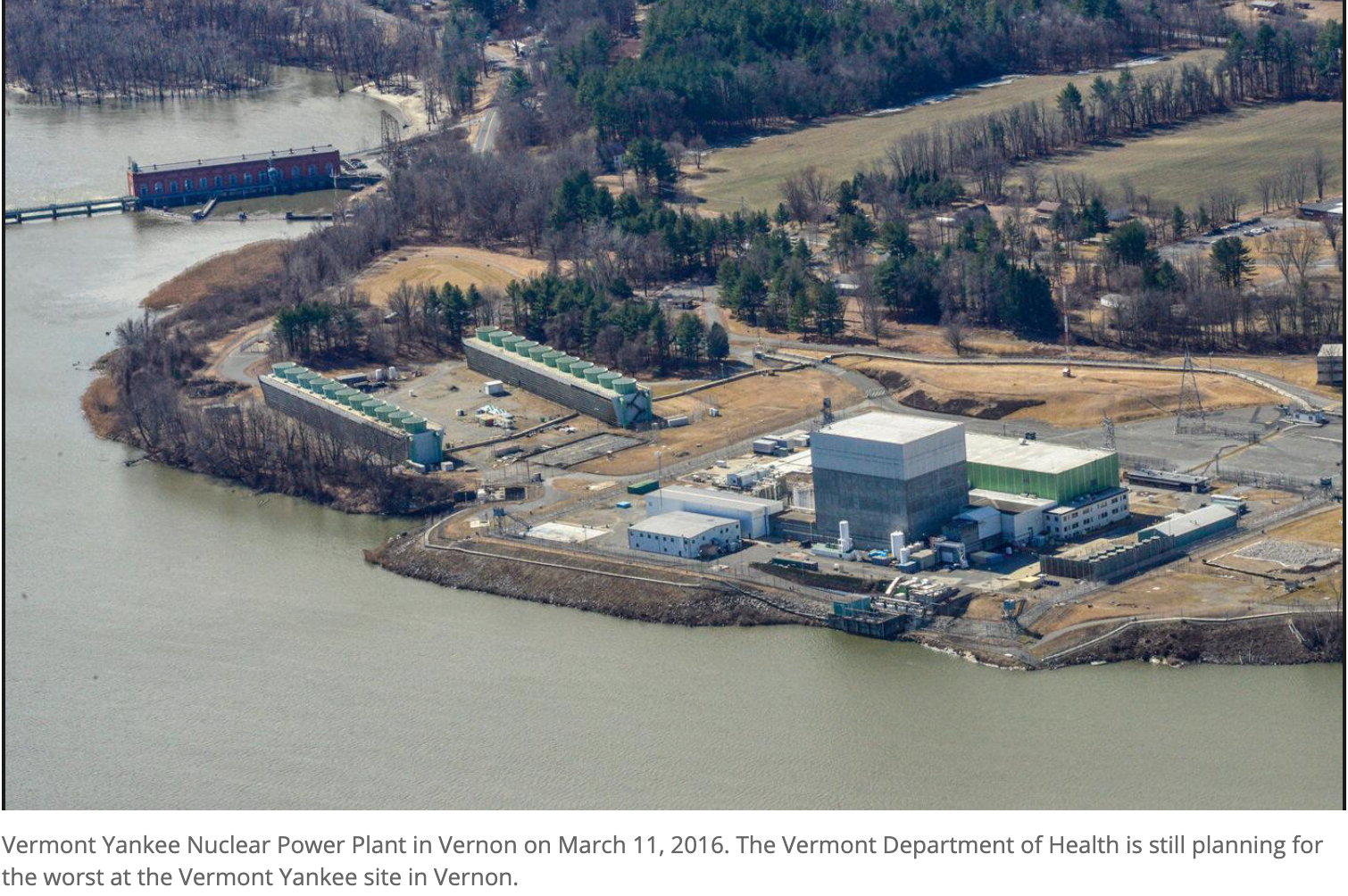
VERNON — The Vermont Department of Health is still planning for the worst at the Vermont Yankee site in Vernon.
But the worst, thanks to the active decommissioning of the Vermont Yankee site currently underway, is not as bad as it could have been six years ago, when Vermont Yankee shut down and its nuclear fuel was moved out of the reactor core and put into storage in giant steel and concrete casks.
“The Health Department’s Radiological and Nuclear Emergency Response Plan originally had a heavy emphasis on releases from Vermont Yankee, which could impact large areas and populations while it operated. Even with the shutdown of Vermont Yankee, we continue to maintain many of our resources for radiological emergency response,” said William Irwin, the state’s radiological health chief.
Texas bans storage of highly radioactive waste, but a West Texas facility may get a license from the feds anyway
The new law may soon be in conflict with federal regulators. A decision from the Nuclear Regulatory Commission on one company’s license could come as early as Monday.
BY ERIN DOUGLAS
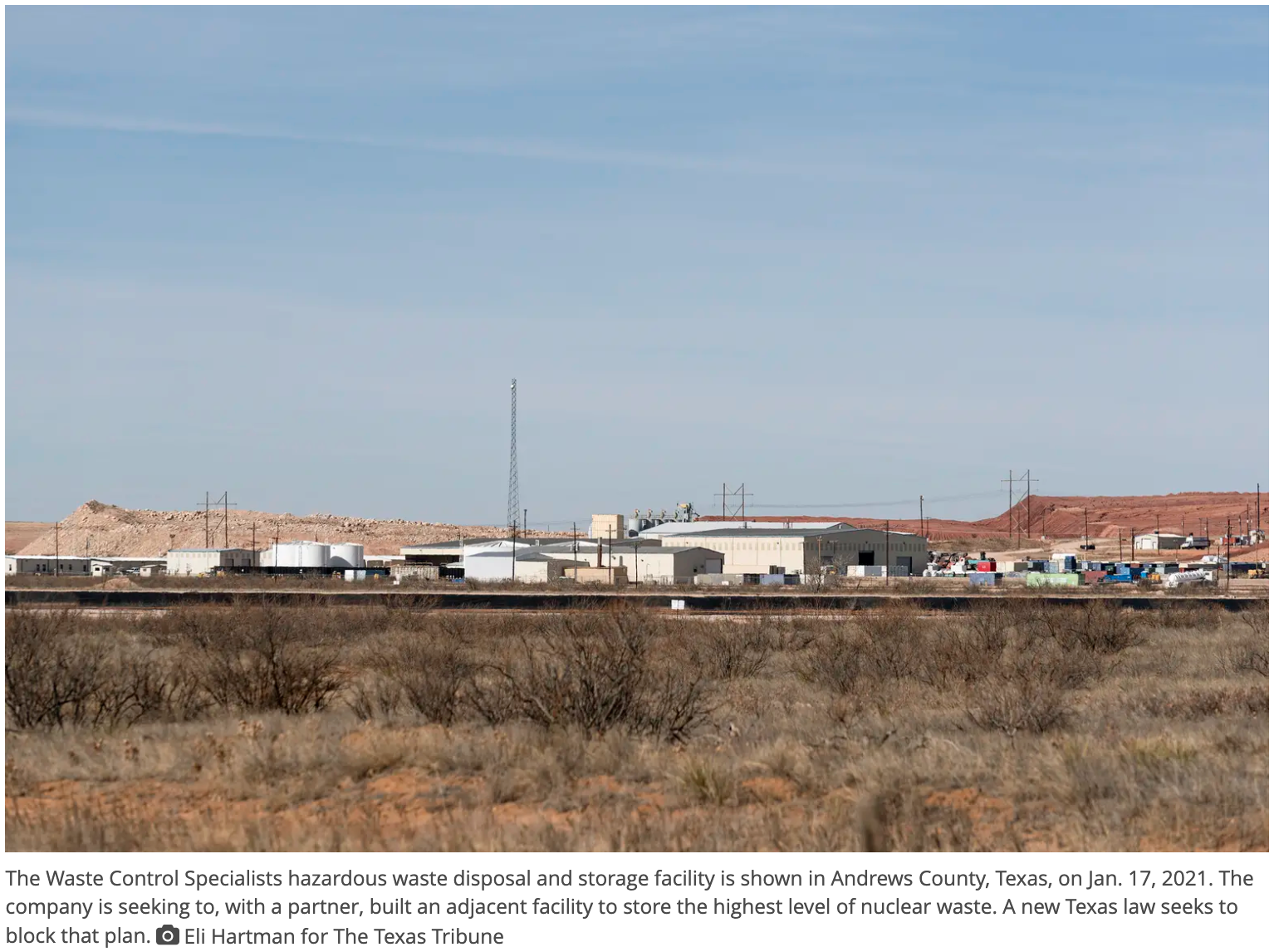
Gov. Greg Abbott on Thursday night signed a bill into law that attempts to block a plan to store highly radioactive nuclear waste at a site in West Texas.
House Bill 7 effectively bans highly radioactive materials from coming to Texas, targeting one company’s plan to build such a facility near the New Mexico border in Andrews County.
But, the new state law may soon be in conflict with federal regulators. The Nuclear Regulatory Commission is advancing the company’s application for a license to allow the high-level nuclear waste to Texas, and a decision from the federal agency could come as early as Monday, a spokesperson with the commission said.
For years, environmental and consumer advocates have protested a proposal by a West Texas company, Waste Control Specialists, to build with a partner an interim storage site for high-level nuclear waste, which is mostly spent fuel rods from nuclear power plants. Waste Control Specialists has been disposing of the nation’s low-level nuclear waste, including tools, building materials and protective clothing exposed to radioactivity, for a decade in Andrews County.
Continue reading
Lawmakers set for battle over next-gen nuclear missile
“For the W87-1, whose plutonium cores, or pits, are to be produced in part by the Savannah River Plutonium Processing Facility in South Carolina, at stake are jobs and billions of federal dollars to upgrade buildings or construct new factories. It’s all intertwined with shaky plans launched by the Trump administration to have Savannah River and Los Alamos National Laboratory in New Mexico produce a combined 80 pits per year by 2030.”
Joe Gould defensenews.com September 9, 2021
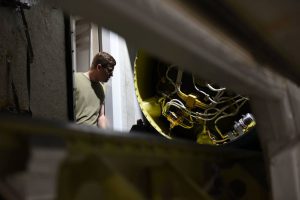
WASHINGTON ― Nuclear modernization opponents and defenders are gearing up to fight again over the next-generation intercontinental ballistic missile and other efforts.
Rep. John Garamendi, D-Calif., and a skeptic of nuclear spending on the House Armed Services Committee, confirmed he plans to offer nuclear-themed amendments when the annual defense bill receives House floor consideration later this month. One aims to pause the Air Force’s nascent Ground Based Strategic Deterrent in favor of maintaining the missile it would replace, the Minuteman III; another would zero out funds for the GBSD’s warhead, the W87-1.
“The bottom line is that we could pause the entire GBSD program and push forward into the future a $100 billion expense,” Garamendi, who chairs the House Armed Services readiness subcommittee, told Defense News.
With the Biden administration’s Nuclear Posture Review due early next year, Garamendi said the amendments are part of his “strategy to raise the issues, to gather the data, test the arguments against the opposition … and create an occasional success.”
More nuclear waste may be heading to WIPP on US 285
[WIPP is the world’s only operating underground nuclear waste dump. It is limited to nuclear weapons waste, but the federal government is trying to expand WIPP and break its promises and social contract with New Mexicans.
Help Us STOP FOREVER WIPP-Waste Isolation Pilot Plant. The nuclear waste dump is permitted to operate until 2024, but the Federal government wants to expand the amount and types of waste allowed with NO end date.
We need your help to protect New Mexico!]
“At a recent Santa Fe County Town Hall, activist Cindy Weehler of 285 ALL said the U.S. Department of Energy made it clear that it’s going to expand its nuclear waste program, she said. She said she’s concerned about the new type of radioactive waste that would be traveling through the county, which would be diluted plutonium, instead of contaminated items.”
BY ISABELLA ALVES / JOURNAL NORTH abqjournal.com Copyright © 2021 Albuquerque Journal
Spanning the length of the state, U.S. Highway 285 is a major thoroughfare for truck transports and other traffic. This busy highway, nicknamed “Death Highway” due to the number of fatal accidents on it, may get busier.
Concerned citizens in Santa Fe County recently called out the U.S. Department of Energy’s Waste Isolation Pilot Plant for expanding its mission in a permit renewal application to include more nuclear waste being shipped along the 285 corridor.
Part of Highway 285 goes along the southern edge of the city of Santa Fe, and local activists are calling on local and federal leaders to halt this increase in nuclear waste transportation.
The permit application is requesting to add two nuclear waste storage panels to WIPP that would increase the waste volume in these areas.
Montco offering potassium iodide tablets in the event of a nuclear emergency
Radioactive iodine, a contaminant that could be released in the event of a nuclear accident, can increase the risk of thyroid cancer. Potassium iodide (KI) can help protect the thyroid gland against radioactive iodine.
By Maria Pulcinella whyy.org September 8, 2021
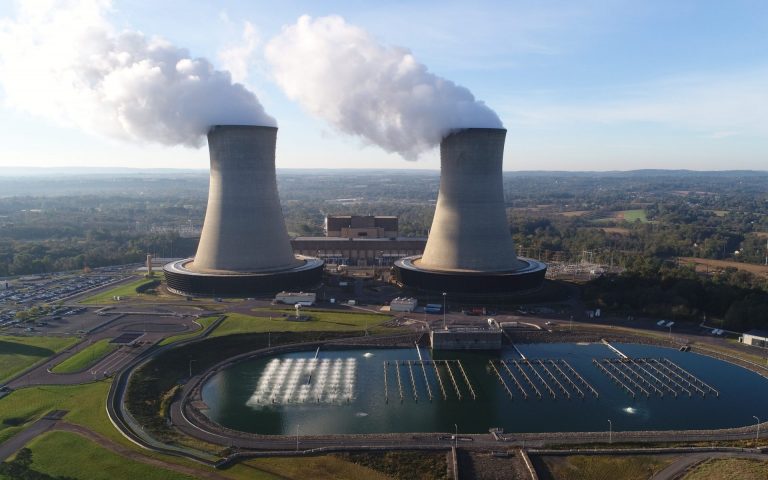
If you live, work, or attend school within a 10-mile radius of the Limerick nuclear power plant, local health officials have a freebie for you — albeit not a sexy one.
Montgomery County’s Office of Public Health will be handing out potassium iodide tablets to those in close proximity to the Limerick Generating Station.
The distribution is part of a statewide emergency preparedness effort — the Limerick site is one of Pennsylvania’s four active nuclear power plants.
General Assembly President calls for halt to nuclear tests
The President of the UN General Assembly, Volkan Bozkir, on Wednesday called for an end to nuclear tests, as ambassadors gathered to commemorate the International Day against Nuclear Tests, observed annually on 29 August.
UN News news.un.org September 8, 2021
Despite recent developments in advancing nuclear disarmament, more remains to be done, said Mr. Bozkir, urging countries which have yet to sign or ratify the Comprehensive Nuclear-Test-Ban Treaty (CTBT) to do so without delay.
Today we mark the International Day against Nuclear Tests, an opportunity to remember the victims of nuclear testing, honor the survivors and examine the legacy impacts of nuclear weapons, including that of nuclear waste. My full remarks here: pic.twitter.com/1onIGt3TJ5
— UN GA President (@UN_PGA) September 8, 2021
“More than 2,000 nuclear tests have been conducted since the advent of nuclear weapons. While the rate of testing has declined, they have not stopped,” he said.
“These tests have long lasting health and environmental consequences. They devastate the communities they impact. They displace families from their homelands.”
Progress on disarmament
Underlining the General Assembly’s commitment to nuclear disarmament, Mr. Bozkir welcomed progress achieved over the past year amid the challenges of the COVID-19 pandemic.
US attorney details illegal acts in construction projects, sealing the fate of the “nuclear renaissance”
“The indictment reveals important new information about how Benjamin and Westinghouse conspired to hide crucial information about reactor completion dates from the owners…It states that the defendant made “false and misleading statements” and “knowingly devised a scheme” to continue the project based on misrepresentations.”
By Tom Clements | thebulletin.org
VC Summer nuclear site in South Carolina, with operating unit 1 in the background and abandoned twin unit Westinghouse AP1000 nuclear reactor construction in the foreground; Tim Mousseau ©2018. Used with permission to the Bulletin of Atomic ScientistsThe ill-fated construction of new nuclear reactors in South Carolina—one of two such troubled Westinghouse reactor construction projects in the United States—was abruptly terminated on July 31, 2017, but the effort to determine legal accountability for the project’s colossal failure is only now hitting its stride.
The South Carolina legislature conducted hearings about the project’s collapse. But it has fallen to the United States Attorney for South Carolina to outline internal decisions that led to project abandonment—via court filings, plea agreements, and indictments. These filings are proving to be the best documentation so far of criminal behavior related to projects that were part of a much-hyped “nuclear renaissance” that began in the early-2000s but has since petered out in the United States.
On August 18, 2021, a second Westinghouse official was charged in a federal grand jury indictment filed with the court in Columbia, South Carolina. The charges outline “the scheme” to cover up key details about the problem-plagued project to construct two 1,100 megawatt (MW) Westinghouse AP1000 light-water reactors at the VC Summer site north of Columbia.
The project was initiated in May 2008 and gained final approval in February 2009.
According to the 18-page indictment, former Senior Vice President of New Plants and Major Projects Jeffrey Benjamin “had first-line responsibility for Westinghouse’s nuclear reactors worldwide.” He was charged, according to a news release, “with sixteen felony counts including conspiracy, wire fraud, securities fraud, and causing a publicly-traded company to keep a false record.” On August 30, the US attorney’s office announced that Benjamin would be arraigned on August 31.
In order for SCANA, parent of utility South Carolina Electric and Gas, to gain a federal production tax credit of $1.4 billion, essential to the financial viability of the project, both units had to be finished by December 31, 2020.
Benjamin and Westinghouse knew that the dates would never be met, but SCANA doggedly stuck with them given production-tax-credit pressure.The indictment reveals important new information about how Benjamin and Westinghouse conspired to hide crucial information about reactor completion dates from the owners, the publicly held utility SCANA, now defunct, and its junior partner, the state-owned South Carolina Public Service Authority (known as Santee Cooper). It states that the defendant made “false and misleading statements” and “knowingly devised a scheme” to continue the project based on misrepresentations via Westinghouse to the owners, state regulators, the Securities and Exchange Commission, investors, and ratepayers. Nervous SCANA officials played along with the inept cover-up efforts and passed on false and inaccurate information to regulators.
Benjamin, the fourth official to be charged, faces 20 years in prison and a $5 million fine. Issuance of the indictment suggests he intends to face trial rather than plead guilty—a risky proposition given the waste of $9 billion on construction of a project that delivered nothing to consumers (and potential jury members) but a series of nine rate hikes. While those hikes were eventually eliminated and further rate hikes were avoided, a small nuclear construction charge in current bills stands as an enduring reminder of the debacle.
On May 21, 2021, Carl Churchman, Westinghouse Electric Corporation vice president and project director, was indicted on the felony charge of making false statements to the FBI about the status of the project. He pleaded guilty on June 10.
In February, Kevin Marsh, former SCANA CEO, also entered a guilty plea in federal court for conspiracy to commit felony fraud. And Stephen Byrne, former SCANA chief operating officer and executive vice president, pleaded guilty in July 2020 to conspiracy to commit mail and wire fraud. Both gave false testimony numerous times to regulators.
The August 18, 2021 news release from the South Carolina US Attorney’s Office made clear that the investigation continues: “`This indictment with its attendant allegations and charges is another step toward justice for all those responsible for the VC Summer nuclear plant fiasco,’ said FBI Special Agent in Charge Susan Ferensic.”The two SCANA officials and Westinghouse’s Churchman are subject to five-year prison sentences and stiff fines but will likely face reduced sentences in exchange for fully cooperating with investigators, something required in their plea agreements.
Both Westinghouse and SCANA were eventually forced into bankruptcy. Westinghouse was acquired by Brookfield Business Partners, and SCANA vanished after an easy takeover by Dominion Energy, approved in December 2018. The fate of the debt-strapped, state-owned partner Santee Cooper rages on in the South Carolina Legislature.
One entity that will likely never be held responsible for the disastrous project that it authorized is the South Carolina Public Service Commission. Members of this body unanimously voted in favor of anything SCANA requested during the entire course of the project and balked at providing oversight as it fell apart. All were replaced by the Legislature at the end of their terms with new members, who have been less accommodating to utility requests.
Public interest intervenors were prescient in their early assessments of the project. Friends of the Earth, which intervened before the Public Service Commission against the project in August 2008, noted SCANA’s disregard for energy efficiency and alternative forms of energy. That organization predicted that the project’s fate would be what the US Attorney’s Office affirmed in the August 18, 2021 indictment: “from the outset, the Project was characterized by cost overruns and significant delays.” Likewise, toward the end of the project in June 2017, just after Westinghouse declared bankruptcy, Friends of the Earth and the Sierra Club filed a formal complaint detailing why the project must be canceled. As money hemorrhaged, the owners made that earth-shaking decision a month later. And the mighty crash still reverberates.
In Georgia, construction of the other AP1000 project, located at Plant Vogtle, stumbles along to massive cost overruns and significant schedule delays. A main difference between the projects: Georgia Power has a large enough customer base to absorb the financial blow of its struggling project. With cost projections for the two Vogtle units nearing a stunning $30 billion, finishing dates presented to the Georgia Public Service Commission remain open to question.
The Carolina and Georgia reactor projects went forward under laws related to “construction work in progress” that allowed financing charges to be billed to the ratepayers from the start of construction, long before the reactors were online. Both the South Carolina law, the Baseload Review Act, and Georgia’s Nuclear Energy Financing Act have been repealed.
The fault for the shocking AP1000 misadventure falls squarely on the shoulders of Westinghouse and the involved utilities. They all fell victim to their own reactor-promotion propaganda but lacked the technical and management competence to pull off the projects as envisaged. With pursuit of large light-water reactors in the United States all but dead, the nuclear industry is now endlessly touting an array of “small modular reactors” and a dizzying menu of so-called “advanced reactors,” all of which exist only on paper. It’s unclear if there’s a path forward for this nuclear renaissance redux, and if there is, whether taxpayers will be put on the hook for financing some of it.
Germany Calls on Iran to Resume Nuclear Talks
Informal negotiations stalled after Iran’s new hardline president was elected in June. Tehran has caused an international outcry in recent months over the broadening scope of its nuclear program.
“US President Joe Biden has signaled his eagerness to resume direct talks, but Iranian officials have yet to do the same.”
The German Foreign Ministry on Wednesday said it “vehemently” urged Iran to restart negotiations aimed at reviving a defunct nuclear deal.
“We are ready to do so, but the time window won’t be open indefinitely,” a ministry spokesman said.
The French foreign ministry made a similar statement later on Wednesday.
In 2015, Iran, the United States, United Kingdom, Germany, France, Russia, China, plus EU representatives, worked out a deal to place curbs on Iran’s nuclear program. The Joint Comprehensive Plan of Action (JCPOA) sought to prevent Iran from making nuclear weapons by restricting the extent to which it could enrich uranium, install nuclear centrifuges, and stockpile radioactive material. In exchange, the other signatories agreed to drop certain sanctions against Tehran.
‘A combination of failures:’ why 3.6m pounds of nuclear waste is buried on a popular California beach
The San Onofre nuclear power plant shut down years ago – but residents and experts worry what will happen with the waste left behind
The defunct San Onofre nuclear power plant near San Clemente, California. Photograph: Lenny Ignelzi/APMore than 2 million visitors flock each year to California’s San Onofre state beach, a dreamy slice of coastline just north of San Diego. The beach is popular with surfers, lies across one of the largest Marine Corps bases in the Unites States and has a 10,000-year-old sacred Native American site nearby. It even landed a shout-out in the Beach Boys’ 1963 classic Surfin’ USA.
But for all the good vibes and stellar sunsets, beneath the surface hides a potential threat: 3.6m lb of nuclear waste from a group of nuclear reactors shut down nearly a decade ago. Decades of political gridlock have left it indefinitely stranded, susceptible to threats including corrosion, earthquakes and sea level rise.
The San Onofre reactors are among dozens across the United States phasing out, but experts say they best represent the uncertain future of nuclear energy.
“It’s a combination of failures, really,” said Gregory Jaczko, who chaired the US Nuclear Regulatory Commission (NRC), the top federal enforcer, between 2009 and 2012, of the situation at San Onofre.
‘Star Wars’ no longer fiction
ABQ at center of research for tomorrow’s weapons
“Albuquerque, New Mexico, is the epicenter of directed energy research in the United States…If the arms race for directed energy indeed takes off, much of the action could take place in Albuquerque.”
BY RYAN BOETEL / JOURNAL STAFF WRITER Copyright © 2021 Albuquerque Journal August 20, 2021 abqjournal.com
Force fields protecting us from drones and missiles.
Guns that shoot lasers instead of firing bullets.
Rock ’em Sock ’em Robots zapping at each other on the battlefield.
A new report by the Air Force Research Laboratory titled Directed Energy Futures 2060 describes the sorts of “directed energy” weapons that may come to exist in the next 40 years. And the expected technology – much of which may be researched and developed in Albuquerque – is like something out of a science fiction movie.
Officials from multiple Department of Defense entities, partners with the North Atlantic Treaty Organization and other experts came together to write the report, which says the world is at a “tipping point.”
MOX failed. But plutonium pit production is different, argues NNSA exec.
“Even with a potential surge in production at Los Alamos, there remains uncertainty about that capability, especially with their history of outages,” U.S. Rep. Joe Wilson
By Colin Demarest cdemarest@aikenstandard.com postandcourier.com August 21, 2021
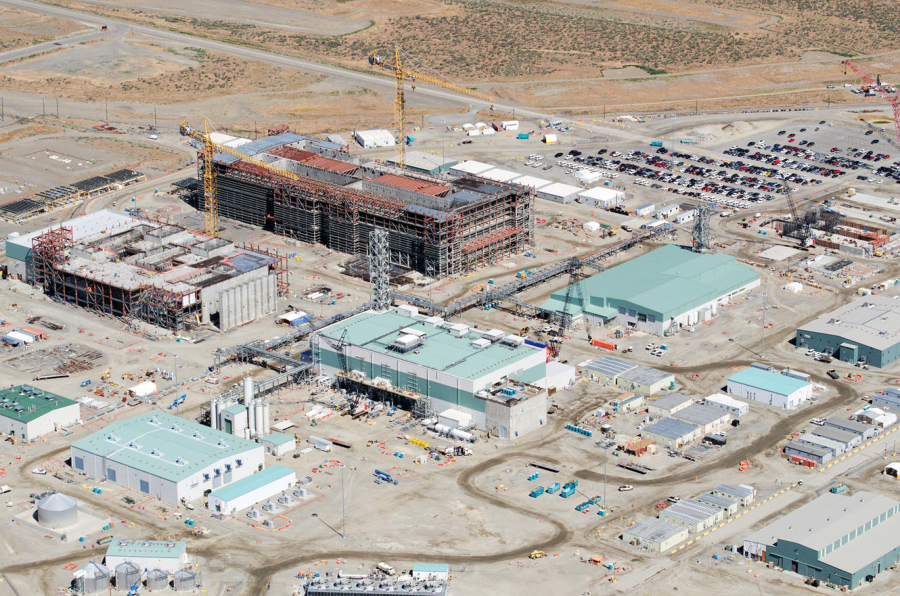
ALEXANDRIA, Va. — In late 2018, a behemoth fuel facility at the Savannah River Site was axed. Its cancellation, enabled by a court ruling and promises of saving billions of dollars, marooned more than a decade of work and vexed a clutch of South Carolina politicians.
What remained was a shell: a Mixed Oxide Fuel Fabrication Facility that was partially built and would eventually be secured and preserved, like an insect suspended in amber.
In the years that followed, the federal government began seriously pursuing a nuclear weapons mission – the crafting of warhead components known as plutonium pits — using the MOX skeleton as a springboard. That effort continues today, and at a clip some have likened to the Cold War or the Manhattan Project, the odyssey that birthed the nuclear age.
But where MOX failed, the Palmetto State pit factory will not, according Michael Thompson, a National Nuclear Security Administration executive. While bilateral friction and “higher-level policy choices” hamstrung the reactor fuel project, it’s a different matter when it comes to the plutonium cores and the Savannah River Plutonium Processing Facility, Thompson argued earlier this month.
Continue reading
We could all learn a lesson on disarmament from Archbishop Hunthausen
By Leonard Eiger nrconline.com
“I am grateful for having been invited to speak to you on disarmament because it forces me to a kind of personal disarmament. This is a subject I have thought about and prayed over for many years. I can recall vividly hearing the news of the atomic bombing of Hiroshima in 1945. I was deeply shocked. I could not then put into words the shock I felt from the news that a city of hundreds of thousands of people had been devastated by a single bomb. Hiroshima challenged my faith as a Christian in a way I am only now beginning to understand. That awful event and its successor at Nagasaki sank into my soul, as they have in fact sunk into the souls of all of us, whether we recognize it or not.”
Those are the opening lines of the “Faith and Disarmament” speech Seattle Archbishop Raymond Hunthausen delivered on June 12, 1981. Hunthausen had become active in resistance to the U.S. stockpiling of nuclear weapons and the new Trident submarine-based nuclear weapons system, which included the Bangor Trident submarine base in Puget Sound just 20 miles west of Seattle.
In that 1981 speech, Hunthausen referred to the Trident submarines based there as “the Auschwitz of Puget Sound.” In context, it was both a profound and prophetic statement of fact.
As Hunthausen said, “Trident is the Auschwitz of Puget Sound because of the massive cooperation required in our area — the enormous sinful complicity that is necessary — for the eventual incineration of millions of our brother and sister human beings.”
Stop Nuclear Waste Site Expansion Before it’s Too Late
John Watson-Jones, Letters to the Editor, santafenewmexican.com
Many New Mexicans are aware that Waste Isolation Pilot Project in Southern New Mexico is the nation’s sole repository for radioactive weapons waste, but did you know that WIPP has surpassed its authorized capacity and that the federal Department of Energy has given it a new mission: to build a new shaft and more than double its capacity?
The resulting increased amount of radioactive plutonium being transported through the Santa Fe area should worry us all. You might assume that nuclear experts have the storage and transportation situation well in hand, but the Los Alamos National Laboratory and WIPP have dismal safety records.
If the powder form of plutonium being carried by tractor-trailers on N.M. 599, Interstate 25, and U.S. 285 is accidentally released into the air, even minuscule doses are 100 percent carcinogenic, especially to children, and cleanup is virtually impossible. And it is our local jurisdictions that respond first to highway accidents. To better understand the danger, see stopforeverwipp.org.
Fortunately there is something citizens can to do try to stop this dangerous expansion. Contact Gov. Michelle Lujan Grisham, who has to approve such a change. Tell her to tell the Energy Department to stop digging a fifth shaft at WIPP. You can use governor.state.nm.us/contact-the-governor.
John Watson-Jones
Galisteo
The Secret ‘White Trains’ That Carried Nuclear Weapons Around the U.S.
For as long as the United States has had nuclear weapons, officials have struggled with how to transport the destructive technology.
“The epicenter of nuclear transit was the Pantex Plant, about 17 miles outside of downtown Amarillo, Texas, a maze-like complex of dozens of buildings located on 10,000 acres of land. Amarillo was the final destination for almost all of America’s nuclear trains and the Pantex Plant was the nation’s only assembly point for nuclear weapons, a role it maintains to this day.“
BRIANNA NOFIL | UPDATED: MAY 6, 2021, ORIGINAL: MAY 31, 2018 history.com
At first glance, the job posting looks like a standard help-wanted ad for a cross-country trucker. Up to three weeks a month on the road in an 18-wheel tractor-trailer, traveling through the contiguous 48 states. Risks include inclement weather, around-the-clock travel, and potentially adverse environmental conditions. But then the fine print: Candidates should have “experience in performing high-risk armed tactical security work…and maneuvering against a hostile adversary.”
The U.S. government is hiring “Nuclear Materials Couriers.” Since the 1950s, this team of federal agents, most of them ex-military, has been tasked with ferrying America’s roughly 6,000 nuclear warheads and extensive supply of nuclear materials across the roads and highways of the United States. America’s nuclear facilities are spread out throughout the country, on over 2.4 million acres of federal real estate, overseen by the Department of Energy (DOE)—a labyrinth of a system the Bulletin of the Atomic Scientists called “highly scattered and fragmented…with few enforceable rules.”
Some sites are for assembly, some are for active weapons, some are for chemicals, some are for mechanical parts. What this means in practice is that nuclear materials have to move around—a lot.
Staffers see little interest or action on nuclear waste issues
“The Town of Vernon supports a repository site or sites under the following conditions: Approval by the Federal Government, DOE, Congress, and the NRC. Deemed/tested safe by engineering and environmental experts by known and reasonable standards. Received approval/consent from the state, territory, town, or country chosen to be the repository/repositories. This includes one single repository, multiple repositories, or interim storage,”
By Susan Smallheer, Brattleboro Reformer | August 24, 2021, reformer.com
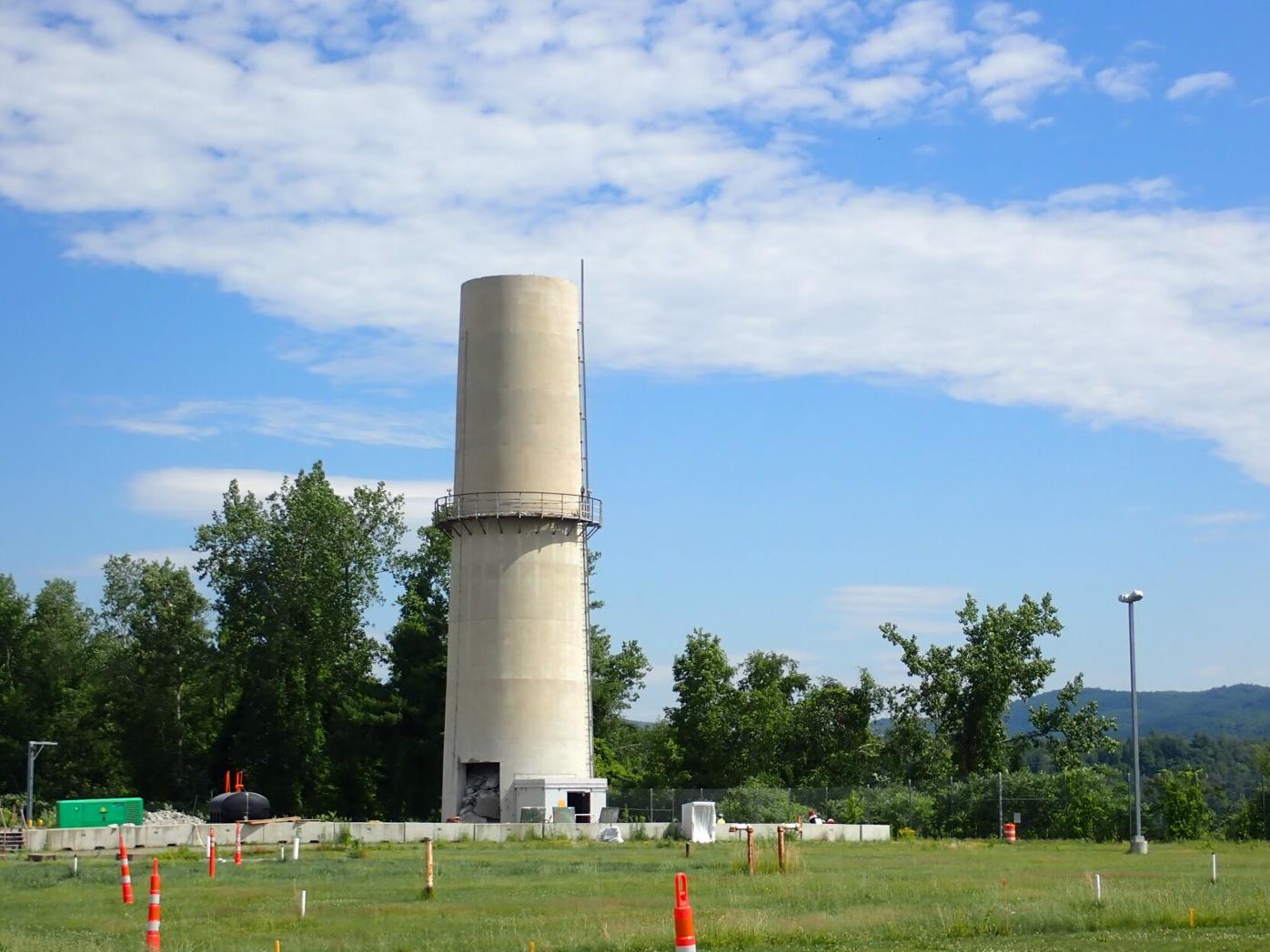
Photo provided by NorthStar
BRATTLEBORO — The 117th Congress has introduced few bills this session dealing with nuclear power and nuclear waste, staffers for Vermont’s congressional delegation told a Vermont committee studying federal nuclear waste policies Monday.
The committee, an arm of the Vermont Nuclear Decommissioning Citizens Advisory Panel, is investigating whether it should take a stand on what happens to the high-level radioactive waste currently stored at the Vermont Yankee site in about four-dozen stainless steel and concrete casks.
Two companies, including the parent company of NorthStar Decommissioning, which owns the Vermont Yankee plant and is demolishing it, want to build interim storage facilities for high-level waste — one in west Texas and the other in New Mexico. Interim storage would hold radioactive waste until a federal depository is built.
The two congressional staffers who met with the committee, Haley Pero, from Sen. Bernie Sanders, I-Vt., office, and Thea Wurzburg of Rep. Peter Welch, D-Vt.’s office, both said they have seen little interest from the Biden administration in taking on the difficult issues of nuclear power and its nuclear waste.
The administration of former President Donald Trump tried to revive funding for the Yucca Mountain high-level radioactive waste facility in Nevada, but made no progress, Pero said. Not as many bills have come up this year, Pero said.
Congress’ attention is elsewhere, the two staffers said.
The Vermont panel last year backed off an earlier endorsement of interim waste storage, like the facilities proposed by NorthStar in Texas and Holtec International in New Mexico.
Cleaning up nuclear waste at Hanford: Secrecy, delays and budget debates
A plan to turn radioactive waste into glass logs has raised a lot of questions, many of which don’t appear to have public answers.
“It’s not clear whether the high-level waste plant will ever operate,” said Tom Carpenter, executive director of Hanford Challenge, a watchdog organization.
“We need to get some stuff out of here, or we’ll end up with it permanently staying here…This is a generational problem,” Stephen Wiesman said.
Ultimately, this project, originally scheduled to be finished this decade, will likely be completed in the latter half of this century. In other words, it could take 70 to 75 years (mid-1990s to 2069) to deal with the 56 million gallons of radioactive tank waste created by 42 years of manufacturing plutonium.
By John Stang, Crosscut columbian.com August 23, 2021

Stephen Wiesman has worked for about three decades on the Hanford Nuclear Reservation’s project to convert the radioactive waste in its huge underground tanks into safer glass logs.
A Hanford engineer since 1980, Wiesman helped create the Office of Protection, the Department of Energy’s unit in charge of dealing with the nuclear waste stored in those tanks, serving as a senior technical adviser since the late 1990s.
Now 75 and retired since 2012, Wiesman is on the Hanford Advisory Board, which represents environmentalists, Tri-Citians, tribes, health officials, business interests and governments from across the Northwest. Currently, Wiesman is the board’s chairman.
Hanford dates back to late 1942, when it became a super-secret World War II site to create plutonium for the first atomic bomb exploded — in New Mexico and later over Nagasaki, Japan. The nuclear reservation continued that mission during the Cold War and through 1987.
During four decades of production, uranium rods and other nuclear waste were stored in 149 single-shell tanks, of which at least 68 have since sprung leaks. Hanford added 28 safer double-shell tanks and transferred the liquid wastes into them.
Hanford has 56 million gallons of radioactive waste in those 177 underground tanks at this remote decommissioned nuclear production site near the Columbia River in Benton County.
Those leak-prone tanks are arguably the most radiologically contaminated place in the Western Hemisphere.
Nuclear News Archives – 2021
Nothing Found
It seems we can’t find what you’re looking for. Perhaps searching can help.
Nuclear News Archives – 2020
E.P.A., Citing Coronavirus, Drastically Relaxes Rules for Polluters
“Environmental groups and former Obama administration officials described the policy as an unprecedented relaxation of rules for petrochemical plants and other major polluters.”
WASHINGTON — The Environmental Protection Agency on Thursday announced a sweeping relaxation of environmental rules in response to the coronavirus pandemic, allowing power plants, factories and other facilities to determine for themselves if they are able to meet legal requirements on reporting air and water pollution.
The move comes amid an influx of requests from businesses for a relaxation of regulations as they face layoffs, personnel restrictions and other problems related to the coronavirus outbreak.
Trump’s Environmental Rollbacks Find Opposition Within: Staff Scientists
“Federal scientists and lawyers, told to undo regulations that some have worked on for decades, have embedded data into technical documents that environmental lawyers are using to challenge the rollbacks.”
ARTICLE BY: CORAL DAVENPORT | nytimes.com
“WASHINGTON — President Trump has made rolling back environmental regulations a centerpiece of his administration, moving to erase Obama-era efforts ranging from landmark fuel efficiency standards and coal industry controls to more routine rules on paint solvents and industrial soot.
Most Hanford workers to stay home over coronavirus concerns. No word on for how long
The site in Eastern Washington was used during World War II and the Cold War to produce plutonium for the nation’s nuclear weapons program. It was left massively contaminated with radioactive and hazardous chemical waste, which is being cleaned up now at a cost of about $2.5 billion a year.
BY ANNETTE CARY | tricityherald.com
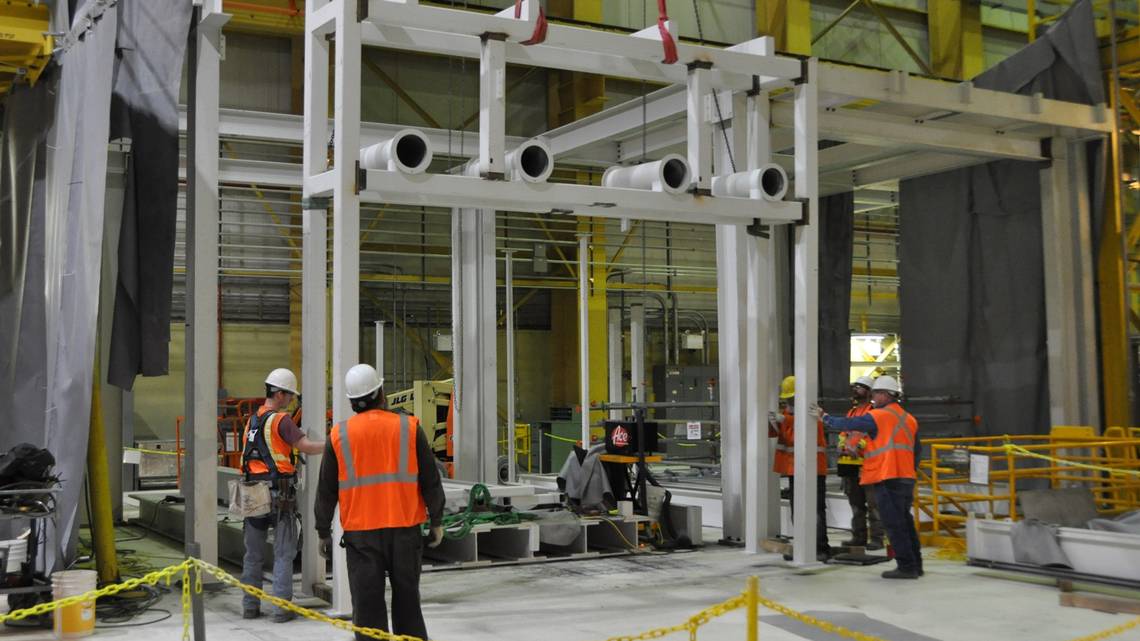
Thousands of Hanford workers will stay home for a second day Tuesday after the Department of Energy announced Sunday evening that the site was going into a temporary planning status to ensure the safety of employees during the COVID-19 pandemic.
Only workers essential to the nuclear reservation’s safety and security should report to work, unless they receive a call from their supervisor saying they are needed for planning work, DOE said.
Hanford employs about 9,300 workers, plus some additional subcontractor employees.
The Coronavirus and the Urgent Need to Redefine National Security
“In order to address serious domestic concerns [such as coronavirus], the United States must seek significant savings by reducing the Pentagon budget, ending endless wars, and returning to the arms control and disarmament arena.”
ARTICLE BY: MELVIN GOODMAN | counterpunch.org
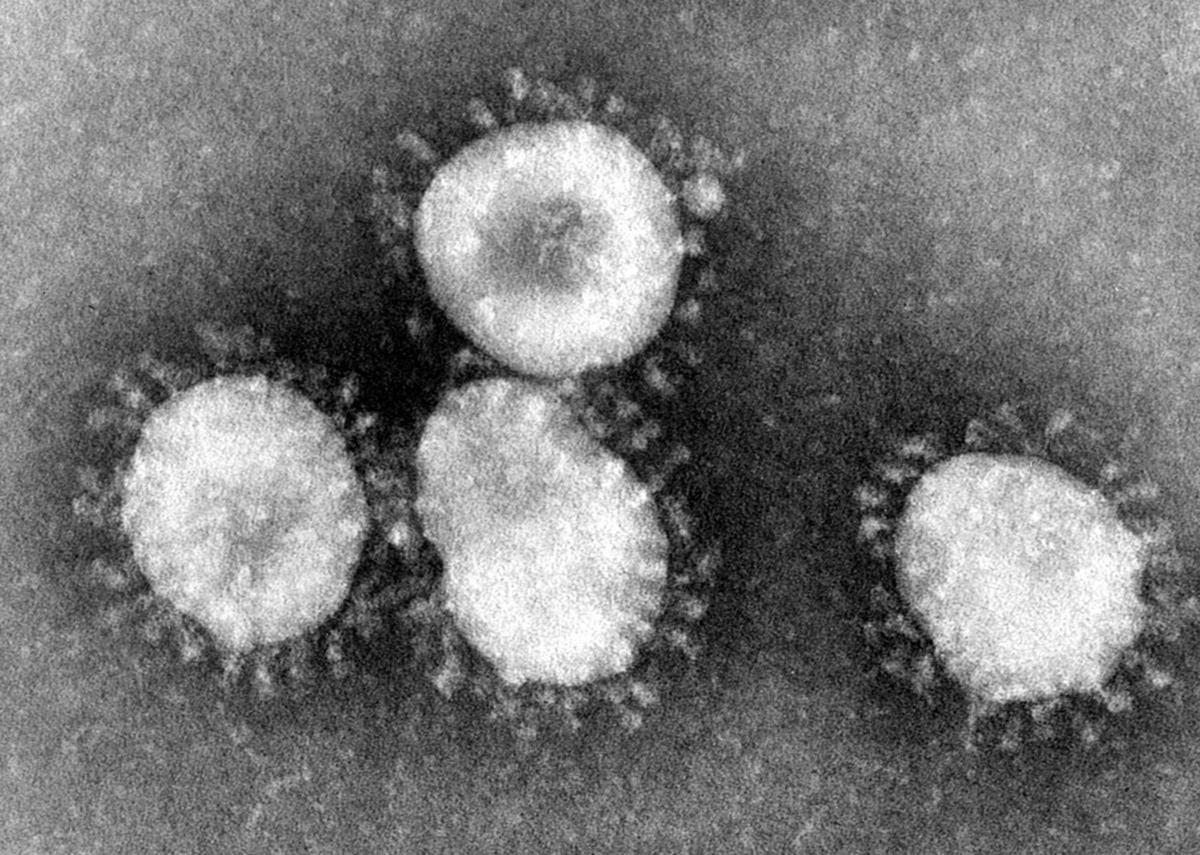
For far too long, the United States has been wastefully spending its precious budgetary resources on a nineteenth-century military strategy and a strategic arms policy that has brought no advantages to the American people. For the past three decades, our national security policies have been ineffectual and irrelevant to the genuine threats we face today. These threats do not emanate from Russia or China. Rather, they stem from an underfunded and highly vulnerable public health system, a cyber world that is out of control, and a crumbling infrastructure. In 2017, the American Society of Civil Engineers gave a grade of D-plus to the nation’s infrastructure, with the lowest grades going to roads, bridges, mass transit, and water management systems.
Coronavirus pandemic could delay licensing of nuclear waste facility near Carlsbad
New Mexico’s congresspeople called on the federal government to extend a public comment period for an environmental impact statement (EIS) on a proposal by Holtec International to build a nuclear waste repository in southeast New Mexico.
ADRIAN HEDDEN | currentargus.com
Gov. Chris Christie, Camden Mayor Dana Redd and other officials spoke about the international firm’s role in reviving the city during a Sept. 7 ribbon-cutting.The letter signed by U.S. Sens. Tom Udall and Martin Heinrich (D-NM) and U.S. Reps. Xochitl Torres Small, Ben Ray Lujan Deb Haaland (D-NM), urged the federal Nuclear Regulatory Commission (NRC) to extend the 60-day public comment period until public hearings could be held in New Mexico.
The request followed a State ban on gatherings of more than 10 people amid a global outbreak of coronavirus that left thousands dead across the world.
The comment period began Friday as the draft environmental impact statement was published in the Federal Register.
LANL set to release radioactive vapors
Los Alamos National Laboratory will release radioactive vapors into the atmosphere to ventilate several barrels of tritium-tainted waste generated during the Cold War. Jay Coghlan, executive director of Nuclear Watch New Mexico, said in the 1990s he won a lawsuit against the Energy Department for falsely claiming a building’s “shielding factor” kept radioactive emissions within federal limits.
“The undocumented assertion in the application that half of the tritium could remain behind in equipment should be viewed with suspicion,” Coghlan said.
ARTICLE BY: SCOTT WYLAND | santafenewmexican.com
The lab informed the U.S. Environmental Protection Agency earlier this month that it would ventilate four waste containers, beginning April 17, to relieve the built-up, radioactive hydrogen in the barrels’ headspace to prevent them from rupturing while they’re being handled. The EPA approved the application for the radioactive release last year.
Groups Request DOE Publish “Notice” of Release of Plutonium Bomb Document in Federal Register
“Request to Publish Notice of Draft Supplement Analysis in the Federal Register, DOE/EIS-0380-SA-06: Draft Supplement Analysis”
Public interest groups working for US DOE to fully comply with the National Environmental Policy Act (NEPA) in its unjustified plans to produce more plutonium “pits” for new and refurbished nuclear weapons have written to DOE concerning plans for expanded pit production at the Los Alamos National Lab in New Mexico. The lawyer for SRS Watch, Nuclear Watch New Mexico (Santa Fee, NM) and Tri-Valley CARES (Livermore, CA) wrote to DOE’s National Nuclear Security Administration (NNSA) on March 20, 2020, requesting that NNSA publish in the Federal Register a notice that a document on pit production was released on March 10, 2020 and, further, that it be opened for a 45-day comment period from the date of publication in the Federal Register.
The group letter is posted here: Request for Publication of Notice of Draft SA in Federal Register March 20 2020
Navy asks Lockheed Martin to build additional Trident II D5 submarine-launched ballistic nuclear missiles
The Trident II D5 is the primary U.S. sea-based nuclear ballistic missile, and is deployed aboard U.S. Navy Ohio-class ballistic missile submarines.
BY JOHN KELLER | tricityherald.com
WASHINGTON – Strategic weapons experts at Lockheed Martin Corp. will build additional UGM-133A Trident II D5 submarine-launched ballistic nuclear missiles and support deployed D5 nuclear weapons under terms of a half-billion-dollar order announced Thursday.
Undisclosed delays plague atomic programs, cost billions to fix
“The Trump administration wants $3.1 billion more this year than last for the Energy Department’s nuclear weapons budget, but internal government documents show the raise is devoted substantially to covering previously undisclosed cost overruns and avoiding years of new delays in the majority of U.S. atomic weapons programs.”
ARTICLE BY: JOHN M. DONNELLY | rollcall.com
UNITED STATES – MARCH 28: Lisa E. Gordon-Hagerty, under secretary for Nuclear Security and NNSA administrator, and Energy Secretary Rick Perry, testify during a Senate Armed Services Committee hearing titled “Department of Energy’s Atomic Energy Defense Programs,” in Dirksen Building on Thursday, March 28, 2019. (Photo By Tom Williams/CQ Roll Call)The new NNSA budget request is the latest example of the agency’s long-running problems
The Trump administration wants $3.1 billion more this year than last for the Energy Department’s nuclear weapons budget, but internal government documents show the raise is devoted substantially to covering previously undisclosed cost overruns and avoiding years of new delays in the majority of U.S. atomic weapons programs.
The administration has sold the 25 percent budget boost for the National Nuclear Security Administration only in broad terms as necessary to maintain America’s nuclear deterrent. However, the additional funds are needed not so much to advance capabilities as merely to keep troubled programs from falling further behind, according to the “official use only” correspondence obtained by CQ Roll Call.
U.S. Department of Energy to continue cleaning up New Mexico nuke sites
During the Cold War and Manhattan Project, Los Alamos National Laboratory in northern New Mexico was used to develop and test nuclear weapons, leaving behind a legacy of nuclear waste and environmental contamination.
ADRIAN HEDDEN | currentargus.com
For the next decade, the U.S. Department of Energy planned to continue disposing of nuclear waste at the Waste Isolation Pilot Plant near Carlsbad, while also improving infrastructure at the site and continuing clean-up efforts at nuclear facilities across New Mexico and the U.S.
In its 2020-2030 “Vision” released this month, the DOE’s Office of Environmental Management (EM) outlined plans for WIPP, and two other national laboratories it owns in New Mexico: Los Alamos (LANL) and Sandia (SNL) national laboratories.
WIPP is the nation’s only permanent repository for low-level transuranic (TRU) waste, which is permanently buried in an underground salt formation about 2,150 feet underground.
More Information on Tritium’s Significant Hazards
Routine Radioactive Releases from U.S. Nuclear Power Plants. An update to our comprehensive list and map of all operating U.S. reactors and where they release radioactivity into the air and water. Every nuclear power reactor dumps radioactive water, scatters radioactive particles, and disperses radioactive gases as part of its routine, everyday operation. It doesn’t take an accident. Federal regulations permit these radioactive releases. Any exposure to radiation increases the risk of damage to tissues, cells, DNA, and other vital molecules, potentially causing genetic mutations, cancers, leukemias, birth defects, and reproductive, cardiovascular, endocribe, and immune system disorders.
The pamphlet lists all reactors operating at the October 2015 press time. For an up to date track of reactors as they close, please visit our Reactors Are Closing page
[This pamphlet is broader than just tritium, but tritium plays a significant part. See especially the discussion of how hazardous even a couple of curies of hazardous radioactivity, badly handled, can be.]
Reports
Leak First, Fix Later: Uncontrolled and Unmonitored Radioactive Releases from Nuclear Power Plants
UPDATED!
Leak First, Fix Later: Uncontrolled and Unmonitored Radioactive Releases from Nuclear Power Plants. May 2015. Newly revised and updated from the original, Leak First is a Beyond Nuclear report on the persistent and ongoing leaking of radioactive effluent into ground and surface water from uninspected and unmaintained buried piping under every nuclear power plant.
UPDATED!
Executive Summary. May 2015.
Note: New leaks occur often and at multiple nuclear reactor sites. Watch this page for updates on new leaks and spills.
LANL waste is unearthed at housing site
A utility crew found hazardous waste buried on land the U.S. Energy Department had transferred to Los Alamos County, stalling work on an affordable housing project.
ARTICLE BY: SCOTT WYLAND | santafenewmexican.com
The discovery of low-level radioactive waste 7 to 12 feet in the ground off DP Road last month prompted the state Environment Department to write a letter that ordered the agency to supply more information about the waste, how it got there and how the agency planned to avoid future incidents.
The state agency is “extremely concerned” about the contamination unearthed on a former Los Alamos National Laboratory site and “the potential threat to human health and the environment,” wrote Kevin Pierard, the department’s Hazardous Waste Bureau chief, in a Feb. 28 letter.
Pierard demanded Energy Department and lab officials submit data on the site and the sources of contamination, as well as tests and investigations that were conducted.
“We are currently investigating and characterizing the waste located at the site to determine the extent of the contamination,” Energy Department managers wrote in response.
The waste was placed in three drums and moved to another site for further analysis, the Energy Department said. Crews have fenced off the construction site, covered it with tarp and posted signs to keep people out, the letter said.
Political Battle Brewing Over New Nuclear Program
“Congressional leadership has yet to receive the military requirement or justification for another new nuclear warhead,” a spokesperson for HASC Democrats said in an email.
“As recently as July 2019, the Department of Energy projected it would begin work on this warhead in 2023. Work on this new warhead will add billions of dollars to an already strained nuclear modernization plan.”
BY JON HARPER | nationaldefensemagazine.com
The Trump administration’s proposal to begin work on a new nuclear warhead program to modernize the nation’s aging stockpile is expected to be hotly contested.
For fiscal year 2021, President Donald Trump requested $28.9 billion for the Pentagon’s nuclear enterprise. He requested an additional $15.6 billion for efforts by the National Nuclear Security Administration, which manages the stockpile, including $53 million for NNSA work on a new warhead, dubbed the W93.
What is real national security? Comprehensive public health or more nuclear weapons?
Public Health as a National Security Concern
“Different perspectives on what “security” means compete for attention, and the literature that brings public health and national security together forces those in public health to contemplate these different perspectives and how they relate to the public health mission of protecting population health.” — Fidler, David P., “Public Health and National Security in the Global Age: Infectious Diseases, Bioterrorism, and Realpolitik”
Report: Nuclear waste cleanup efforts could be delayed
“It is shocking that DOE would propose to delay projects like the cesium-strontium capsules and the 324 Building contamination, which pose such great risks to the workers and public,” said Tom Carpenter, executive director for Hanford Challenge, a watchdog and worker advocacy group.
THE ASSOCIATED PRESS | sanluisobispo.com
The Department of Energy has announced priority plans for environmental cleanup nationwide and indicates a slower process for the decommissioned nuclear site in Washington state, a report said.
The focus at the Hanford Site will be to start treating waste at the $17 billion vitrification plant, but the report does not detail other work at the 580-square-mile (1,500-square-kilometer) site, the Tri-City Herald reported Tuesday.
The report does not mention moving radioactive capsules to safer storage and cleaning up a radioactive spill under one of the buildings a mile north of Richland.
ORIGINAL ARTICLE
9th Anniversary of Fukushima Daiichi Nuclear Disaster
Nine years have passed since the Great East Japan Earthquake and ensuing tsunami struck the Tohoku region on March 11, 2011, causing the disastrous accident at the TEPCO Daiichi nuclear power plant. The impacts of this nuclear disaster continue to this day.
We join together with people around the world to stand with the victims and continue working towards a peaceful world without nuclear power and nuclear weapons.
Public invited to comment on LANL impact statement
“NNSA [is] shutting the public out, while steamrolling exorbitantly expensive expanded pit production…There is a clear need for a nationwide programmatic environmental impact statement to justify or not expanded plutonium pit production, followed by a new site-wide environmental impact statement for Los Alamos,” — Jay Coghlan, Nuclear Watch New Mexico
BY T.S. LAST | abqjournal.com Copyright © 2020 Albuquerque Journal
SANTA FE – The National Nuclear Security Administration on Tuesday released its draft Supplement Analysis to the 2008 Site-wide Environmental Impact Statement for Los Alamos National Laboratory, concluding that it doesn’t have to complete an environmental impact statement.
The study examines whether environmental analysis for expanded plutonium pit production at LANL should be required under the National Environmental Policy Act.
“Based on analysis in this SA, NNSA preliminarily concludes that no further National Environmental Policy Act documentation for LANL at a site-specific level is required,” the document says. “However, NNSA will consider comments on this draft SA prior to publishing a final SA.”
“Proud to be an American?” What an American admiral forgets about nuclear war
“Today, all these years later, the Trump administration is much more focused on acquiring new nuclear weapons systems than constraining or eliminating them. And the White House seems all too eager to walk away from the treaties and tools that were built to reduce these weapons’ greatest risks.”
MONICA MONTGOMERY | thebulletin.org

In late February, Adm. Charles Richard, head of US Strategic Command, told a House committee that the innovations going into a new nuclear warhead are what make him “proud to be an American.”
He was referring to the W93, a new nuclear warhead that will be used on submarine-launched ballistic missiles and that the Trump administration wants $53 million to start work on this year. While the design and timeline remain unclear, the administration forecasts that the price tag for developing and building this new weapon will reach over $1 billion per year in the next four years. The W93 would join or replace at least three other submarine-launched nuclear warheads that already exist and for which billions already have been and are still being spent to modernize.
Non-Proliferation Treaty turns 50 as US funds new nukes
“You can’t preach temperance from a bar stool, you can’t tell others not to have nuclear weapons when you’re busy ‘modernizing’ your own.”
ARTICLE BY: JAY COGHLAN / NUCLEAR WATCH NEW MEXICO | abqjournal.com
Thursday marked the 50th anniversary of the Non-Proliferation Treaty, whose central bargain was that non-nuclear weapons states forswore acquiring them in exchange for which nuclear weapons states promised to enter into serious negotiations leading to their elimination. Those negotiations have never happened.
The Trump Administration has marked the occasion by finally releasing the detailed fiscal year 2021 Congressional Budget Request for the Department of Energy’s semi-autonomous nuclear weapons agency, the National Nuclear Security Administration. The NNSA’s program for new and upgraded nuclear weapons gets a $3 billion-plus mark-up to $15.6 billion, slated to jump to $17 billion annually by 2025.
Sandia Labs may get $300 million budget increase
Meanwhile, “[Los Alamos] laboratory’s funding for the cleanup of radioactive waste it produced during the Manhattan Project and Cold War would decrease by $100 million.”
SCOTT TURNER | abqjournal.com Copyright © 2020 Albuquerque Journal
Sandia National Laboratories would receive a $300 million increase in federal funding under President Donald Trump’s proposed fiscal 2021 budget.
Most of the increase involves the labs’ nuclear weapons program, Sandia officials told the Journal.
Progressive lawmakers waging new NDAA fight
“This administration has no regard for Congress, and unless we put in very strict parameters around our funding support and our authorization, they’re just going to continue to roll all over us.” – Rep. Pramila Jayapal (D-Wash.), co-chair of the Congressional Progressive Caucus
Progressive House Democrats are eyeing a new push to roll their top agenda items into the National Defense Authorization Act this spring, Connor O’Brien reports, as they seek to seize on support for their legislation but also anxiety over Trump’s expansive war powers and his diversion of military funding for the border wall.
The left wing of the Democratic caucus is still smarting after feeling they got rolled on attempts to block a military confrontation with Iran, head off a shift in Pentagon funds toward the border wall, limit nuclear weapons spending, reverse restrictions on transgender troops and withdraw U.S. military support in Yemen’s civil war.
“They note that not long after last year’s bill failed to require Congress to sign off on war with Iran, repeal the 2002 Iraq war authorization and limit Trump’s ability to move money, Trump ordered the killing of a top Iranian commander and moved to sap billions more from the Pentagon’s coffers for the wall,” O’Brien reports.
The White House gave this nuclear agency a giant funding increase. Can it spend it all?
“The proposed $3.1 billion increase for weapons is simply sprinting toward failure, and Congress should right-size NNSA’s workload to match what the complex can realistically do,” – Rep. Marcy Kaptur, D-Ohio
ARTICLE BY: AARON MEHTA | defensenews.com
WASHINGTON — Members of Congress used a hearing Tuesday to question whether the National Nuclear Security Administration, a semiautonomous arm of the Department of Energy that handles development of nuclear warheads, can spend an almost 20 percent funding increase requested by the Trump administration.
Joint Declaration between the Anishinabek Nation and the Iroquois Caucus on the Transport and Abandonment of Radioactive Waste
Preamble
The Anishinabek Nation and Iroquois Caucus have renewed their relationship and commitment of unity by smoking the sacred pipe. The two nations have met to discuss radioactive waste matters that are within their traditional and treaty territories
Central to the discussions were ceremony, and spirituality, as reflected in our inherent responsibilities and intimate relationship to the land, waters, and all our relations.
We the Anishinabek Nation and Iroquois Caucus have jurisdiction over the Great Lakes and St. Lawrence River basins as a result of Aboriginal titles, and the treaties that have been entered into by First Nations and the Crown. We have our own territories and exercise our jurisdiction on a Nation-to-Nation basis.
Heinrich grills energy secretary on proposed $100M budget cut for LANL cleanup
“I can’t understand why this administration does not value cleanup and would risk breaking the legal commitments [the Department of Energy] has made to the state of New Mexico with budget numbers like that,” Heinrich said. “Why is the cleanup number so abysmal in this budget?”
ARTICLE BY: SCOTT WYLAND | santafenewmexican.com March 3, 2020
U.S. Sen. Martin Heinrich fired tough questions and caustic comments at Energy Secretary Dan Brouillette on Tuesday over the proposed $100 million cut in Los Alamos National Laboratory’s cleanup program for radioactive waste it produced during the Manhattan Project and Cold War.
Nuclear Tests Marked Life on Earth With a Radioactive Spike
Even as it disappears, the “bomb spike” is revealing the ways humans have reshaped the planet.
STORY BY: CARL ZIMMER | theatlantic.com
On the morning of March 1, 1954, a hydrogen bomb went off in the middle of the Pacific Ocean. John Clark was only 20 miles away when he issued the order, huddled with his crew inside a windowless concrete blockhouse on Bikini Atoll. But seconds went by, and all was silent. He wondered if the bomb had failed. Eventually, he radioed a Navy ship monitoring the test explosion.
“It’s a good one,” they told him.
Then the blockhouse began to lurch. At least one crew member got seasick—“landsick” might be the better descriptor. A minute later, when the bomb blast reached them, the walls creaked and water shot out of the bathroom pipes. And then, once more, nothing. Clark waited for another impact—perhaps a tidal wave—but after 15 minutes he decided it was safe for the crew to venture outside.
The mushroom cloud towered into the sky. The explosion, dubbed “Castle Bravo,” was the largest nuclear-weapons test up to that point. It was intended to try out the first hydrogen bomb ready to be dropped from a plane.
Senators ask government watchdog to assess NNSA’s nuclear weapons spending
Read the letter here
BY: COLIN DEMAREST | aikenstandard.com
The James Forrestal Building, the headquarters of the U.S. Department of Energy in Washington, D.C. / Staff photo by Colin DemarestTwo prominent Democratic senators have asked a congressional watchdog to examine the National Nuclear Security Administration’s nuclear weapons spending and related workload.
The request comes a little more than two weeks after President Donald Trump unveiled his fiscal year 2021 budget request, which included $19.8 billion for the semiautonomous U.S. Department of Energy agency, $15.6 billion of which is flagged for nuclear weapons work.
That’s 25.2% above the fiscal year 2020 enacted level.
“Questions about affordability are critical given the significant expansion in NNSA’s budget and activities,” U.S Sens. Dianne Feinstein of California and Ed Markey of Massachusetts wrote in their Feb. 27 letter to the Government Accountability Office.
“The GAO raised concerns in a 2017 report about the affordability of NNSA modernization efforts,” the letter also reads, “and NNSA’s budget and activities have expanded significantly since that time.”
The independent accountability office investigates and issues reports often, touching everything from agriculture and food to national defense and tax policy.
“Nuclear Nightmares – THE BOMB, Presidents, Generals, and the Secret History of Nuclear War”
https://www.nytimes.com/2020/01/28/books/review/the-bomb-fred-kaplan.html
THE BOMB
Presidents, Generals, and the Secret History of Nuclear War
By Fred Kaplan
Illustrated. 372 pp. Simon & Schuster.
GOP lawmaker accuses administration of ‘playing politics’ with Yucca Mountain reversal
“The Trump Administration again proposes to cut DOE’s budget — by 8 percent overall, and by an astounding 35 percent in non-defense programs. This will limit America’s future by drastically reducing or eliminating programs critical for meeting our future energy needs and assuring our security,” – Rep. Marcy Kaptur (D-Ohio), chairwoman of the Appropriations Committee’s subcommittee on Energy and Water Development
ARTICLE BY: RACHEL FRAZIN | thehill.com
© Cameron LancasterRepublican Rep. Dan Newhouse (Wash.) accused the Trump administration of “playing politics” on Thursday with its reversal on funding for a nuclear waste repository in Nevada.
“I can’t tell you how disappointed I was to see this administration playing politics with something as important as completing the permanent solution to our nation’s high-level nuclear waste,” Newhouse said during a hearing on the administration’s proposed Department of Energy (DOE) budget.
“This budget is … a total waste of resources and a distraction from solving this very important issue,” he added.
President Trump announced this month that he no longer supports funding the Yucca Mountain nuclear waste site, reversing his position on a controversial matter in a key state in November’s elections. The change was reflected in his budget proposal for fiscal year 2021.
Energy Secretary Dan Brouillette said during the hearing that the administration would not proceed with either licensing for Yucca Mountain or an interim storage facility.
“My understanding [is] under the Nuclear Waste Policy Act we are prohibited from starting construction on an interim facility, a federal facility,” Brouillette said.
Democrats also criticized the administration over cuts included in the budget proposal.
“The Trump Administration again proposes to cut DOE’s budget — by 8 percent overall, and by an astounding 35 percent in non-defense programs. This will limit America’s future by drastically reducing or eliminating programs critical for meeting our future energy needs and assuring our security,” said Rep. Marcy Kaptur (D-Ohio), chairwoman of the Appropriations Committee’s subcommittee on Energy and Water Development, in her opening statement.
“Your budget proposes deep and arbitrary cuts that threaten progress one one of our most pressing challenges and that is climate change. We can be a leader in exporting clean energy technologies, but not under your budget request,” Kaptur added later in the hearing.
In response, Brouillette said, “Renewable technologies are becoming somewhat mature in the marketplace, so for us to focus again on these technologies that are now commercially widely available seems to us to be inappropriate.”
Trump’s budget request would reduce spending significantly at several energy and environment-related agencies, including the energy department. Trump has consistently proposed cutting funding such agencies, and Congress has routinely ignored those proposals and instead increased funding.
NNSA should focus on cleanup
Before we break out the champagne, we should ask serious questions because budgets are more than just numbers on a page. They also tell us about priorities.
BY: RALPH HUTCHINSON | oakridger.com
U.S. Sen. Lamar Alexander (R-Tenn.), from left, and U.S. Rep. Chuck Fleischmann, (R-Tenn.) are pictured with Ashton Davies of the senator’s press office during a well-attended ceremony held in Oak Ridge, Tenn., on Nov. 20, 2017, to break ground on the construction of a new Mercury Treatment Facility to deal with runoff from the Y-12 site – Ben Pounds/The Oak Ridger
In an op-ed on Feb. 7, Lisa Gordon-Hagerty, the head of National Nuclear Security Administration, made her argument for the new Trump Administration’s Fiscal Year2021 budget request (“Modernizing our nuclear enterprise infrastructure to keep Americans safe”). In it she reminds us of the billions of dollars being spent here on nuclear weapons projects and celebrates the whopping 20% proposed increase for the NNSA system, including in Oak Ridge.
BOOM Goes the Budget as DOE Plans for Nuclear War: $4.6 Billion Target for Unjustified Plutonium Bomb Plant (PBP) at $R$
DOE Plans for $4.6 Billion Cost to Convert the Ill-Constructed MOX Plant into a Plutonium Bomb Plant (PBP) at Savannah River Site by 2026-2030; Money to be Spent on Top of $8 Billion Wasted on MOX
BY: TOM CLEMENTS | srswatch.org
Plan to Seek $442 Million for PBP in Fiscal Year 2021 Confirmed in Feb. 26 Budget Document
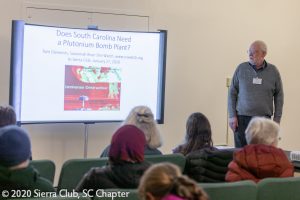 Columbia, South Carolina – A budget document released by the U.S. Department of Energy late on Wednesday, February 26 reveals that the agency has assumed a stunning projected cost of $4.6 billion to convert the poorly constructed plutonium fuel (MOX) building at the Savannah River Site into a Plutonium Bomb Plant (PBP). This amount of spending reveals that DOE and contractors aim to repurpose the failed MOX project into a perpetual money machine, according to the public interest group Savannah River Site Watch.
Columbia, South Carolina – A budget document released by the U.S. Department of Energy late on Wednesday, February 26 reveals that the agency has assumed a stunning projected cost of $4.6 billion to convert the poorly constructed plutonium fuel (MOX) building at the Savannah River Site into a Plutonium Bomb Plant (PBP). This amount of spending reveals that DOE and contractors aim to repurpose the failed MOX project into a perpetual money machine, according to the public interest group Savannah River Site Watch.
The budget document, the National Nuclear Security Administration’s funding request to Congress for Fiscal Year 2021, confirms that the agency is seeking $441 million for “repurposing” the MOX building into the unjustified Plutonium Bomb Plant.
US wants new nuclear weapons to counter Russia but says there is no arms race
Defense Department has pushed back on the notion that the US is engaging in an arms race or growing its nuclear arsenal, saying its latest moves are merely a response to Russian efforts
BY: RYAN BROWNE | cnn.com
Washington (CNN) During a visit to US Strategic Command last week, Secretary of Defense Mark Esper oversaw a “table top” war game exercise where Russian military forces used a “tactical” nuclear weapon against NATO territory during a conflict in Europe, prompting the US to launch a retaliatory nuclear strike.
“The scenario included a European contingency where you are conducting a war with Russia and Russia decides to use a low yield limited nuclear weapon against a site on NATO territory and then you go through the conversation that you would have with the Secretary of Defense and the President ultimately, to decide how to respond,” a senior Department of Defense official told reporters Friday.
Requested NNSA FY 2021 Funding for “Primary Capability Modernization”
(i.e. plutonium pits)
Bottom line: The National Nuclear Security Administration (NNSA) has requested $1.58 billion for expanded plutonium pit production in FY 2021 alone, when at least 15,000 pits are already stored at the Pantex Plant and independent experts have concluded that pits last at least a century (the average age now of pits in the active stockpile is less than 40 years). NNSA’s request is more than doubled from $712.4 million in FY 2020 for the comparable program “Plutonium Sustainment” that preceded Primary Capability Modernization.
No plutonium pit production is scheduled to maintain the safety and reliability of the existing stockpile. Instead, future pits will likely be heavily modified from tested designs for use in speculative new-design nuclear weapons. This could raise reliability issues and/or prompt the US to resume full-scale nuclear weapons testing.
Inside America’s newly revealed nuclear ballistic missile warhead of the future
“NNSA already has too much work on its plate to sustain. Accelerating development of yet another excessively ambitious program will only make that problem worse,” – Kingston Reif of the Arms Control Association
BY: AARON MEHTA | defensenews.com
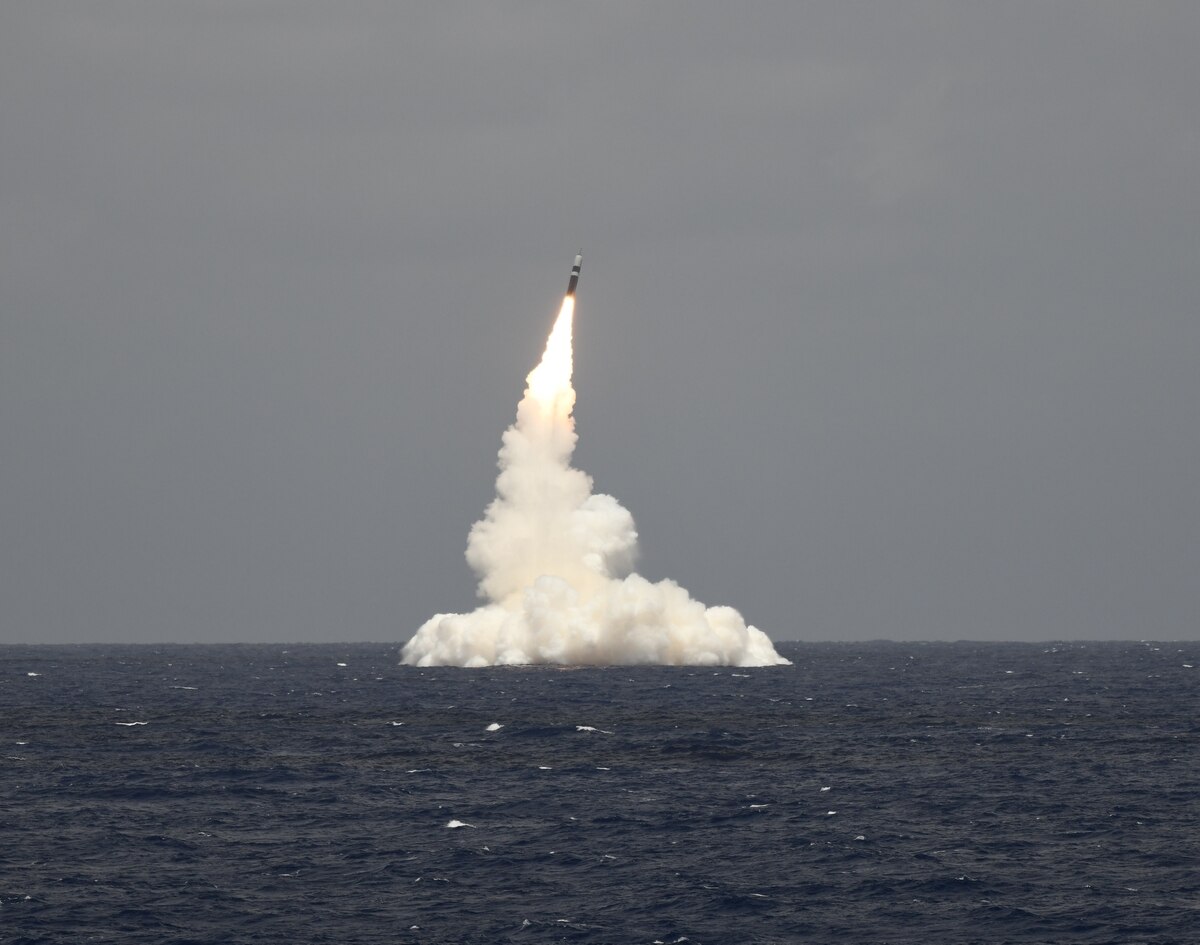
MINOT AIR FORCE BASE, N.D. — When the Trump administration’s budget request rolled out Feb. 10, eyebrows shot up within the nuclear community at the mention of a previously unknown warhead, listed in documents as the W93.
Now the Pentagon is revealing details about the weapon, what it will replace and when it might be deployed.
The labeling of the warhead as the W93 is important. Since the introduction of the W88 in the 1980s, all upgrades to warheads have been described as variants — for instance, the collapsing of several versions of the B61 gravity bomb into the B61-12. According to a senior defense official, the reason for the new designation comes from the reality that the warhead is largely a new design.
Feinstein, Colleagues to DOD: ‘Low-Yield’ Nuclear Weapons Not a Deterrent
PRESS RELEASE | feinstein.senate.gov
Washington—Senators Dianne Feinstein (D-Calif.), Patrick Leahy (D-Vt.), Bernie Sanders (I-Vt.), Tammy Baldwin (D-Wis.) and Elizabeth Warren (D-Mass.) today wrote to Defense Secretary Mark Esper questioning the decision to begin fielding W76-2 “low-yield” nuclear submarine-launched ballistic missile warheads.
“We write to express our concern about the recent decision to begin fielding the W76-2 low-yield nuclear submarine-launched ballistic missile warhead, a decision we do not support,” wrote the senators.
“It is inconsistent for the United States to begin fielding new nuclear weapons while we urge other countries not to do so. We should be focusing on diplomatic solutions, and we ask that you urge President Trump to extend New START before it expires next year in order to begin negotiating a successor treaty that addresses U.S. security needs.”
Full text of the letter is available here and below.
Senators Introduce Legislation to Counteract Trump Exit from Iran Deal
Iran Diplomacy Act calls for a diplomatic resolution to Iran’s nuclear program
PRESS RELEASE | markey.senate.gov
Washington (February 19, 2020) – Senators Edward J. Markey (D-Mass.), Dianne Feinstein (D-Calif.), Chris Van Hollen (D-Md.), Tammy Duckworth (D-Ill.), Bernie Sanders (I-Vt.), and Elizabeth Warren (D-Mass.) have introduced S.3314, the Iran Diplomacy Act, which calls upon the United States and Iran to return to no less than their commitments under the 2015 Joint Comprehensive Plan of Action (JCPOA), also known as the Iran nuclear deal. On January 14, 2020, France, Germany, and the United Kingdom triggered the JCPOA’s Dispute Resolution Mechanism in an attempt to address Iran’s breaches of the agreement, all of which followed the Trump administration’s unilateral exit from the deal on May 8, 2018.
Holes found in protective liner at SC nuclear fuel factory
Inspectors at the Westinghouse nuclear fuel factory near Columbia recently found 13 small leaks in a protective liner that is supposed to keep pollution from dripping into soil and groundwater below the plant.
ARTICLE BY SAMMY FRETWELL | thestate.com
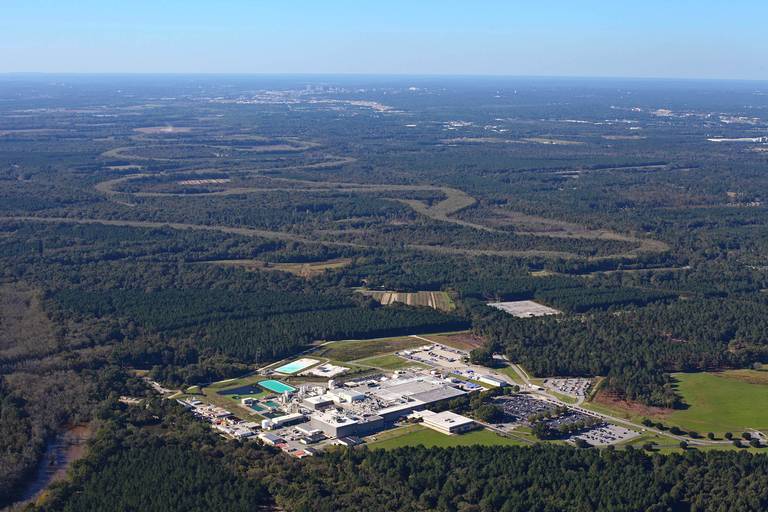
Now, the company plans to check a concrete floor beneath the liner, as well as soil below the plant, for signs of contamination that could have resulted from the tears, which were characterized in a federal inspection report as ‘’pinhole leaks.’’ The pinhole leaks, discovered by Westinghouse late in 2019, may have formed after company employees walked across the liner and weakened it, according to the U.S. Nuclear Regulatory Commission.
Delegation should support strong review of pit production
“”Awkward” was how a recent article by the Associated Press appropriately described the position of New Mexico’s liberal congressional delegation when it comes to environmental review of plans to ramp up production of plutonium “pits” at Los Alamos National Laboratory.”
Journal North Editorial Board, The Albuquerque Journal | February 16th, 2020 abqjournal.com
Production of plutonium pits, the triggers for nuclear weapons, is expected to resume at LANL, with a goal of making as many as 80 pits a year by 2030.
“Awkward” was how a recent article by the Associated Press appropriately described the position of New Mexico’s liberal congressional delegation when it comes to environmental review of plans to ramp up production of plutonium “pits” at Los Alamos National Laboratory.
Our Democratic elected officials in Congress are all, to varying degrees, considered strong supporters of environmental causes. On LANL, which produces radioactive waste and will produce much more when it starts making the grapefruit-sized cores of nuclear weapons on a grand scale over the next decade, they’ve walked something of a tightrope.
They want the billions of dollars in spending and the jobs that come with making pits for a historic (and historically expensive) upgrade of the nation’s nuclear weapons arsenal. They’ve even fought the idea of LANL having to share pit production with another national lab in South Carolina. They want all of the pits to be made in New Mexico.Continue reading
Proposed budget calls for $100 million cut in LANL cleanup
“To have a 46 percent cut in Los Alamos cleanup is stunning,” said Jay Coghlan, executive director of Nuclear Watch New Mexico. “We’ve got nuclear weapons on steroids and cleanup is the poor stepchild subject to the whims of DOE.”
BY: Scott Wyland swyland@sfnewmexican.com Feb 13, 2020 | Santa Fe New Mexican
Los Alamos National Laboratory’s long-term environmental cleanup program would be cut by $100 million under the U.S. Energy Department’s proposed budget for 2021.
The agency’s preliminary “budget in brief” shows a proposed 46 percent reduction in funding for the lab’s environmental management, which handles cleanup of legacy waste generated before 1999, including during the Manhattan Project and Cold War.
A mile-long, highly toxic chromium plume under the Sandia and Mortandad canyons and the massive radioactive waste buried in Area G are the results of shoddy disposal that occurred around the lab before environmental regulations were enacted in the 1970s.
Meanwhile, the Energy Department wants to increase spending by 25 percent on nuclear weapons to help meet the Trump administration’s goal of having LANL and Savannah River Site in South Carolina produce a combined 80 plutonium pits a year by 2030.
Nuclear waste site near Carlsbad opposed by New Mexico House committee vote
“These wastes are going to last for millions and millions of years. They are extremely toxic. The idea is to dispose of these in an area where there are gas and mineral resources. This is really not what New Mexico needs.” – Dave McCoy with Citizen Action New Mexico
ARTICLE BY: ADRIAN HEDDEN | currentargus.com
Legislation to oppose the transportation and storage of high-level nuclear waste in New Mexico cleared a State House committee as Holtec International continues to develop a plan to store such waste at a proposed facility near the Eddy-Lea county line.
House Memorial 21 was introduced by New Mexico Rep. Matthew McQueen (D-50) intended to prevent the controversial proposal that could see up to 100,000 metric tons of spent nuclear fuel rods stored on a temporary basis at the site in southeast New Mexico for at least 40 years.
The Trump Administration’s FY 2021 Request for the National Nuclear Security Administration
The Trump Administration is proposing a massive funding increase for the Department of Energy’s National Nuclear Security Administration (NNSA). At $19.8 billion, the request increases current NNSA funding by $3.1 billion, or 18.4 percent.
Article originally from taxpayer.net
NNSA funds all the Pentagon’s nuclear weapons-related activities, including weapons design, production, safeguarding the nation’s nuclear stockpile and clean-up of the government’s nuclear weapons sites. The NNSA budget does not fund the aircraft, submarines and missiles that make up the military’s nuclear “triad,” which are funded within the Pentagon’s annual budget.
In the FY 2021 request, the Department of Energy states that the additional NNSA funding is necessary to support the modernization efforts of U.S. nuclear forces called for in the 2018 Nuclear Posture Review.
Trump Proposes 25 Percent Bump in Nuke Spending
“Taxpayers in 2020 should not be forced to pay for a ticket back to nuclear weapons policies of the 1980s,” John Tierney, executive director of the Center for Arms Control and Non-Proliferation, said in a statement. Pit production funding wasn’t included in the overview. Energy Department officials said a full budget proposal would become available in the coming weeks.
“Globally, Trump’s nuclear weapons budget is fueling a new nuclear arms weapons race, particularly with a new plan for a new nuclear warhead,” said Jay Coghlan, executive director of New Mexico Nuclear Watch. “It solidifies Los Alamos lab’s future as a nuclear bomb plant, especially while nonproliferation, renewable energy and cleanup programs are held flat or cut.”
BY: SCOTT WYLAND |santafenewmexican.com
President Donald Trump is proposing a 25 percent increase in nuclear weapons spending that will include developing a new warhead for submarine-launched ballistic missiles, according to a preliminary 2021 budget overview released Monday.
The National Nuclear Security Administration, a semi-autonomous branch of the U.S. Energy Department, would see its budget increase by 18.4 percent to $19.8 billion next fiscal year, partly to ramp up production of plutonium pits at Los Alamos National Laboratory and Savannah River Site in South Carolina.
President’s Budget Calls for More Spending on Nuclear Production
Jay Coghlan of Nuclear Watch New Mexico, says that the budget request would allocate more taxpayer dollars to the country’s nuclear weapons programs since the Cold War ended 30 years ago.
“Globally Trump’s nuclear weapons budget is fueling a new nuclear arms race,” he said in a statement. “It solidifies Los Alamos Lab’s future as a nuclear bomb plant, while nonproliferation, renewable energy and cleanup programs are held flat or cut.”
BY: T.S. LAST |abqjournal.com
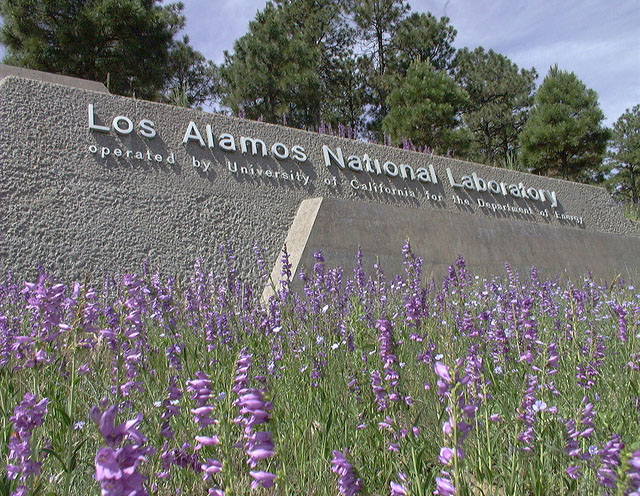
SANTA FE, N.M. — The National Nuclear Security Administration would get $19.8 billion under President Trump’s budget request for fiscal year 2021 — a 20% increase from this year’s budget — about half of which would go toward supporting the U.S.’s nuclear weapons programs.
According to a Department of Energy fact sheet distributed on Monday, $9.5 billion of NNSA’s budget would be put toward efforts to “sustain and modernize the U.S. nuclear stockpile.” Of that, $4.3 billion is earmarked for stockpile management and $2.5 billion is for production modernization to support production capabilities for nuclear weapons. That includes funds for equipment, facilities and personnel “to reestablish the Nation’s ability to produce (plutonium) pits.”
Trump Budget Calls for New Nuclear Warheads and 2 Types of Missiles
The president’s spending proposal requests money for a new arms race with Russia and China, and restores nuclear weapons as central to military policy.
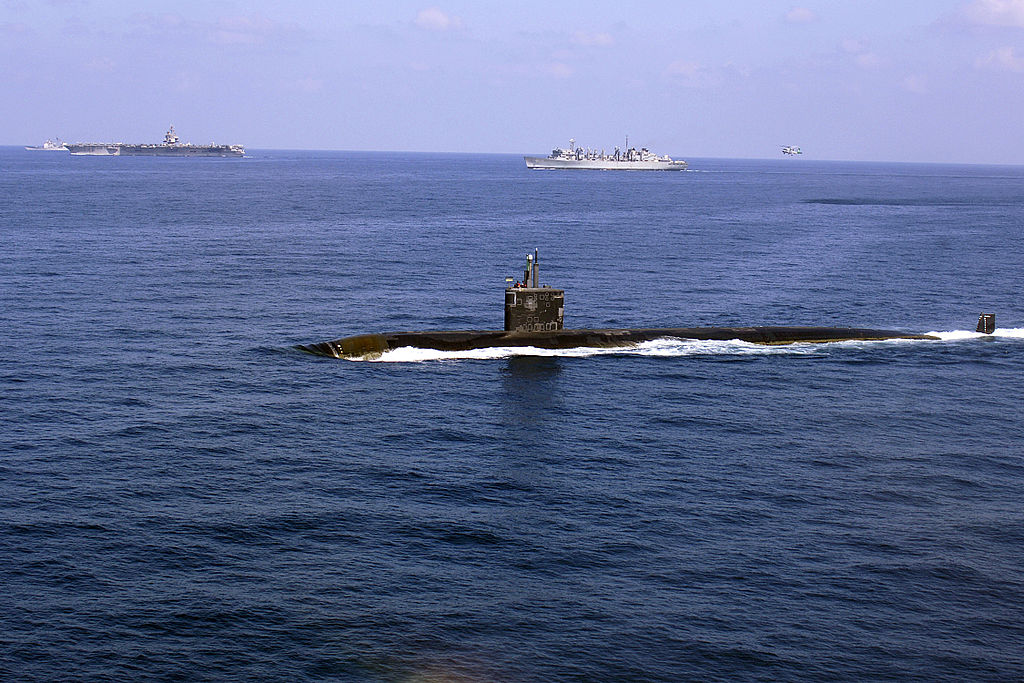
WASHINGTON — The Trump administration has begun to put a price tag on its growing arms race with Russia and China, and the early numbers indicate that restoring nuclear weapons to a central role in American military strategy will cost tens of billions of dollars over the next decade.
In the 2021 budget released on Monday, the administration revealed for the first time that it intended to create a new submarine-launched nuclear warhead, named the W93. Its development is part of a proposed 19 percent increase this year, to $19.8 billion, for the National Nuclear Security Administration, the Energy Department agency that maintains the nuclear stockpile and develops new nuclear warheads. More tellingly, that is a jump of more than 50 percent since 2017, President Trump’s first year in office.
Report: Triad had serious deficiencies in first year running Los Alamos lab
This article from the Santa Fe New Mexican is based on NNSA’s annual Performance Evaluation Reports (PERs) on contractor performance at its 8 nuclear weapons sites. NukeWatch New Mexico successfully sued in 2012 to get these reports publicly released. However, NNSA is now releasing only 3-page summaries, citing security concerns to at least one reporter. This is a baseless excuse given there has never been anything classified in the PERs.
“The federal evaluation points to Triad’s repeated breakdowns in oversight and safety issues while declaring that the contractor’s so-called accomplishments only slightly outweighed these chronic issues,” Jay Coghlan, executive director of Nuclear Watch New Mexico, said in a statement. “A rating of ‘good’ is simply not good enough as the lab aggressively expands the production of radioactive plutonium bomb cores for the new nuclear arms race,”
BY: SCOTT WYLAND | santafenewmexican.com
The consortium of nonprofits that operates Los Alamos National Laboratory struggled with safety, security and waste-management problems during the first year of its contract, including the accidental release of highly flammable cesium that required a multimillion-dollar cleanup, said an annual federal report card.
Putin wants to extend arms control. What’s Trump waiting for?
“Arms control takes political willpower. Binding and verifiable treaties are worth the effort. The weapons themselves are as cataclysmic in their power as ever. Have we lost the willpower to keep them in check?”
EDITORIAL BOARD | washingtonpost.com
The clock is ticking toward expiration of the last major nuclear arms control treaty, New Start, which will end a year from now if not extended by the United States and Russia. Should it lapse, the path will be open to another dangerous arms race, hardly what the world needs. Right now, all signs are pointing in the wrong direction.
WIPP Notes Need for Infrastructure Upgrades
DOE hopes to ramp up shipments of nuclear waste to NM repository
BY: ADRIAN HEDDEN | abqjournal.com
Officials from the U.S. Department of Energy are hoping to ramp up shipments of nuclear waste to the Waste Isolation Pilot Plant near Carlsbad to about 17 per week by 2023. The facility is currently accepting about 10 per week. To meet the goal of increasing shipments, Acting Manager of the DOE’s Carlsbad Field Office Greg Sosson said numerous ongoing infrastructure upgrades at the facility were needed.
“Infrastructure ages. We understand we have a lot more waste stream we’re going to tackle,” Sosson said. “These are really good projects to make sure WIPP is sustainable in the future so we can perform our important mission.”
Sosson, at Monday’s annual WIPP Legislative Breakfast in Santa Fe, said officials plan on WIPP accepting up to 350 shipments of transuranic nuclear waste in the next year from numerous DOE facilities, including 80 from Los Alamos National Laboratory and 195 from Idaho National Laboratory.
But to continue to accept waste at an increasing pace, Sosson said the facility must solve its airflow problem.
Nuclear News Archives – 2019
‘Trump Could Hardly Have Chosen a Worse Moment’
In a DER SPIEGEL interview, German Foreign Minister Heiko Maas laments America’s rejection of multilateralism and says that Donald Trump does not view the U.S. as the leading power among liberal democracies. He’s hoping to save the INF.
Interview by CHRISTIANE HOFFMAN and CHRISTOPH SCHULT | spiegel.de
DER SPIEGEL: Mr. Minister, United States President Donald Trump has turned against a global order based on international rules and agreements. In response, you called for the creation of an “Alliance of Multilateralists” last summer. How is that alliance coming along?
Maas: It’s growing. Many countries are seriously concerned that the principle of might makes right is once again being applied internationally.
Donald Trump’s Space Missile Plan Is Too Expensive and Will Not Work, Just Like His Border Wall, Experts Say
President Donald Trump’s new global missile defense plan would be too expensive and technologically taxing to effectively implement, leading experts have said.
The president unveiled his 2019 Missile Defense Review, the first of its kind since 2010, during an address Thursday at the Pentagon. He pledged to virtually eliminate any external threat to the United States, vowing to “to ensure that we can detect and destroy any missile launched against the United States anywhere, anytime.”
Commenting on this statement specifically, Ploughshares Fund think tank director Joseph Cirincione said during a press call that this “is simple to say, impossible to do.”
“If you liked the president’s border wall, wait until you see his space wall,” Cirincione, who also served as a professional staff member of House Armed Services Committee and Government Operations Committee responsible for congressional oversight of missile defense programs in the 1980s and early 1990s, added. “This is a complete fantasy.”
Advocacy Groups Go to Court to Stop WIPP Waste Volume Accounting Change
“Rather than pursuing the permit modification, the Department of Energy should comply with the legal capacity limit and begin a public process to explain what additional waste it wants to bring to WIPP and how it intends to address the loss of disposal space that cannot be used because of the significant underground contamination,” said Scott Kovac, operations and research director of NukeWatch.
BY: WAYNE BARBER
Two advocacy groups in New Mexico filed a legal appeal Thursday seeking to undo a New Mexico Environment Department order that allows the Energy Department to change the way it records underground transuranic waste volume at its Waste Isolation Pilot Plant (WIPP) near Carlsbad.
The Southwest Research and Information Center (SRIC) and Nuclear Watch New Mexico (NWNM) filed their notice of appeal in the New Mexico Court of Appeals to block the modification to WIPP’s state hazardous waste permit.
While it technically takes effect this month, as a practical matter the new counting system won’t be instituted right away because DOE has not drafted its policy on implementation, said SRIC Administrator Don Hancock by email.
A Dec. 21 order from then-state Environment Department Secretary Butch Tongate authorized DOE to stop recording empty spaces between container drums as waste. The order adopted the findings of state Hearing Officer Max Shepherd, who recommended waste volume counted against the disposal cap set by the 1992 WIPP Land Withdrawal Act should cover only the actual waste inside containers.
Appeal Targets Permit Change for US Nuclear Repository
By Associated Press | Thursday, January 17th, 2019 at 12:33pm
ALBUQUERQUE, N.M. — Watchdog groups are appealing a recent permit change approval by New Mexico regulators that could ultimately allow for more waste to be placed at the U.S. government’s only underground nuclear waste repository.
The approval by the state Environment Department came in the final days of former Gov. Susana Martinez’s administration. The change was requested earlier by the U.S. Energy Department and the contractor that operates the Waste Isolation Pilot Plant.
The permit modification changes the way the volume of waste is calculated. Specifically, it excludes the empty space inside waste packaging containers.
The Southwest Research and Information Center and Nuclear Watch New Mexico argue the modification is unlawful.
Critics also are concerned the change could be a first step in expanding the repository’s mission to hold other kinds of waste.
Smith Statement on Trump Missile Defense Review
Washington, DC – Today, House Armed Services Committee Chairman Adam Smith (D-WA) released the following statement about the Trump administration’s Missile Defense Review:
“The missile defense policy of the United States must follow some key principles.”
“First, it is essential that we ensure we are spending money on programs that are reliable and rigorously tested before they are deployed. We need to know that we are putting scarce taxpayer dollars to good use, for example improving reliability of the current system, rather than rushing to buy and deploy unproven missile defense systems. It is common sense to insist on this principle when it comes to programs that protect the American people and our allies, particularly in the context of the growing North Korea threat.
“Second, we must avoid missile defense policies that will fuel a nuclear arms race. Strategic stability is an essential component of U.S. national security, and it does not serve our long-term interest to take steps that incentivize Russia and China to increase the number and capability of their nuclear weapons.
“While it is essential that we continue investing in proven missile defense efforts, I am concerned that this missile defense review could lead to greater investment in areas that do not follow these principles, such as a space-based interceptor layer that has been studied repeatedly and found to be technologically challenging and prohibitively expensive.
“Moreover, we must consider missile defense and effective arms control policy as part of our deterrence capabilities. I am gravely concerned about President Trump’s broader strategy to withdraw us from international arms control agreements, dismiss allies, and expand the role of nuclear weapons in U.S. defense policy, which could further siphon funding from much-needed budget priorities and exacerbate a new nuclear arms race.”
armscontrol.org | January 17th, 2019
The Trump administration’s long-awaited Missile Defense Review, which was released today, proposes a significant and costly expansion of the role and scope of U.S. missile defenses that is likely to exacerbate Russian and Chinese concerns about the threat to their strategic nuclear deterrents, undermine strategic stability, and further complicate the prospects for additional nuclear arms reductions.
Of particular concern was President Donald Trump’s statement during his remarks at the Pentagon that the goal of U.S. missile defenses is to “ensure we can detect and destroy any missile launched against the United States anywhere, anytime, anyplace.” This would be a costly, unachievable, and destabilizing departure from longstanding policy and contradicts the text of the review, which limits U.S. homeland missiles defense to their traditional role of defending against limited attacks from North Korea or Iran. Continue reading
US to Begin INF Treaty Pullout Next Month After Russia Missile Talks Fail
Officials reject Russian offer to inspect new missile; US says it will suspend observance of treaty on 2 February.
By JULIAN BORGER in Washington theguardian.com | Wed 16 Jan 2019 18.29 EST
Sergei Lavrov, Russia’s foreign minister, accused the US of intransigence.Photograph: Pavel Golovkin/AP
The US has rejected Moscow’s offer to inspect a new Russian missile suspected of violating a key cold-war era treaty, and warned that it would suspend observance of the treaty on 2 February, giving six-month notice of a complete withdrawal.
The under-secretary of state for arms control and international security, Andrea Thompson, confirmed the US intention to withdraw from the treaty after a meeting with a Russian delegation in Geneva, which both sides described as a failure.
Nuclear arms treaty faces collapse after failed US-Russia talks
By BEN SIMON/ AP channelnewsasia.com
Geneva (AFP) – The survival of a key nuclear arms control treaty was cast further in doubt Tuesday after the US and Russia blamed each other for pushing the agreement to the brink of collapse.
Senior diplomats from both countries met in Geneva amid widespread concern over the fate of the bilateral Intermediate-Range Nuclear Forces Treaty, which successfully put an end to a mini-arms race after it was signed in 1987.
US President Donald Trump said in October that his country would pull out of the deal unless Russia stops violating it. Russian President Vladimir Putin has threatened to develop nuclear missiles banned under the treaty if it is scrapped.
Permit Changes at WIPP Face Challenges
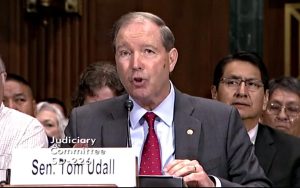
By Mark Oswald | Journal Staff Writer
abqjournal.com | Sunday, January 13th, 2019 at 12:01am
U.S. Sen. Tom Udall is encouraging Gov. Michelle Lujan Grisham’s new administration to reconsider a state government decision made just before she took office Jan. 1 that changes how radioactive waste volume is measured at the Waste Isolation Pilot Plant, in effect allowing more waste to placed in the underground repository near Carlsbad.
Udall said last week that limits on how much waste WIPP can hold were critical to federal-state negotiations that led to WIPP’s creation “and were a major reason New Mexico agreed to this mission in the first place.”
“I am encouraging the new administration to take a hard look at this action, and hopeful that it will pause and reconsider this last-minute change that has major ramifications for our state,” the senator said in an email statement.
The controversial state permit modification for WIPP, approved by then-New Mexico Environment Department Secretary Butch Tongate on Dec. 21, changes the way waste volume is calculated to exclude empty space inside waste packaging. With the alteration, WIPP becomes only about a third full instead of 50 percent full.
Continue reading
More Nuclear Waste Coming to New Mexico
Albuquerque Journal
By Mark Oswald / Journal Staff Writer
Sunday, January 13th, 2019 at 12:01am
U.S. Sen. Tom Udall is encouraging Gov. Michelle Lujan Grisham’s new administration to reconsider a state government decision made just before she took office Jan. 1 that changes how radioactive waste volume is measured at the Waste Isolation Pilot Plant, in effect allowing more waste to placed in the underground repository near Carlsbad.
Udall said last week that limits on how much waste WIPP can hold were critical to federal-state negotiations that led to WIPP’s creation “and were a major reason New Mexico agreed to this mission in the first place.”
An inspector monitors radiations around containers at Los Alamos National Laboratory in 2003 prior to shipping nuclear waste to the Waste Isolation Pilot Plant near Carlsbad. New Mexican file photo; Drums of transuranic waste are stored inside a salt cavern at the Waste Isolation Pilot Plant in Carlsbad in 2006. Los Angeles Times file photo
By Rebecca Moss rmoss@sfnewmexican.com
santafenewmexican.com | Jan 5, 2019 Updated Jan 6, 2019
In the final days of Republican Gov. Susana Martinez's administration, the state Environment Department approved a controversial change to how federal officials measure the amount of nuclear waste buried some 2,000 feet underground in Southern New Mexico salt beds.
Proponents of the change say it merely clarifies that the storage site will measure the actual volume of transuranic waste deposited there rather than the volume of the massive exterior waste drums, called overpack containers — and the air inside. But critics say the result will be an increase in the quantity of material stored at the U.S. Department of Energy's Waste Isolation Pilot Plant near Carlsbad.
Several nuclear watchdog groups, which say they intend to appeal the decision, also fear the change in WIPP's hazardous waste permit from the state could open the door to allowing high-level nuclear waste to be brought into New Mexico.
Jon Kyl Voted for New Nukes After Taking Payments From Nuclear Company
The senator-turned-lobbyist-turned-senator-turned-lobbyist had a paid board seat at one nuclear company and lobbied for two others. Then he joined the Senate.
WASHINGTON, DC – SEPTEMBER 05: U.S. Sen. John Kyl (R-AZ) awaits Vice President Mike Pence before a mock swear-in ceremony on September 5, 2018 in Washington, DC. The former senator Kyl was tapped by Arizona Gov. Doug Ducey to replace the late Sen. John McCain. (Photo by Zach Gibson/Getty Images)By Alex Kotch readsludge.com | JAN 10, 2019 4:10PM EST
After almost 30 years of a program to clean up dangerous defense waste at the Hanford nuclear site in southeastern Washington, the Department of Energy now wants to change the rules to make the job easier and save money. If approved, the proposal poses new dangers to the health and safety of people and the environment — not just in southeastern Washington, but at nuclear sites around the country.
After Sen. John McCain’s death in August 2018, Arizona Gov. Doug Ducey appointed former Republican Senator Jon Kyl to replace him—despite Kyl having spent years lobbying his former colleagues for an array of defense, utility, nuclear, tech, and social media companies that have business before the chamber. Government watchdogs warned of potential ethics issues, but Kyl was allowed to step aside from his K Street job and work on legislation without acknowledging conflicts of interest or recusing himself.
News broke on Monday that Kyl is rejoining his previous employer, lobbying firm Covington & Burling, after his four-month stint in the Senate.
Renew Nuclear Arms Control, Don’t Destroy It
By Andrew Lichterman and John Burroughs
Andrew Lichterman is Senior Research Analyst for Western States Legal Foundation, based in Oakland, California. John Burroughs is Executive Director of Lawyers Committee on Nuclear Policy, based in New York City.
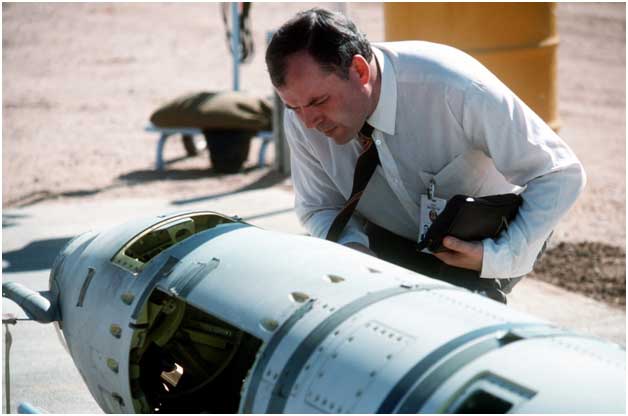
ipsnews.net | NEW YORK, Jan 2 2019 (IPS)
A hard-earned lesson of the Cold War is that arms control reduces the risk of nuclear war by limiting dangerous deployments and, even more important, by creating channels of communication and understanding. But President Donald Trump and his National Security Advisor John Bolton appear to have forgotten, or never learned, that lesson.
In late October, Trump announced an intent to withdraw from the Intermediate-Range Nuclear Forces (INF) Treaty. Secretary of State Mike Pompeo subsequently stated that the US will suspend implementation of the treaty in early February. While US signals have been mixed, initiation of withdrawal at that point or soon thereafter appears likely.
Don’t let feds change the rules for cleaning up Hanford nuclear waste
The public can comment on the U.S. Department of Energy’s proposed changes to Hanford nuclear waste cleanup rules until Jan. 9.
A sign warns of high levels of radiation near a valve at the “C” tank farm of the Hanford Nuclear Reservation near Richland. (AP Photo / Ted S. Warren, 2014)By Tom Carpenter
NukeWatch NM and Hanford Challenge are both members of the Alliance for Nuclear Accountability.
seattletimes.com | Originally published January 2, 2019 at 3:11 pm
After almost 30 years of a program to clean up dangerous defense waste at the Hanford nuclear site in southeastern Washington, the Department of Energy now wants to change the rules to make the job easier and save money. If approved, the proposal poses new dangers to the health and safety of people and the environment — not just in southeastern Washington, but at nuclear sites around the country.
In 1943, the U.S. government built the massive complex at Hanford to manufacture plutonium for nuclear weapons. When defense production ceased in 1986, its nine reactors had produced enough material for 60,000 atomic bombs. What remains is North America’s most contaminated site — more than half a billion gallons of nuclear waste and toxic chemicals stored in leaking tanks and dumped into the ground.
New LANL director: Community relations is a priority
BY MARK OSWALD / JOURNAL STAFF WRITER
Sunday, January 6th, 2019 at 12:02am
The new director of Los Alamos National Laboratory says that, along with the lab’s nuclear weapons missions, its science and engineering efforts, and upgrading operational functions, community relations will be a key piece of LANL’s agenda under new operator Triad National Security, LLC.
LANL’s ex-operator cited for another safety violation
BY MARK OSWALD / JOURNAL STAFF WRITER
Friday, January 4th, 2019 at 11:02pm
SANTA FE – The nuclear security wing of U.S. Department of Energy has issued preliminary notice of a “serious” safety violation for a 2017 mishap at Los Alamos National Laboratory that the DOE previously described as a “near miss to a fatality.”
Nuclear News Archives – 2018
Nothing Found
It seems we can’t find what you’re looking for. Perhaps searching can help.


